
THE LEXINGTON LINE A/W 22 • vol 9 • no 1
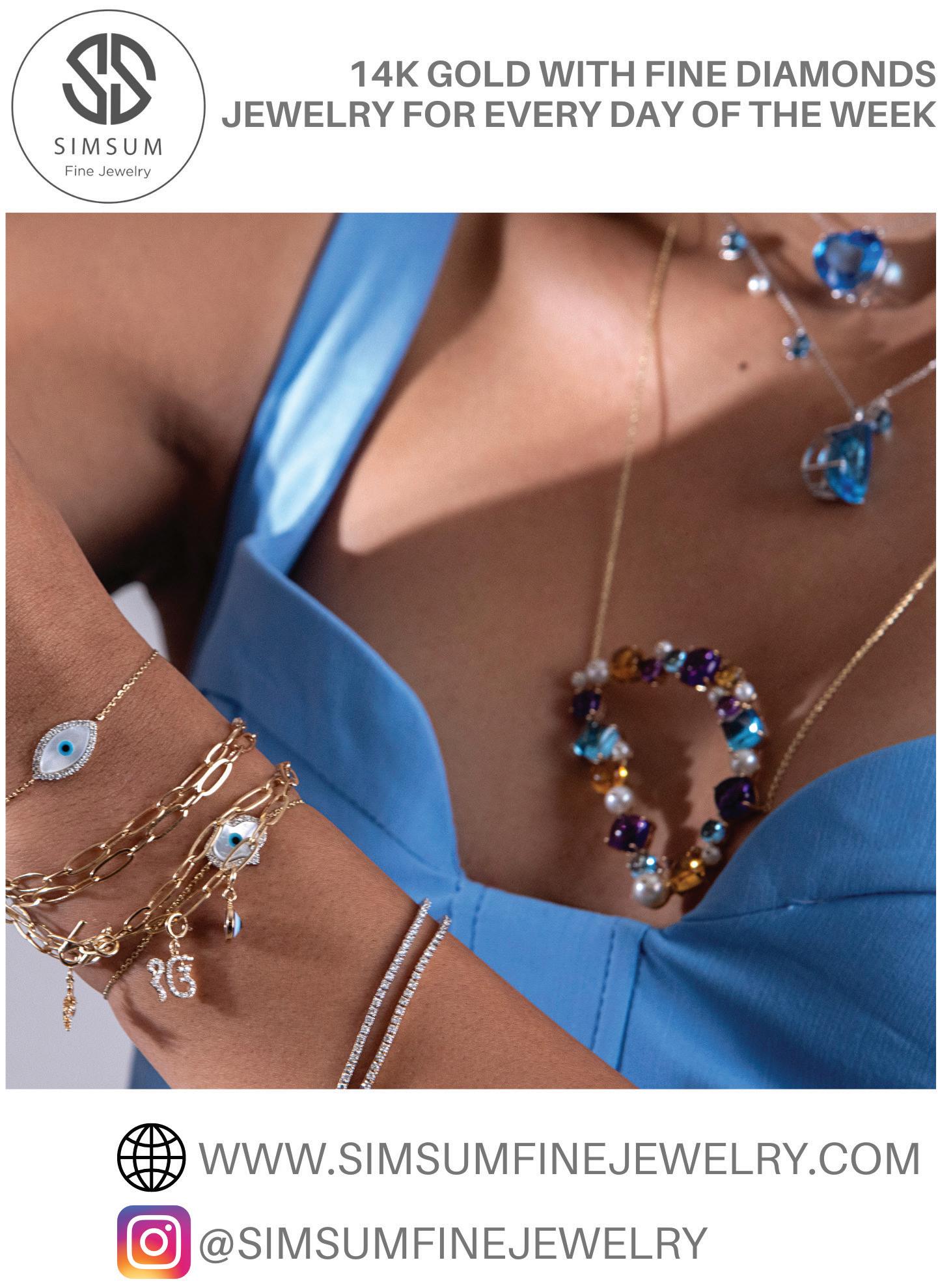
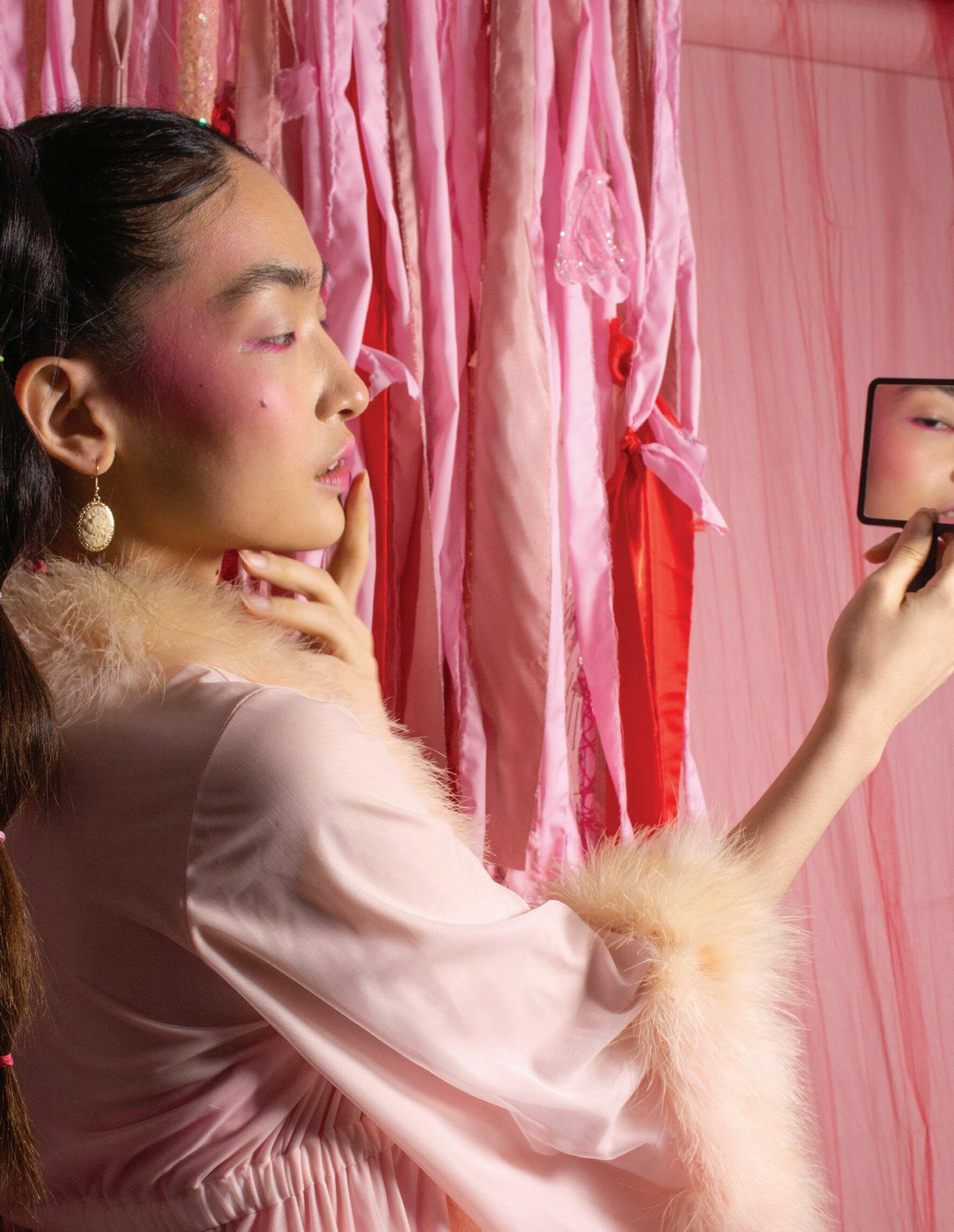
TABLE of contents 03 Masthead 05 Editors’ Letter 12 Color Pages 22 Runway Report 28 Beauty Buys 96 Editors' Picks 100 Student Style THE USUALS 06 A Man's World 24 Culture, Not a Costume 32 Cool Girl Crisis 36 Three Poems CULTURE & NEWS 14 Treasure Hunt 30 Less is More 40 Fatally Feminine 84 Accessory Addict FASHION 76 Show Your Shadow LIFESTYLE 18 What the FDA!? 78 Dirty Discourse 86 Catharsis BEAUTY
 White Editor in Chief
Hannah Szwast Managing Editor
White Editor in Chief
Hannah Szwast Managing Editor
Elara Montana Editorial Director
Dezire Pestano Creative Director
Katlen Guzman Web Creative DIRECTOR
Angelika Cwiklewski Marketing Director
Sofia Naranjo FASHION Director
Emma DeFelice beauty Director
Sohl Garibaldo Styling Director
Ashanty Rivera Accessories Isabella Ortiz Beauty Sabrina Stott Culture Lauren Smelker Fashion Mia Sherman Lifestyle Editors
Raquel Hines Production Director
Sian Jackson Assistant creative DIRECTOR
Selena Garcez Chloe Padilla Danny Lucas Lola Spring William Neer Amanda Thompson Graphic Designers
Lauren Davison Poheng Lee Karlene Fabian Gurman Thabel PROP DESIGNERS
Nicalina Del Rosario Carly Gabriel Jaedyn Frasnelli Ellen Gasper Photographers
Brianna Cacioppo Carly Gabriel Chelsea DeMaille Julia (Lolo) Herrera STYLING ASSISTANTS
Abigail Hennessey Web Director
Kristine Bakker Kylie Maddox Zoe Tullo Web Editor
Anna Abraham Meghan Mattina Kendra Deangelis Eleonora Skomorovskaya Tayla Marsh Marketing & Social Media
Kashish Khemlani social media director
Professor John Deming Professor Joseph P. Sgambati III Faculty Advisors
Dr. Daniel Chaskes Arts & sciences Department Chair
Kaylyn
Montgomery ASSISTANT STYLING DIRECTOR
Michael Londrigan, Associate Professor & Chair of Business Elizabeth Marcuse, President of LIM College SPECIAL THANKS
Sarah Albert • Natessa Aldridge • Caitlyn Mae Araña • Christopher Barto Khayla Biscoe • Amie Blumberg • Dani Brand • Laura Cioffi • Kally Compton • Michael Donohue • Meredith Finnin • Professor Timothy Foran Erica Fouts • Tiffany Fuentes • Professor Gavin Goldstein • Laura Healy Curtis Hoover • Samantha James • Maranda Janky • Dr. Kenneth Kambara • Professor Grailing King • Professor Laurel Lueders • Eric Martin • Michael Meyer • Maurice Morency • Gail Nardin • Michelle Ng Kristina Ortiz • Schuyler Osgood • Pheanny Phen • Professor Donna Pulese-Murphy • Olga Raganelli • Monica Rakocy • Dr. Lisa Springer Gilbert Stack • Travis Stephens • Professor Liz Sweibel • Dr. Alex Symons Sabrina Talbert • All LIM College Faculty
All contributors to The Lexington Line MANY THANKS
The Lexington Line is a registered trademark of LIM College
The Lexington Line • A/W 22 • vol 9 • no 1 3
Emily
masthead


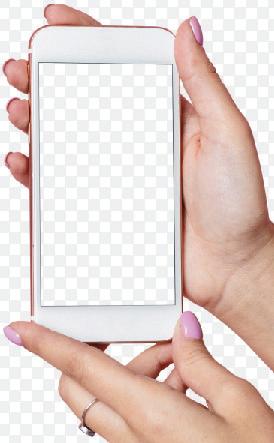

Is Religion Take a bite into NYC’s local and exclusive restaurants with your favorite food blogger, Kash. Follow HER on Instagram @food_is_religion #KASHISHUNDRY
Food
Dear Readers,


In your hands, you now have the 17th issue of The Lexington Line. Our team is led by women, so this issue is very personal to us. With the political climate surrounding the overturn of Roe v. Wade, we wanted to bring our readers an edition that speaks to women’s issues.
In these pages, we highlight multiple facets of the female experience. We have articles that touch on female beauty standards, infertility, and the laws being unjustly placed on our bodies. Femininity is often associated with being soft and fragile, so we wanted to juxtapose norms with our fashion editorial spread. We were able to utilize the campus's photo studio to create multiple sets that feature hues of pink, red, and black. Our styling team pulled structured garments such as blazers and trousers along with conventionally feminine pieces such as slip dresses and heels to show the duality of womanhood.
To be a woman is everything. To be a woman is to be messy, neat, imperfect, beautiful, quiet, loud, dramatic, calm. We’re more than just the labels you place on us.


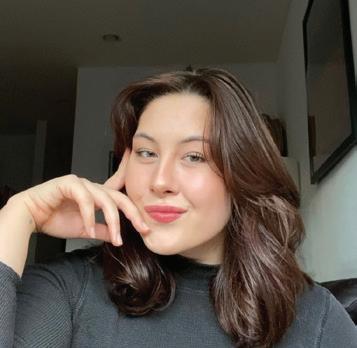
And with that, we hope you enjoy the latest issue of The Lexington Line.
editors’ Letter



The Lexington Line • A/W 22 • vol 9 • no 1 5
Always, The Editors
Elara Montana EDITORIAL DIRECTOR
Dezire Pestano CREATIVE DIRECTOR
Hannah Szwast MANAGING EDITOR
Emily White EDITOR IN CHIEF
6 The Lexington Line • A/W 22 • vol 9 • no 1
Our Country’s Stance On Women Takes A
Dark, Regressive Turn
 By: Emily White
By: Emily White
The Lexington Line • A/W 22 • vol 9 • no 1 7
This article addresses a range of difficult topics pertaining to women’s reproductive health.
Thedate is June 24th, 2022. I am sweating bullets at my retail job, a clothing boutique in West Hampton Beach—a place where filthy rich city livers come to soak up the summer's rays while working out their credit cards on Main Street.
But for me, Westhampton Beach is where I have to greet everyone with a smile on my face while they parade through the store, throw clothes all over the place, and on multiple occasions, call me fat.
On this particular day, the store was pretty empty. The room felt cool without any sweaty bodies running around. The smell of coconutscented sunblock and bay water filled in the gaps, reminding me that there was a beautiful beach right outside.
I sat there with my co-worker, Maggie, likely complaining about the woman who told me all our clothes are ugly. All of a sudden, today’s most reliable news source, the one your iPhone provides, displayed a banner on my screen.
“Roe v. Wade Has Been Overturned by the Supreme Court,” it read.
Roe v. Wade? I was dumbfounded. I looked to my right to find Maggie with her mouth agape and tears in her eyes.
If I had to describe this moment in the nicest way possible, what we felt was pure terror. Terror for ourselves, our children, and the women around the country who won’t have access to safe and legal abortions.
Enacted in 1973, Roe v. Wade allowed women access to abortions. At the close of this case, the United States Supreme Court found that “unduly restrictive state regulation of abortion is unconstitutional,” Brittanica reports.
I decided to look up a picture of our current Supreme Court. I will admit, before the overturn, I kept up little with politics.
But is this really politics?
My Google search results did not surprise me. Seven men. Two women. Need I say more?
I did what every Gen Z member does when there's political uproar—I posted about it on my Instagram story. I shared links to donate
to states that banned abortions and posted in support of women everywhere—but it didn’t feel like enough. Or anything, really.
So I began to read. I read and read and read until these horror stories made my brain feel like a time bomb: one more story, and I would explode.
The New York Times reports that 13 states have fully banned abortions: Idaho, South Dakota, Texas, Wisconsin, Oklahoma, Missouri, Arkansas, Louisiana, Mississippi, Alabama, Tennessee, West Virginia, and Kentucky.
Georgia has banned abortions after six weeks of pregnancy. Florida, North Carolina, Arizona, and Utah have banned abortions after 15-20 weeks.
20.9 million American uteruses have been restricted, reports the Washington Post. 20.9 million women will face the risk of an unwanted pregnancy or an illegal, possibly unsafe abortion.

“The World Health Organization estimates that 30 women die for every 100,000 unsafe abortions in developed regions, while 220 women die for every 100,000 unsafe abortions in developing regions, where abortion access is limited or impossible,” reports News Nation Today. “The term ‘unsafe’ refers to both self-induced methods and illegal procedures performed by non-physicians.”
The Supreme Court has attempted to silence 167.5 million American voices.
I read about a 16-year-old girl identified as Jane Doe. She is pregnant and orphaned, living in Flordia, a state that banned abortions after 15 weeks of pregnancy.
A Florida court denied Jane, a minor, her bodily right. The court ruled that “she is not mature enough to make that decision,” per NPR.
But is she mature enough to carry a child without any support?
I also read about a 10-year-old rape victim in Ohio. In July 2022, she was raped by Gerson Fuentes and ultimately impregnated.
The 10-year-old stood in front of an Ohio court and was told that she could not have an abortion, though Ohio allows the procedure.
8 The Lexington Line • A/W 22 • vol 9 • no 1
Forbes reveals that the child was forced to travel to Indiana, where she was able to have an abortion via RU-486, which consists of two separate doses of mifepristone and misoprostol.
The bodies of rape and incest victims are not free. The bodies of women are not free.
Over the days, weeks, and months that followed the overturn, it felt like every other day a new company was making a statement in support of abortion rights—in support of women.
In response to the overturn, “several leading companies like Apple, Citigroup, Netflix, and Salesforce are expanding healthcare benefits.”
In today's climate, it is hard to say if these brands are just trying to keep up appearances, but the more people speaking out about this injustice, I thought, the better.
I decided to go to Washington Square Park on a warm, late September day. The sun was beaming, but I felt cold. I wanted to talk to people about how they’ve been feeling since the overturn.
Pacing around the park in circles, I found myself filled to the brim with anxiety. I dodged people left and right, avoiding asking them any questions.
Just go up to somebody, I thought. Why can’t I do this?
I noticed a vigil for Mahsa Amini decorated the park’s famous arch.
I had read about Amini in the New York Times a few days prior to this. She was a Muslim woman that was beaten to death by the Iranian morality police for breaking the nation’s hijab laws.
The Supreme Court has attempted to silence 167.5
million American voices.
As a New York resident, I still have access to safe abortions. But my heart still aches for my sisters. American hearts are aching. The world as a whole is aching.

The outcome of the Roe v. Wade decision affects women across the United States, but especially underserved groups.
“Many of these states are in the South, which has large shares of Black and Hispanic women, the Plains, which has a large Indigenous population, and the Midwest,” states the Kaiser Family Foundation, a nonprofit focused on health policy analysis. “To obtain an abortion, women in states that prohibit abortions would likely have to travel out of state, which will result in disproportionate barriers to accessing abortions for people of color.”
Reading about her and seeing graphic images of her in the hospital had made my stomach turn.
There were three young Muslim girls standing around the vigil. They were holding signs that requested donations in support of Mahsa Amini and Muslim women as a whole. I decided to talk to them about Amini, and I donated to the cause.
The teenage girls told me about the lack of rights women have in countries such as Iran. They aren’t able to drive, can’t attend college, and must always be covered in public.
The overturn of Roe v. Wade is their issue too, I thought.
“I am honestly really scared for my future,” one of the 15-year-old girls told me.
The Lexington Line • A/W 22 • vol 9 • no 1 9
She had a blank expression on her face. There was no trace of exaggeration.
Another told me she is scared to be in sexual situations because of this. Though the overturn hasn’t restricted contraceptives— yet—it is still just as easy to get pregnant.
“We are forcing women that can’t afford homes for their children to start their lives when they are far too young,” the teen expressed. “We are also forcing them to run away and have unsafe abortions.”
“We need to keep talking about it,” the girls kept saying. “We need to keep talking about it.”
Roe v. Wade is not only an American problem, it is a global one. Banning abortions in a country that is famously “free” sets a precedent for other modernized countries.
Overturning Roe v. Wade tells countries that don’t allow women access to education, that brutally beat them for breaking clothing laws, that it’s okay because America is doing it too.
I started to think about women around the world. I thought about FGM in some African, Asian, and Middle Eastern countries.
FGM is female genital mutilation. The World Health Organization explains that FGM “involves the partial or total removal of external female genitalia or other injury to the female genital organs for nonmedical reasons.”
Bishara Sheikh Hamo, a Kenyan woman, told the BBC that she underwent this process at 11 years old. She was told that FGM would make her “pure.”
Though this is a cultural practice in many countries, it can be extremely harmful to the physical and mental health of women because the procedure is done in their adolescent years.
“Women with FGM/C often show signs of psychological trauma: anxiety, somatization, depression, post-traumatic stress and other mood disorders,” FGM/C Toolkit reports.
The overturn affects these women as well. It helps normalize the attitude that
a woman’s body is subject to the design of her government.
I read a short story titled “America” by Chinelo Okparanta. The story is about an LGBTQ+ Nigerian woman named Nnenna. Her family was critical of her sexuality because they believed that as a lesbian, she could not start a family.
Okparanta seamlessly compares the environmental devastation of Nigeria to fertility. Since Nnenna is a part of the LGBTQ+ community, her family feels there is a loss of fertility.
At one point in the story, her father says, “The seed cannot be planted.”
The fetishization of family is a major contributor to the overturn of Roe v. Wade. Queer theorist Lee Edelman coined the phrase “Reproductive Futurism” in 2004. This concept “places all future hope upon children,” reveals the Manifold Organization.
Notoriously, women around the world are expected to provide children. The idealistic pro-life family will be plentiful with them, but this is not feasible for all women.
The CDC reveals that one in five American women are not able to have children due to fertility issues such as PCOS, Endometriosis, Pelvic Inflammatory Disease, and many other conditions.
Fetishizing families puts pressure on women to reproduce despite any financial, medical, or emotional complications.
These expectations dehumanize the female experience, turning them into an incubator rather than a person.
If the Supreme Court stripping away the rights of American women has not affirmed that history is bound to repeat itself, I am not sure what will.
Overturning the infamous Roe v. Wade case has raised questions about LGBTQ+ and human rights in general. And it seems like they’re just getting started.
The center will not hold.
10 The Lexington Line • A/W 22 • vol 9 • no 1
The Lexington Line • A/W 22 • vol 9 • no 1 11 Resources The National Network of Abortion Funds 877-257-0012 American Civil Liberties Union (ACLU) 212-549-2500 Center for Reproductive Rights 917-637-3600 Indigenous Women Rising 505-398-1990


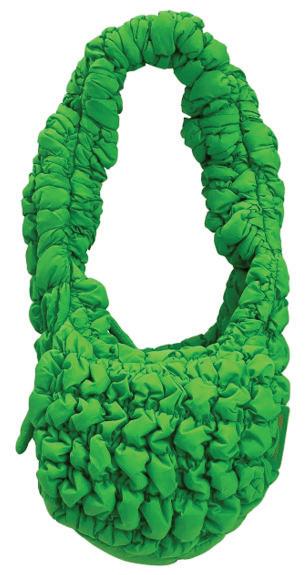
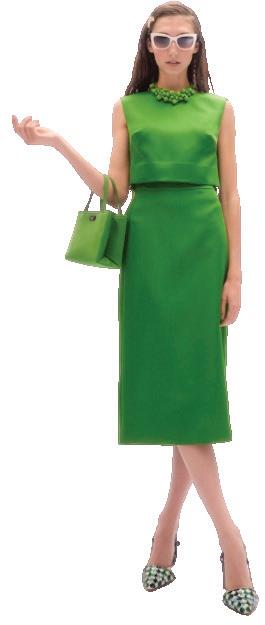
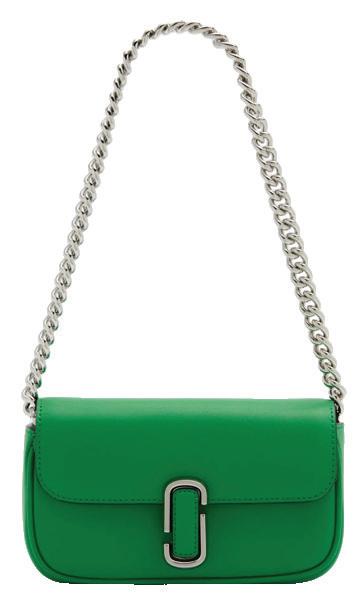

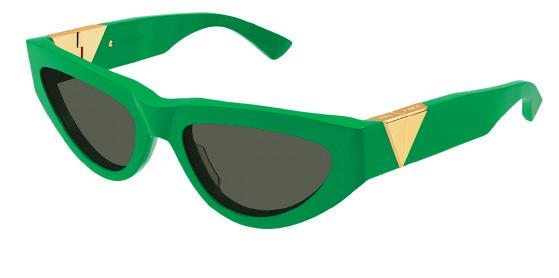
12 The Lexington Line • A/W 22 • vol 9 • no 1 classic green PANTONE 16-6340 Bottega Veneta Inverted Triangle Acetate Cat-Eye Sunglasses $495 Poppy Lissiman Puff Bag $125 Jeffrey Campbell Chauffeur Feather Mule $150 Marc Jacobs The J Marc Mini Shoulder Bag Price $295




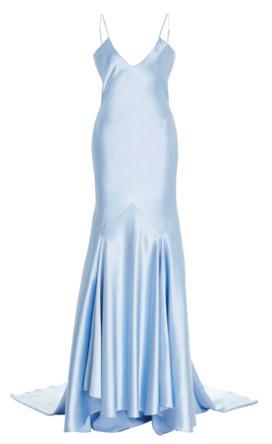
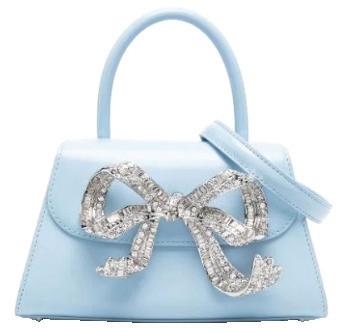

The Lexington Line • A/W 22 • vol 9 • no 1 13
song PANTONE 14-4316 Courrages Vinyl Jacket Pastel Light Blue $1,050 Sergio Hudson Silk Georgette Gown $3,495 Self Portrait The Bow Mini in Blue with Diamanté $495 Prada Brushed Leather Slingback Pumps $1,200
Summer
Treasure Hunt

A Search for Gems And Gold in Southern Massachusetts
By: Lauren Smelker
14 The Lexington Line • A/W 22 • vol 9 • no 1
The winding road to Brimfield reflected my emotions: I was excited to hunt for antiques, confused as to why Brimfield of all places was so popular, and hesitant because it was hot and I’d be exploring among hundreds of strangers.
As I approached the 35-square-mile town, a line of parked cars stretched for miles, closing in on trains of vehicles coming and going. I couldn’t help but watch the waves of people traveling back and forth to their cars with their vintage finds in tow, wishing I’d gotten there sooner.
The Brimfield Antique Show occurs three times a year, in May, July, and September. Booths and tents cover miles of fields and dirt roads, creating a maze for roughly 50,000 attendees to stroll through row by row.

With over 1,000 vendors and roughly 21 independent shows, the small town spectacle has grown in popularity since its inception in 1959. Brimfielders pride themselves on being the Antique and Collectibles Capital of the United States, welcoming international citizens to join in

on the hunt for rare and unusual goods. They encourage their history to be shared by and among the vendors, hoping to keep the tradition going for decades to come.
I eventually found a parking spot and joined the sea of people. With the beating sun and the smell of carnival food, I was suddenly surrounded by an abundance of vintage gems. It felt like a dream. I knew that the show consisted of collectibles, vintage clothing and fabrics, small maker’s trinkets, kitchenware, jewelry, and unique furniture that wasn’t sold anywhere but here.
Quince & Quail is an Ashland, New Hampshire-based business that specializes in vintage clothing and antique textiles from the mid-20th century and earlier.
“Often what we bring to Threadbare and Brimfield will be items we've never shown before, which means those who come to shop for inspiration are the first ones to see them,” said a representative from Quince & Quail. “This most likely gives them an upper hand in the design world.”

The Lexington Line • A/W 22 • vol 9 • no 1 15
A small vintage textile vendor, who preferred to remain anonymous, has become so familiar with designers at the Brimfield Antique fair that they’re on a first-name basis.

“I have several designers that visit my Brimfield booth regularly to peruse my antique French and Belgian linens and trims,” he claims. “Tommy [Hilfiger] and Ralph [Lauren] have both used a variety of my trims on their prototypes for their new lines.”
The first vendor that interested me had a perfectly merchandised tent. Fabrics and lace fell from the peak to the ground on each side. The casually thrown look was not accidental, almost resisting gravity in the way each panel of fabric glided from one spot to another. Underneath the lace maypole were racks of vintage Levi’s, 1950s-style blouses and dresses, and tables decorated with goodies. Beautiful antique broaches, earrings, and rings sparkled underneath the tent. In the middle was a melting pot of neck scarves.
As I dug my way through silk and cotton brushed my hands. Each felt softer than the next, the result of many

years of washing—almost like tree rings giving away their age with each new line, the softness of a handkerchief gave away theirs. I dipped in further, determined to see every scarf before I made my selection.
I must’ve looked like a mad woman, elbow deep in the basket, cursing under my breath that one of these could be vintage silk. I persisted until I reached the very last scarf. I lifted my clenched hand in the air and peered up at a dazzling vintage silk Coach neck scarf.
The border of the scarf was lined boardgame fashion with diagonal rectangles of chartreuse, burgundy, navy blue, and magenta alongside vibrant shades of orange, baby blue, Kelley green, and cream. Those same colors danced across the rest of the scarf in thin cross-hatching. The silk was adorned with subtle “Coach” scripted along the lines periodically. My eyes grew in wonder at my firstfound gem of the day, and my doubts about Brimfield melted away.
Many stylists for the top fashion brands of New York, and sometimes the designers themselves, shop at Brimfield

16 The Lexington Line • A/W 22 • vol 9 • no 1
to gain inspiration and find trims and details for their prototype collections. Many booths are curated for vintage lovers, and each piece has been hunted down for the brand name specifically, whether they are designer accessories, mid-century modern furniture, or ‘60s-era dishes that are only known for the artists’ clay stamp. You just have to be willing to dig.
The rest of the day continued in a hot blur; the smell of old books, rich textiles, and sunscreen lingered when I decided to call it quits. Overall, it was a success. I was able to cross everything off of my list, with the added bonus of the Coach scarf. A few other vintages finds that

I would give away as gifts include a ginormous woodframed mirror—that would barely fit in my car, another vintage Coach accessory (this time a brown leather satchel), and a ‘90s sheer purple maxi dress that I paid way too much for.

But as I headed back to my car, I couldn’t help but laugh at how I had questioned the significance of Brimfield. The small town sure packed a large punch, leaving an impression of its influence in the fashion industry. Even I, a New York fashion student, had struck gold in southern Massachusetts and was going home with my hands full.

The Lexington Line • A/W 22 • vol 9 • no 1 17

18 The Lexington Line • A/W 22 • vol 9 • no 1
WHAT the FDA!?
The Case for greater Beauty Industry regulation
By emma defelice
When it comes to clean beauty, the United States falls flat compared to other major markets. There are many known carcinogens that are allowed in U.S. beauty products, including formaldehyde, paraformaldehyde, and mercury.
These harmful chemicals are banned by the European Union and many other nations, which poses the question: Why does the Food and Drug Administration allow these chemicals in our beauty products?
There have been hundreds of claims made by women facing major health issues due to lack of regulation of cosmetic ingredients and chemicals.
On average, a woman uses about 12 beauty products daily containing about 168 unique ingredients total, whereas men only use about six different products, according to a 2013 study by the Environmental Working Group.

In their study, researchers concluded that these products have been linked to a vast array of health concerns including cancer, hormonal imbalances, and infertility.
Last October, L’Oreal faced major backlash when a woman claimed a chemical hair straightening product led to her cancer diagnosis.
Jenny Mitchell, a 32-year-old woman from Missouri, made the claim that her uterine cancer diagnosis “was directly and proximately caused by
her regular and prolonged exposure to phthalates and other endocrine disrupting chemicals found in the Defendants’ hair care products.”
Mitchell has been battling the disease since August of 2018 and underwent a full hysterectomy in September that same year. Mitchell feels her dreams of becoming a mother were stripped from her and claims that she has no history of cancer in her family.
With little to no regulation by the Food and Drug Administration, companies can put just about anything in their products, regardless of what long-term effects they may pose for women’s health.
This practice dates all the way back to 1938 when the Cosmetic Act was passed. According to The Journal of Health and Biomedical Law from Suffolk University, the act does not require the FDA to recall ingredients that are potentially dangerous or even monitor those used in certain products.

In 2020, the National Woman’s Health Network (NWHN) conducted a study to determine the risks of using talc-based powder. Studies have shown that asbestos is commonly found in talcum-based cosmetic products despite the fact that it is a known carcinogen and has been directly linked to cervical and ovarian cancer.
Research by the American Cancer Society has suggested a possible link between talcum powder and cancer; those who reported prolonged

The Lexington Line • A/W 22 • vol 9 • no 1 19
Try These Clean Beauty Brands


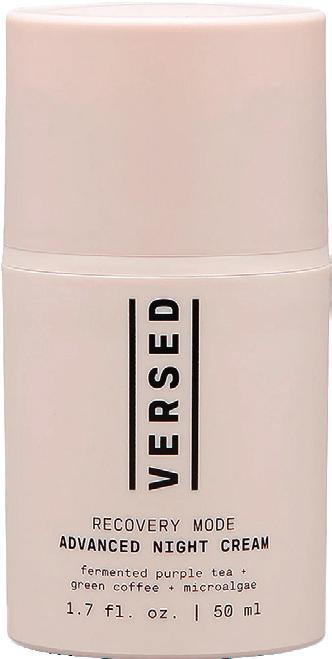

usage, especially around the genital area, have a small but increased risk of ovarian cancer.
Due to the lack of government oversight, companies do not need to disclose dangerous chemicals on the product label and just call them “fragrances,” which inherently leaves consumers in the dark about what is actually in those products.
This loophole allows fragrances to often include a myriad of various harmful chemicals that are not being regulated. A lot of these mystery chemicals are classified as phthalates, a class of chemicals that are commonly found in personal care products, according to the NWHN.
These same phthalates are also used to create plastics, so the same chemicals that go into making children’s toys are also in your night cream.
These “fragrances” are contributing to an abundance of women’s health issues. Without a call to

action, American women’s lives will be greatly impacted. NWHN research shows that cosmetologists are at greater risk due to constant exposure to these chemicals.
The U.S. Bureau of Labor Statistics estimate that there are roughly 1.2 million people employed in the cosmetology industry. 95 percent of those people are hairdressers, and 85 percent of other personal appearance workers, such as nail technicians and estheticians, are women. This allows them to be more vulnerable to a greater risk of health problems such as various types of cancer, reproductive disorders, neurological disorders and even birth defects
In recent years, fear of these chemicals has made clean beauty a roaring trend. If the United States FDA does not work to ban some of these chemicals, within the next few years, they will start to see a large decrease in sales as consumers start to outsource their purchasing to foreign markets.
20 The Lexington Line • A/W 22 • vol 9 • no 1

runway report

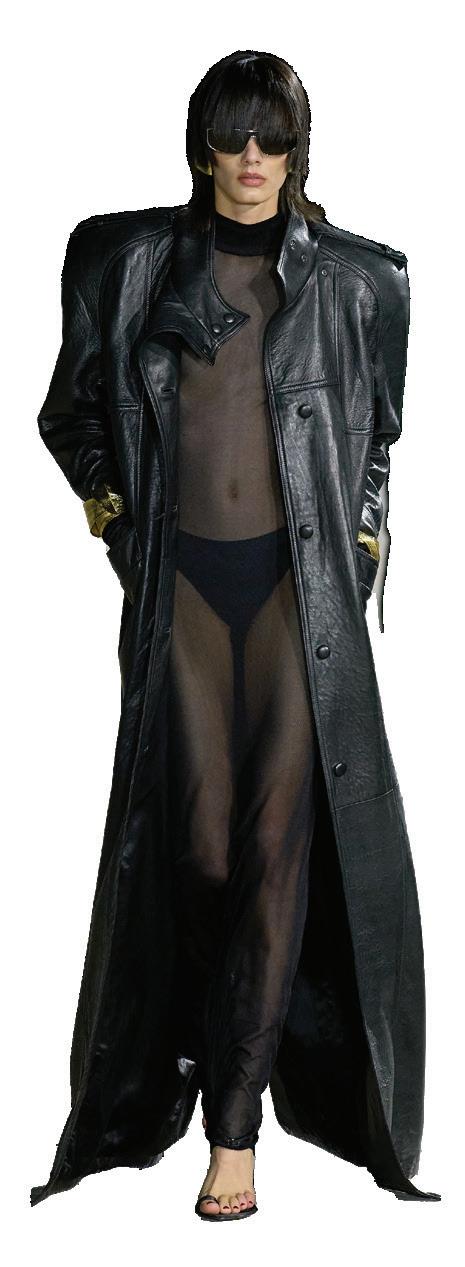
SHEER
Sheer has been all over the runway this past season. A variety of brands including Chanel, GCDS and Rick Owens showcased this classic design element in ways that are sweet and doll-like but also give a simplistic, sexy illusion. It’s a quintessential way to show skin this spring/summer—see Saint Laurent’s maxi-shaped black dress. Sheer is a staple design that consistently stays in the loop of the trend cycle; it is flexible and can transition to fit any mood without always having to be seen as risqué. With unique designs and innovative designers, sheer doesn’t have to be seasonal.
Crochet
In recent years, crochet has been a hot trend that extends beyond sweater weather. Crochet is a satisfying and intricate design that is also versatile; it can be worn either day or night, as seen on Gigi Hadid in a Chloe silver crochet-like dress. Crochet has become a staple not only for fall and winter, but for spring/ summer tropical looks.




22 The Lexington Line • A/W 22 • vol 9 • no 1
wide hip Silhouettes

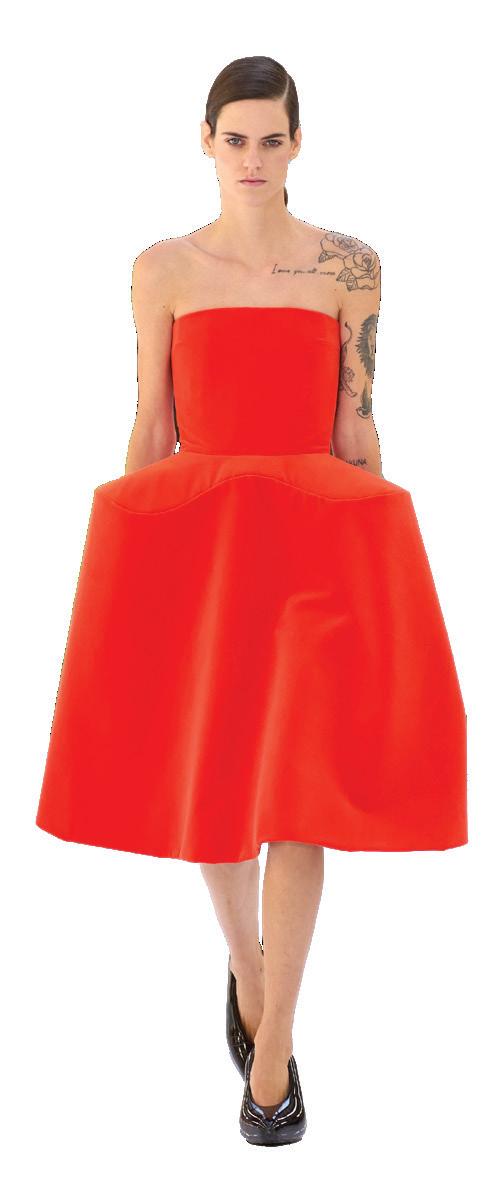
Silhouettes are always changing, so this season welcomes the exaggerated hourglass figure. Dior takes on a softer approach to this trend, with a slight bell curve that exudes Victorian glamour. Loewe and Lanvin experimented with pointed hips, creating a geometric silhouette. Loewe showed this silhouette in many of the designs from their spring/summer 2023 collection, showcasing bright spring colors, while Lanvin showed the more imaginative side of the silhouette, creating an almost asymmetrical hourglass for their runway collection.
feminine grunge
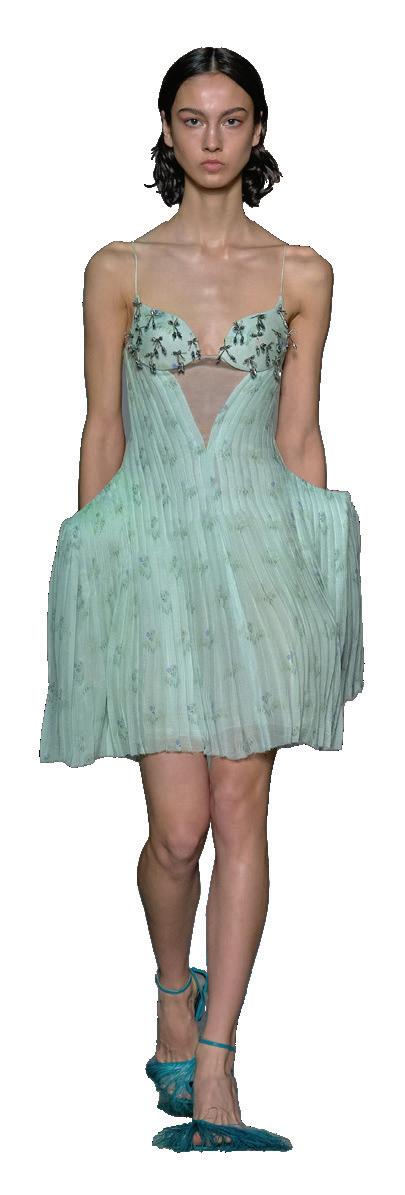
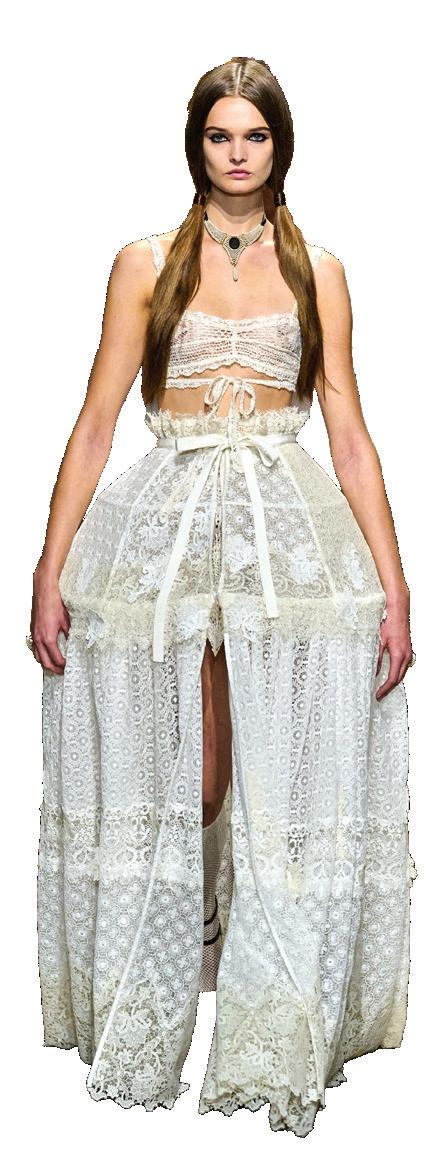
Feminine Grunge comes in many forms this season. Whether it’s a monochromatic pink look, soft fabrics paired with harsh details, or even a more masculine take on an overall feminine garment, the possibilities are endless. Rick Owens does a great job embodying the idea of feminine grunge with the use of sheer and flowing pink fabrics paired with a chunky zipper and leather cuff accessories. Lapointe walks the line between feminine and masculine, staying away from the monochromatic pink looks and taking on a feminine top with cut-outs around the midriff and cleavage. The wide-leg trousers have the added detail of larger buttons, but with a fitted waist that takes on a feminine edge.
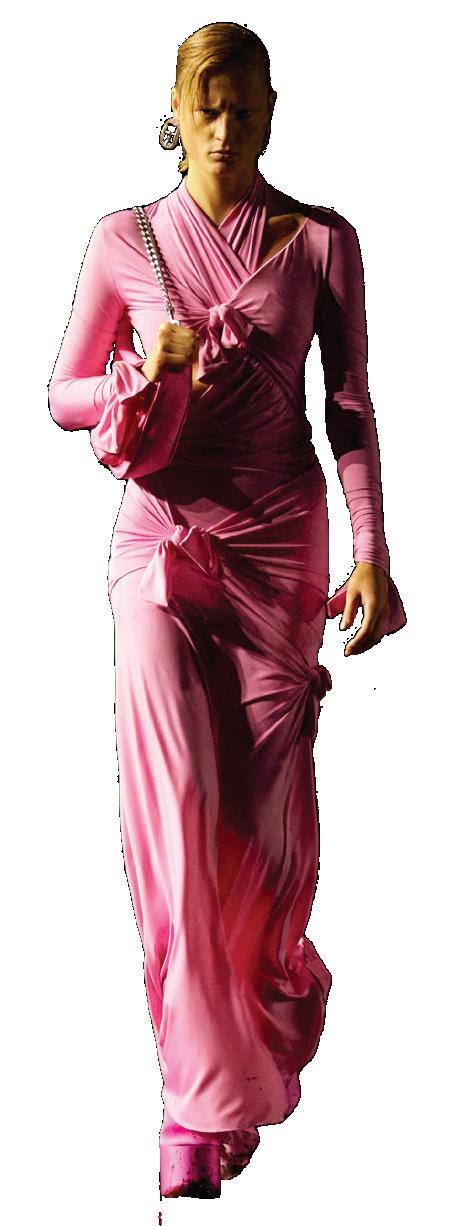

The Lexington Line • A/W 22 • vol 9 • no 1 23

the forgotten fight for Hawaiian rights
by elara Montana
A checklist of party supplies: Plastic flowers on strings and counterfeit frons woven around propane cans disguising themselves as tiki torches. Slices of sweet pineapple with its fluorescent yellow flesh and tropical drinks adorned with festive little umbrellas. Garish green streamers spun into skirts and Hawaiian t-shirts—all tied together with understated, but moving ukulele music.
The coveted “Hawaiian Luau” is a classic party theme—hell, I’ve worn a fake lei a time or two. Even as I participated in these charades, I always found these “luaus'' unsettling as a Kanaka Maoli (kaanuh-kaa may-ow-lee)— a person of Hawaiian descent. Like a costume for everyone to play dress-up.
Almost every time I have revealed my ethnicity, I have been met with mocking hand motions or have been forced to watch people mimic the songs my people sung. I would walk down the streets and see tribal tattoos on people who have never known my culture and see my people continually excluded from the conversation.
Growing up and experiencing these things, I always felt an overwhelming discomfort, but I never saw anyone saying it was wrong.
After all, if no one says anything, is it really an issue?
I also faced the internal dilemma of not feeling “Hawaiian enough” because I was raised on the mainland and am only half Hawaiian.
Who was I to say whether it was right or wrong?
Even though I was immersed in my culture and grew up continually visiting the islands to see my family, I still felt inadequate. That was until I began talking with other Kanakas and seeing their own expressions of discomfort when it comes to a haole’s (Hau-lee)—a foreigner; someone who is not of Polynesian descent—attitude towards our culture.
When it comes to Hawaiian culture, there is no discussion. Just unheard pleas from people who want their issues addressed and recognition for the culture that was once stripped from them.
Shantel Adolpho, my aunt, was born and raised on the islands.
“Growing up we had no worries as kids. We feared nothing but our parents and our elders of course,” she remembers.
Aunty Shanny, as I call her, took me through her everyday life as a child, telling me how she would always rush through her chores so she and her friends could go out and explore.
“We walked around barefoot or rode our bikes all over, and as far as
we could go,” she says. “We hiked and explored everywhere; we went fishing, spearing or to the beach to swim.”
They would eat fruit from trees if they were hungry, asking their aunties and uncles if they could pick them from their backyard.
“Life was simple for us. We never needed much because we were never bored,” she says.
On the island, life was a breeze. She never felt like she didn't belong. But all of that changed when she moved to the mainland for college in the ‘90s.
“I was stared at and idolized by people because of my features and golden brown skin, which felt uncomfortable,” she says. “I do think it comes from a place of curiosity and understanding, but there were definitely a lot of assumptions made, and crazy questions asked.”
Aunty Shanny’s experience on the mainland speaks to the bigger issue of ignorance when it comes to Hawaii.
The islands have a long and complicated history that is practically non-existent in mainstream education. I recall my own experience growing up and taking various history courses, which almost never included the historical events of the islands. My personal knowledge came later from my family.
The Lexington Line • A/W 22 • vol 9 • no 1 25
“Many things have taken place between then and now, like the illegal overthrow of Hawaii and the continued illegal occupation over it still today,” Aunty Shanny explains.
Most Hawaiian people don’t speak the Hawaiian language, “so it’s hard to judge any full Hawaiian events without that understanding…almost all resources about the event are in the foreign language of English, therefore providing a foreign perspective.”
“We all have been under the war crime of denationalization, which is why we don’t speak our language and don’t understand enough about the demolition of the ʻai kapu,’ (ah kah-poo)” she says—an ancient Hawaiian code of conduct that applies to universal lifestyle, gender roles, politics, and religion.
Years before Hawaii was thrust into statehood, the islands were led by a beloved nobility called the ali’i (ah-lee-ey) as a sovereign state.
“During this time, everyone spoke Hawaiian and lived Hawaiian,” she notes.
This was until 1887, when two missionaries who were appointed government positions formed a political party—The Missionary Party—to overthrow the ali’i in order to pursue business ventures, according to National Geographic. In a meeting between the party, and King Kalākaua, the ali’i were forced to sign new legislation that passed
over power to the party under the eyes of an all-white militia.
With the Missionary Party in control, a majority of Hawaiians were effectively stripped of their right to vote, to own land, and to speak the language of their people. Though Queen Lili’uokalani, who acquired the throne after her brother's passing, fought to reinstate the monarchy’s power and bring back her people’s rights, it was all for naught.
By 1898, Hawaii was annexed and became the fiftieth U.S. state. Despite all of the challenges the people of Hawaii have faced, they stayed strong and did everything they could to keep their culture alive.
“Our people were almost wiped out because of all the foreign influence,” Aunty Shanny says. “But we were smart, and fought for our people; we fought to be Hawaiian… and still today we fight and fight everyday. We fight the continued desecration of our lands and waters, and we fight for sovereignty.”
After decades of cultural oppression, a new wave of Kanaka Maoli have taken steps to reclaim their identity.
Mālie Lyman, an 18-year-old from Hawaii, took her culture and turned it into a career.
At the age of five, she learned to play the ukulele from her mom, which launched her love of music. From
the ukulele, she then moved onto the steel guitar—an instrument popularized in Hawaiian music— which became her calling card.
“Under the direction of uncle Alan Akaka,” she says, “I was mastering this instrument and bringing back a nearly dead style of playing.”
She continued to grow as a musician, eventually touring around the world and playing with Hawaiian music legends like Jack Johnson and Paula Fuga. She attributes all of her success to her family. In fact, she says she got started in music to preserve the legacy of her great grandmother, Genoa Keawe, a beloved singer.
“It helps that the music tradition started with my great grandma, so it kind of came as an expectation,” she says. “The doors were opened for me and ready for whenever I was.”
Maliē is one of the many younger Kanakas who are doing all they can to better connect with and understand her heritage, and music is her way of doing that.
“Music is just like aloha. It brings everyone together regardless of where you came from,” she says.
While many Hawaiian natives have taken back their cultural identity, there is still a lot of work to be done outside of the islands. Many people that live on the mainland are uneducated about Hawaiian culture and the proper etiquette that comes with visiting the islands.
26 The Lexington Line • A/W 22 • vol 9 • no 1
We all have been under the war crime of denationalization
1. Educate Yourself on Hawaiian Issues
There are dozens of injustices that happen everyday to Hawaiian natives. From the de-homing of hundreds of Kanaka Maolis, to the destruction of sacred land, there is still a constant battle for Hawaiians to protect and preserve the place they call home. By better educating yourself on these endeavors, you can help amplify these natives’ voices and share a story that often goes unheard.
2. Respect Sacred Cultural Practices
While tribal tattoos may seem cool, and hula dancing can be fun, we must remember that there is a fine line between cultural appropriation and cultural appreciation. While Hawaiian culture is usually left out of the conversation when it comes to cultural appropriation, it’s important to remember that Hawaii has a rich history that deserves just as much respect as any other culture.
3. Be an Informed Visitor
Tourism is a pivotal part of Hawaii’s modern day identity and a main contributor to the island's economy. Because of this, many locals are more than happy to share and welcome visitors to their island home. However, there is a right way and a wrong way to visit Hawaii.


Before your trip, take time to research the history of Hawaiian people as well as certain practices that are kept on the island. When you are there, be sure that you are supporting as many local businesses as possible, and that you are respectful to the locals— after all, it is their home. Nature is also treasured in Hawaiian culture, so be sure to respect the land and follow any guidelines set by the government or the natives.
Though the Kingdom of Hawaii has passed, the people of Hawaii are very much alive. They continue the fight that their ancestors started hundreds of years ago and are preserving their culture for generations to come.
The Lexington Line • A/W 22 • vol 9 • no 1 27
If you want to become an ally to the Hawaiian people, here are three steps you can take:





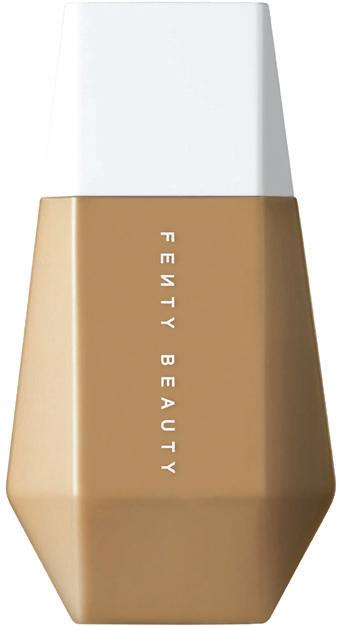
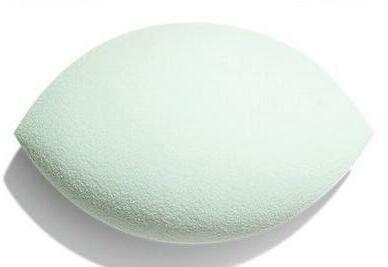
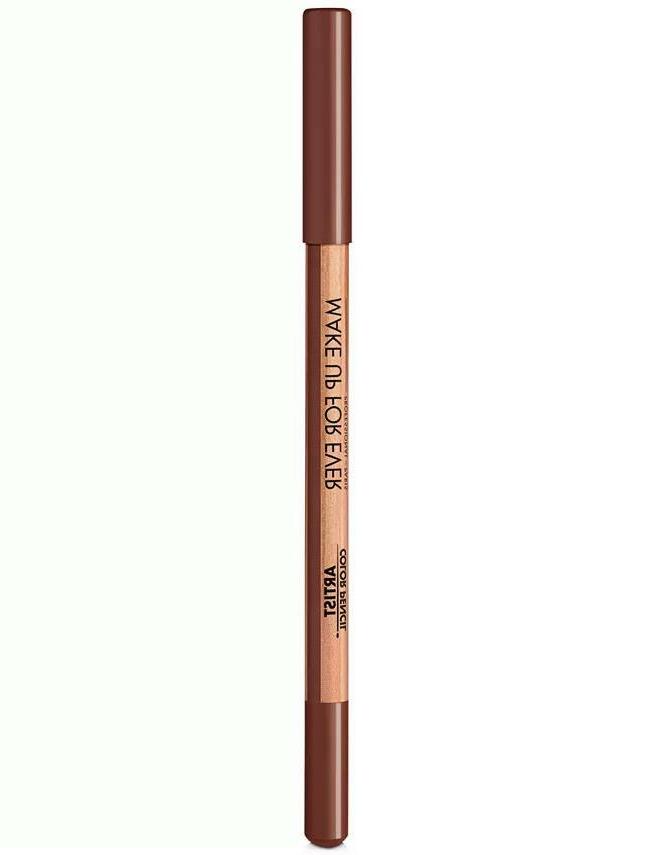


1
4 10
6 3 8 28 The Lexington Line • A/W 22 • vol 9 • no 1
2
5

beauty buys 1. CeeraVe Resurfacing Retinal Serum $19.99 2. Makeup Forever Artist Color Pencil $22.00 3. Rhode Peptide Lip Treatment $16.00 4. Milani Make It Last Setting Spray $10.99 5. Fenty Beauty Eaze Drop Blurring Skin Tint $32.00 6. Kosas Creamy Concealer + Eye Cream $28.00 7. Hourglass Scattered Light Glitter Eyeshadow $30.00 8. Morphe X Ariel Signature Look 12 Piece Face and Eye Brush Set $98.o0 9. Merit Flush Balm $28.00 10. Amika Perk Up Dry Shampoo $26.00
Less is more
 by hannah Szwast
by hannah Szwast
a capsule wardrobe might be the biggest return on investment in fasion
For the past several decades, the fashion industry has inherited a reputation for manufacturing a colossal amount of waste. This is due not only to the product development initiatives that many big names in fashion pursue, but also as a result of the corporate agenda.
According to Elizabeth Segran in Fast Company, fast fashion retailers promote this vicious cycle by churning out nearly 12,000 new designs every year, taking merely six weeks on average for their garments to go from sketches to shelves.
The universal desire to partake in the latest trends and styles results in widespread adoption of singleuse consumerism. Once the fad dies down, these pieces often find their homes in landfills.
Because mainstream fast-fashion retailers typically favor microtrends, consumers must turn to higher-end retailers when seeking investment garments.
The real question is, what does change look like, and how can we mitigate single-use consumerism? The answer is simple: invest in a capsule wardrobe.
Many credit the fashion blogger Caroline Rector of Un-Fancy as the pioneer of the movement. She started the capsule wardrobe conversation back in 2014, but it didn’t gain traction online until recently, when it was revived on TikTok.
The recent wide-scale advocacy for change, and the United Nations’ goal of cutting global carbon emissions in half within the next decade, means that sustainabilitydriven movements like the capsule wardrobe are finally getting the attention they deserve.
According to Eva Astoul from the fashion-forward blog Sustainably
Chic, a capsule wardrobe is “a limited selection of interchangeable clothing pieces that complement each other.”
The goal is to be able to create a variety of different outfits with purely the capsule’s contents.
The garments are meant to be classic, meaning they transcend time and can be styled for many seasons to come. Neutral-colored garments can be the most versatile, but capsule aesthetics are purely up to the individual’s discretion.
If you are financially capable, consider investment pieces. A garment can be classified as such when it’s been purchased for the purpose of lifetime use.
You must consider the degree of longevity that the item was designed for. This includes characteristics such as quality, durability, and potential lifespan. Additionally, the shape and silhouette of the garment play an important role when determining if the piece will transcend temperamental fashion seasons and remain stylish.
While spending $100 on a single pair of pants might seem daunting, the long term savings can justify the purchase. If the $100 pants can live in your wardrobe for decades, this can absolutely outweigh the practice of purchasing a new pair of $30 pants every year.
Undoubtedly, putting forward a substantial amount of money on a singular garment is a privilege; therefore, this facet of building a capsule wardrobe is purely optional, and can be incorporated at your own accord.
According to Rector, there is a five step process to building a capsule wardrobe.
First and foremost, you must set a specific goal and work towards it starting with what you already own;
Rector says that the golden number of garments is 37.
Each capsule should be centered on a season, which is approximately a three-month period.
The number of capsules you curate is subjective and depends largely on the climate where you live. But the objective is to avoid shopping for new garments for the duration of the season and wear only the selected garments within the capsule.
If necessary, Rector says, you should only shop for new clothes in the final two weeks of the season—and the cycle repeats.
The key phrase is “if necessary”; this method creates discipline and promotes intentional purchasing.
The concept isn’t black & white; you can mold aspects of the methodology to your lifestyle: the number of garments, the seasonal periods, and the purchasing schedule.
You should aim to abide by these guidelines to the utmost degree, but perfection is not necessary. Don’t let the fear of error intimidate you; any strides made in the right direction are admirable.
It must be noted that there are long term benefits to a capsule wardrobe that go beyond sustainability.
By shopping just once per “season,” you spend less on frivolous items. Putting money into a timeless garment that embodies durability and quality ends up being more costeffective than buying into fast fashion.
Capsule wardrobes allow access to versatile garments; narrowing your wardrobe helps to define your personal style. Every single item hanging in the closet is something you love; there will always be something great to wear.
The Lexington Line • A/W 22 • vol 9 • no 1 31

The girl surviving day after day with a cigarette in her mouth, last night’s smokey eye makeup smeared underneath her waterline, and wired earbuds playing The Smiths, Fiona Apple, or Lana Del Rey into her busily pierced ears.
She may be running late to pilates in her coquetteinspired outfit on nothing more than a latte. Instead of music, maybe she’s listening to the Red Scare podcast.
Regardless, she is unhinged, self-destructive, and above all, a nihilistic “dissociative feminist,”—a term coined by BuzzFeed writer Emmeline Clein in her 2019 article “The Smartest Women I Know Are All Dissociating.”
The archetype isn’t new. Heroin chic was all the rage in the ‘90s, and the Tumblr era of 2014 brought on the spread of #thinspo and pro-ana (pro-anorexia) content that undoubtedly harmed young women. The issue is that many saw the problem and figured this was over.
With TikTok’s new swiping feature, however, there has been a drastic rise in the romanticization of serious mental health issues. TikTok has taken a step that Tumblr didn’t by suggesting contacts for the National Eating Disorder Association when one searches terms like #proana.
But what’s worse? Unlike Tumblr, these dissociative takes can show up unsolicited on your “For You” page.
Dissociative feminism can be dangerous both privately and culturally. Getting through the days by dissociating into this archetype, and smirking at your own silence can whittle away your sense of self worth while empowering oppressors.
I will admit, I’m not innocent. I have found myself in moments where it was easier to dissociate from the frustration inherent in every feminist issue. Even though these videos create a knot in my stomach, the repost button taunts me every time a romanticizing take on mental health enters my feed.
Tragicomic antagonists feeding the dissociative dream are plastered all over the media world: Fleabag, Amy Dunne, the unnamed protagonist in Ottessa Moshfegh’s My Year of Rest and Relaxation, and countless others. Most of these women are idolized for their personalities, and while some of them have admirable qualities, they all have something in common: “female rage” that wallpapers over women’s mental health issues.
But if you stop drooling over the romantic TikTok edits of raging white female characters set to Radiohead’s “No Surprises,” over femcel TikTokers expounding on
their desire to be a messy girl, you might realize something.
If you are a “dissociative feminist,” you are privileged in one way or another. In many cases, you are a white, slim, and conventionally pretty woman with the ability to levy sarcastic, impassive takes when speaking about feminism.
Take a look at Phoebe Waller-Bridge’s tragicomic protagonist, Fleabag, for example. You’ve most likely heard of her and possibly even desire something like her ironic personality. In case you haven’t heard of it, I will catch you up quickly.
Fleabag, as the unnamed character is called, turns her moments of tragedy into comical derision aimed at herself.
Fleabag often breaks the fourth wall to joke about her situation, all in the name of dissociation. It is as though she is watching herself from outside her body, using sarcasm to suppress feelings that stem from the cultural pressures imposed upon women.
Fleabag is the cool girl; her desires don’t clash with his because she is usually pretending to be exactly the woman men want her to be. She does wrong, but in our eyes they are just mistakes, human mistakes. I will admit, I too wanted to be like Fleabag at one point. Dissociative female characters are viewed subjectively. They feel familiar and relatable, even when they do something objectively wrong. But when we look at reactions to POC characters that make similar choices, reactions suddenly become objective, based on moral rights and wrongs.
Devi from the Netflix series Never Have I Ever is an imperfect protagonist. Media response to Devi, who is only 15, has included headlines like “Ranking The Characters In Netflix’s Never Have I Ever From Least Shit To Devi.”
Devi is unpopular, which she blames on her Indian background. But once Aneesa, another Indian character, is clearly “likable in spite of her brownness,” Devi has no excuse, says Emaan Haseem, a Pakistani woman told me by email.
“Of course Devi is flawed, but she’s real. Real in that, though many brown girls may not want to admit it, we experience the same anger, frustration and jealousy that Devi feels day-to-day,” she says.
I recently came across a TikTok using the Kali Uchis song “After The Storm” over a montage of some favorite “female rage” characters. From Amy Dunne to Alaska
We all know her...
The Lexington Line • A/W 22 • vol 9 • no 1 33
Young to Cassie Howard to Jennifer Check to Maxine from X to Black Swan’s Nina Sayers, I am ashamed to say it took me seeing a duet made by Emaan Haseem to realize something—every woman was white.
WOC are “not viewed as poor, sad or fragile, let alone dissociative (the themes that these edits follow carefully by depicting the white female characters’ breaking point),” Emaan says. The unique trait of these “female rage” characters, she says, is whiteness.
“Throw in Abileen Clark’s ‘Eat my shit’ scene from The Help in one of these edits,” she continues. “How about replacing a Lady Bird mother daughter scene with Evelyn and Joy Wang’s conversation about homosexuality and acceptance. Maybe even include Devi’s Aneesa-induced breakdown. It doesn’t feel right.”
What’s “unique and defining” about the original dissociative aesthetic isn’t that it’s about upset women— it’s about upset white women, she says.
“Because in the States, at least, WOC representation will always have to address the complexity of their unique racial experience,” she says. “And well, that doesn’t really fit an aesthetic does it? Certainly not the dissociative feminist one. It would be far too complex.”
Outside of the chronic misrepresentation inherent to the “female rage” archetype, there are a multitude of other dangers.
Maybe you are using TikTok to address your depression, or your eating disorder, or your crippling OCD.
“In more impressionable years, the dissociative attitude would paint a very depressing world view,” Emaan says. “Maybe this is your tactic for coping, for being ‘relatable.’ I am not saying the dissociative dream women on social media are all at fault for this, that would just be me dissociating from our reality.”
But in many ways, our society has pushed us to glorify mental health disorders, eating disorders, the use of drugs, and more, she notes.
“Look back at the controversial subject of Euphoria and all of the rage over whether the director was feeding young adults a look into the normalization of sex
and drugs while glorifying disorders such as bipolar disorder,” she says. “Or if you are around my age, you may remember the release of 13 Reasons Why and your parents sitting you down to ‘talk’ after hearing about the spike in suicide rates.”
Young and impressionable, we begin to contribute to normalizing potentially toxic media and share it with the world.
Alina Arseniev-Koehler of the University of Washington and Seattle Children’s Research Institute conducted a study with researchers to investigate “Pro-Eating Disorder (ED) Twitter profiles’ references to EDs and how their social connections (followers) reference EDs.”
Slightly over 36 percent of pro-ED profiles had ED references, while 45 percent of the combined total followers had mention of an ED on their personal profiles. This among many other studies proves the harm that can be caused by dissociating and nonchalantly mentioning such topics in a TikTok while Lana Del Rey breezily sings “you’re just a man.”
On the more facade-encouraging sides of social media, women are dissociating for other purposes. Nevertheless, there are multiple forms of dissociation women are using to escape from the reality of our society.
From a young age, we detach from our authentic selves to curate our online presences, most times in the male gaze. We ask ourselves various questions when posting on social media: What will make me relatable? What will make me desirable? What will make other women fume with jealousy?
Don’t mistake me, I am not telling you who or how to idolize. As humans we are impressionable, and that is a trait we can’t always control. But next time you notice the knot in your stomach or the sweat glazed across your forehead, don’t float above your body in an attempt to ignore it like Fleabag.
Reoccupy your body and realize the dissociative dream you once thought of as heaven will only move our society further into the realities you are avoiding.
34 The Lexington Line • A/W 22 • vol 9 • no 1

The Lexington Line • A/W 22 • vol 9 • no 1 35
Three Poems





 Written By Emily White Illustrated by Elara Montana
Written By Emily White Illustrated by Elara Montana
From the Fire Escape
Ladybugs and Bees (for Annamarie Accardi)

We sit there and watch, two sets of eyes and one fire escape. Your laugh is infectious and I find myself wanting to be sick Forever.
I know this might be the last time I get to see the dimples form around your smile, but I feel blessed to know you, to love you, And to have you. So we sit there and watch.
I close my eyes, and all I see are strobe lights.
I stop listening, and all I hear are sirens.
I stop sniffing, and all I smell are funnel cakes.
I close my mouth, and all I taste is church wine from your funeral. I stop breathing until I’m in a world where it’s just You and Me.
The Ladybug running around with the little Bee.
36 The Lexington Line • A/W 22 • vol 9 • no 1
Ginger Ale Dreaming:


I had a stomach ache, an ache so bad, you funneled Ginger Ale down my throat. You tied my hair into a knot, with the same hair tie I’d been using for months. My body was not mine anymore, My stomach was filled with stones. But with each embrace, you broke those stones. Why is he helping me, I thought, while the twisting and turning took control.

“I wouldn’t be doing this if I didn’t love you,” you said.
Ginger ale dripped from my lips, and danced on my tongue, cultivating my reply. My stomach ache was worse now, but not like before. Its rumbling filled the silence in the room. But once I looked into the oceans one would call his eyes, the noise stopped. My stomach flipped. My cheeks turned crimson. “I love you too,” I said, praying that I wasn’t just Ginger Ale Dreaming.
The Lexington Line • A/W 22 • vol 9 • no 1 37


38 The Lexington Line • A/W 22 • vol 9 • no 1
the digital assistant that makes shopping seamless and safe

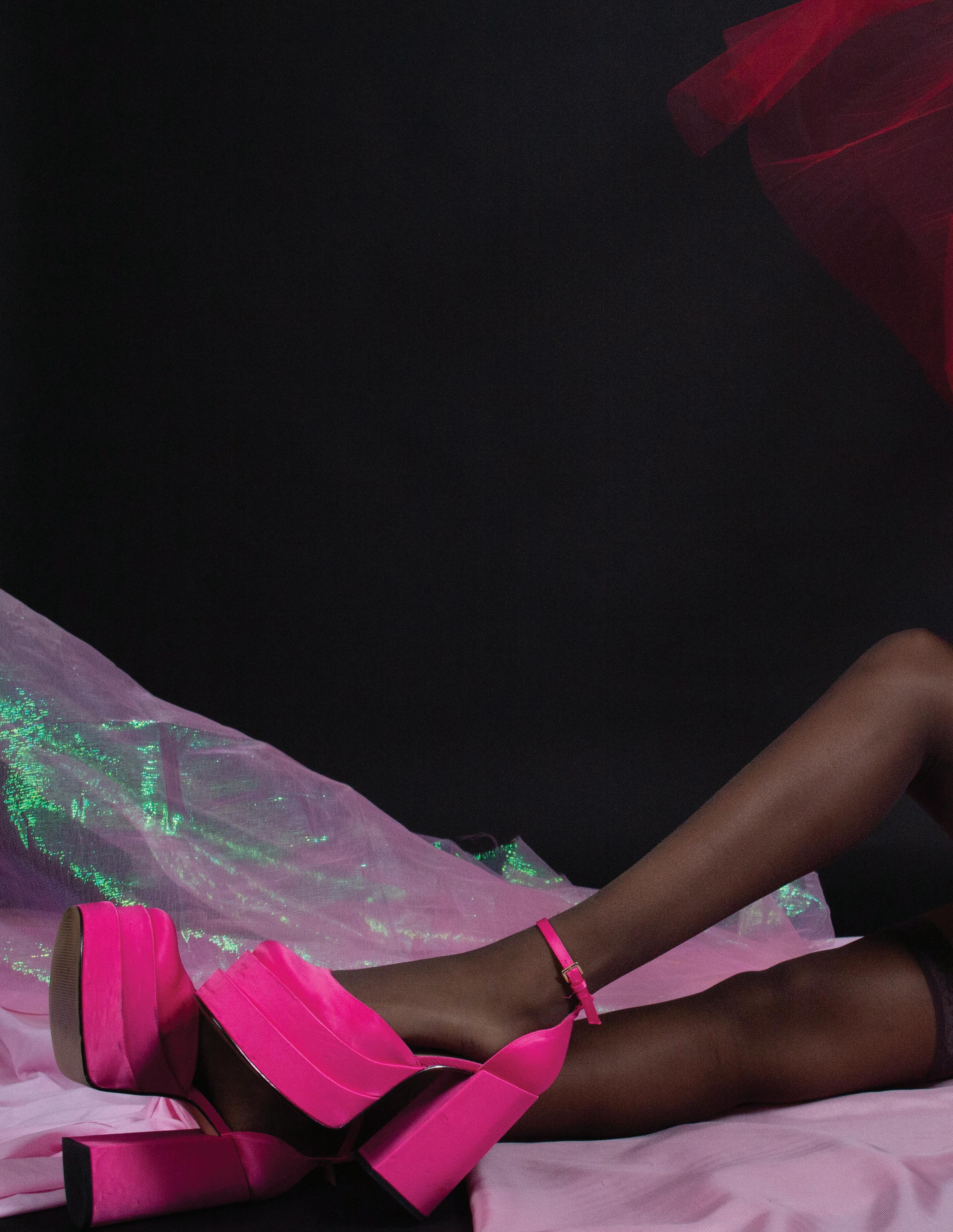
Kaylyn
Chelsea DeMaille Carly
Brianna Cacioppo Dezire Pestano stylists Ida
Asia Simms Linda Salden Claire Tallman Quinn
Yiming Yang HaoChun
Poheng
Karlene Fabian Gurman Thabel Models PROP
Montgomery
Gabriel
Francis
Engstrom
Chang Lauren Davison
Lee
DESIGNERS
Sofia
Pestano styling
fashion director creative director Nicalina
Jaedyn
Jaedyn Frasnelli
Emily
photography hair & Makeup
40 The Lexington Line • A/W 22 • vol 9 • no 1
fatally feminine Sohl Garibaldo
Naranjo Dezire
director
Del Rosario
Frasnelli Emma DeFelice
Elara Montana
White
production
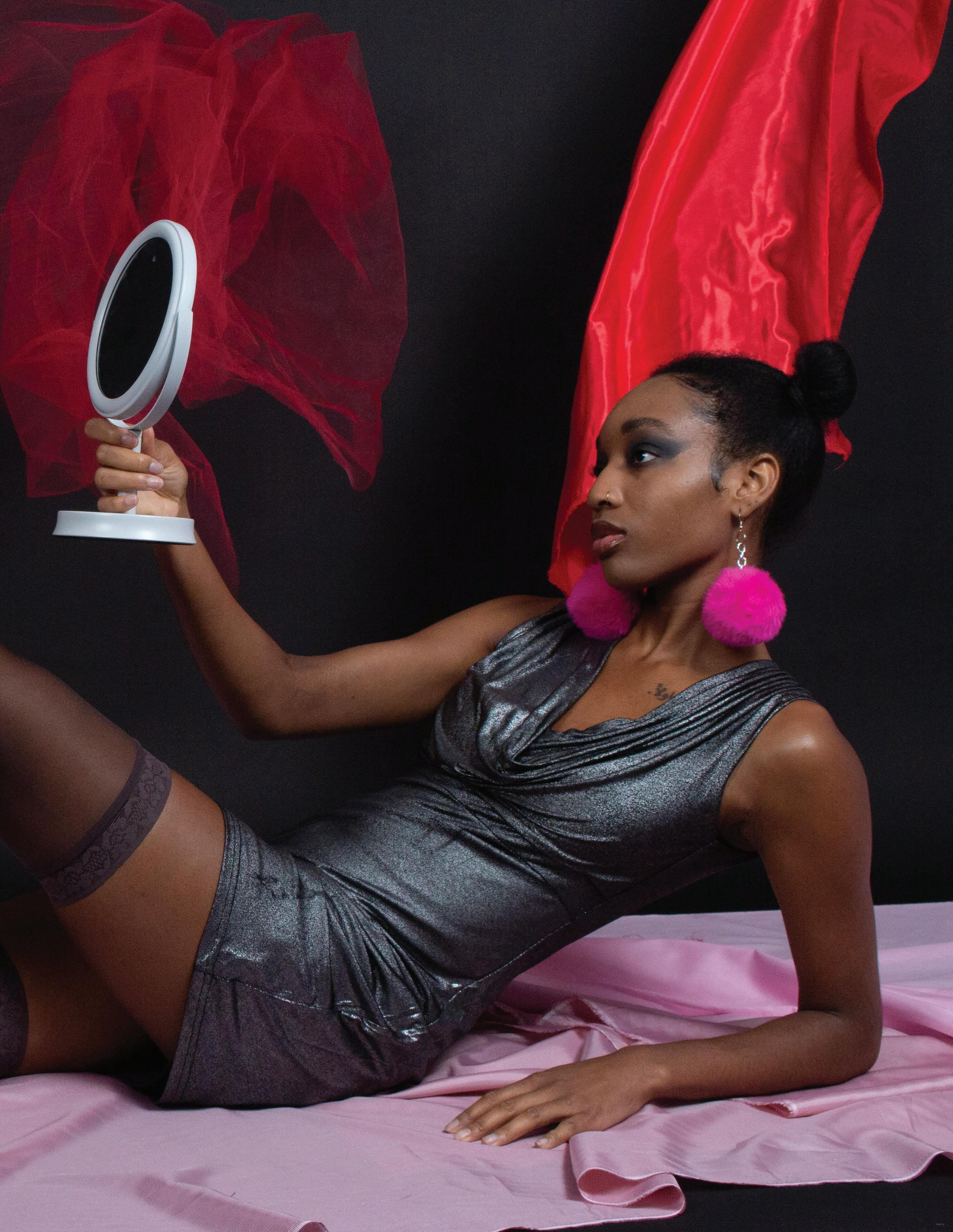
The Lexington Line • A/W 22 • vol 9 • no 1 41
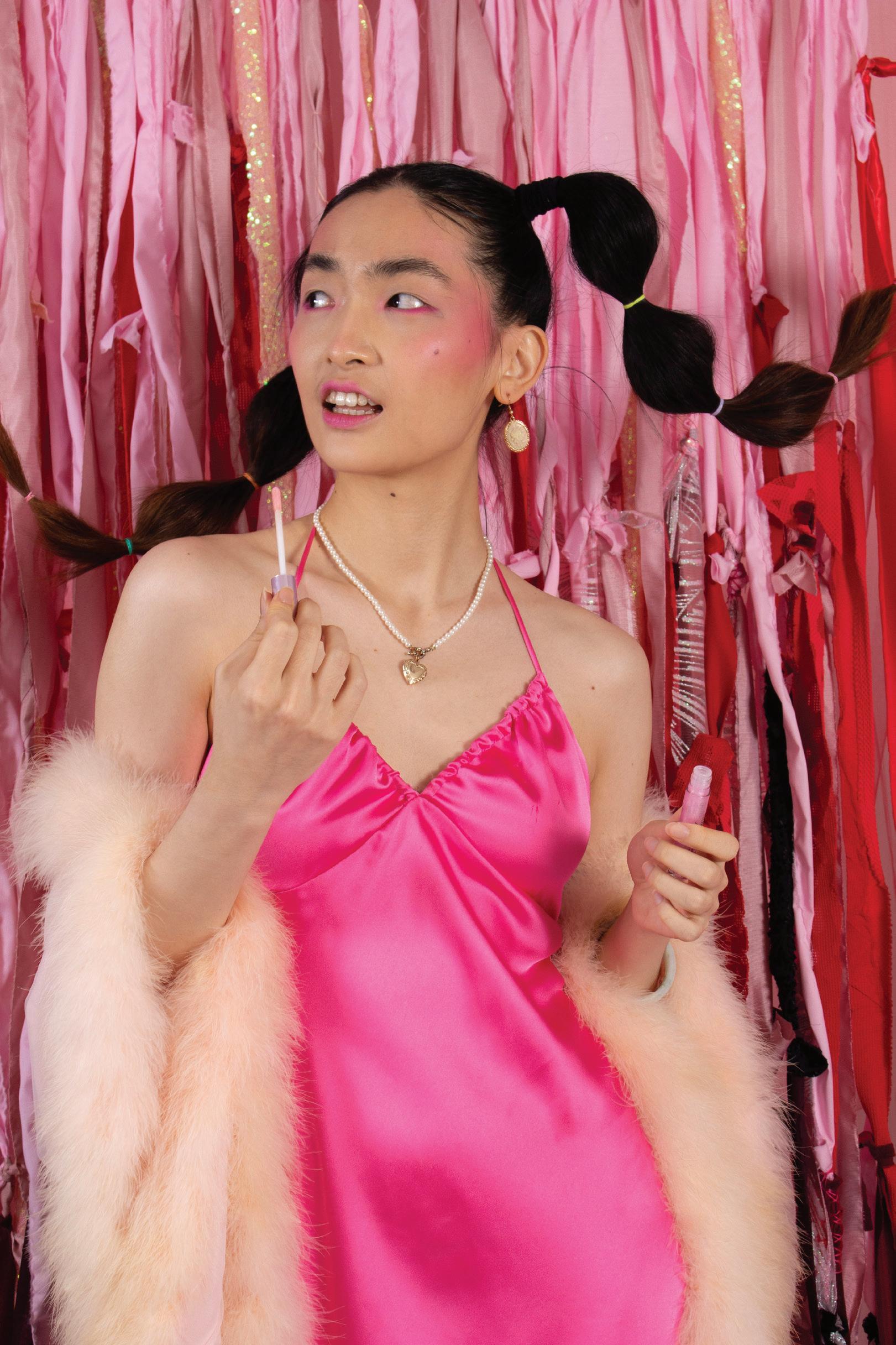
42 The Lexington Line • A/W 22 • vol 9 • no 1
MODEL WEARS: Garage Clothing—Dress; Steve Madden—Shoes; Stylist's Own—Vintage Robe
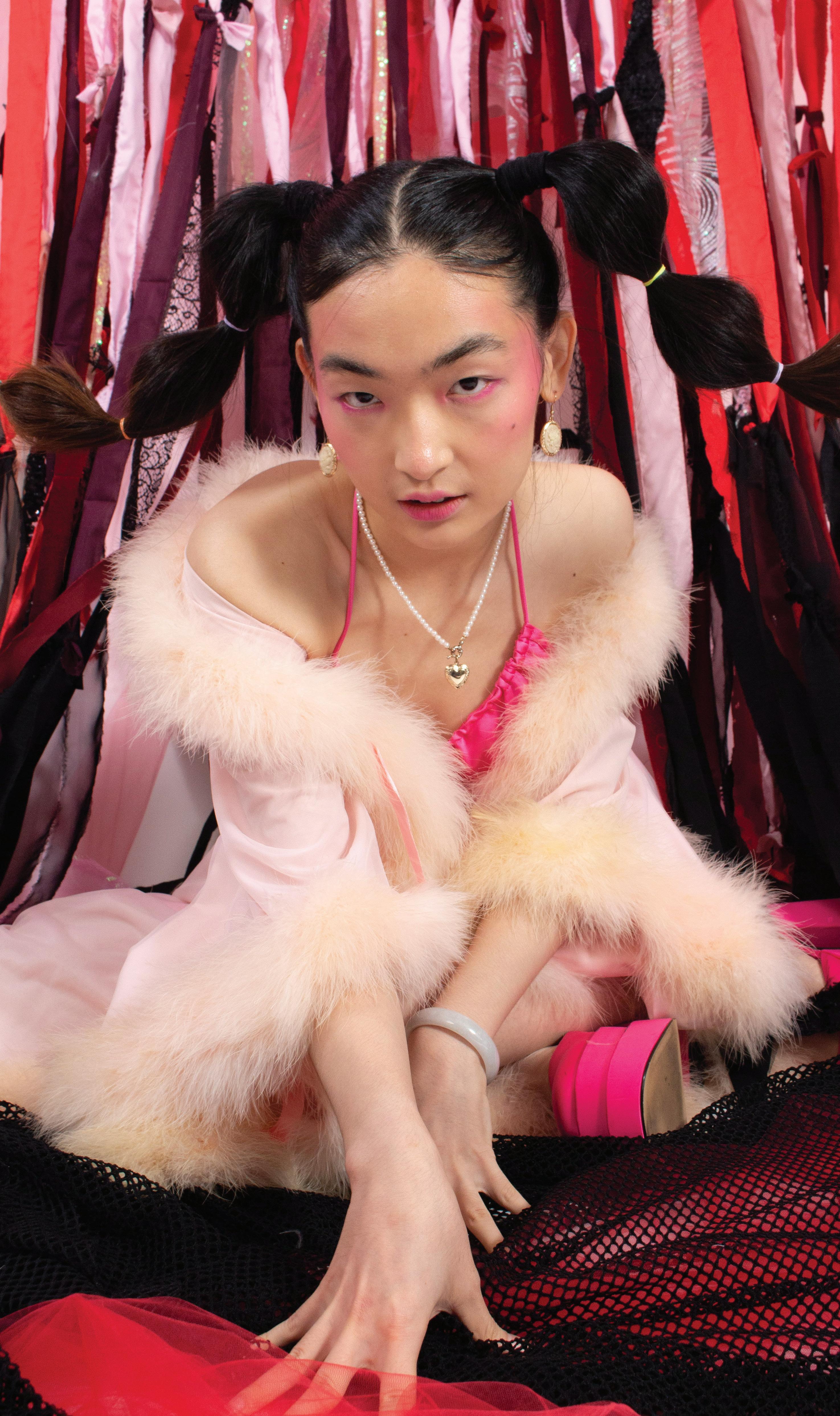

44 The Lexington Line • A/W 22 • vol 9 • no 1
MODEL FAR LEFT WEARS: Kattitude —Top, Skirt; Steve Madden—Shoes
MODEL LEFT & RIGHT WEARS: Forever 21—Button Up; Kattitude—Corset; Zara—Skirt; Vivienne Westwood—Necklace
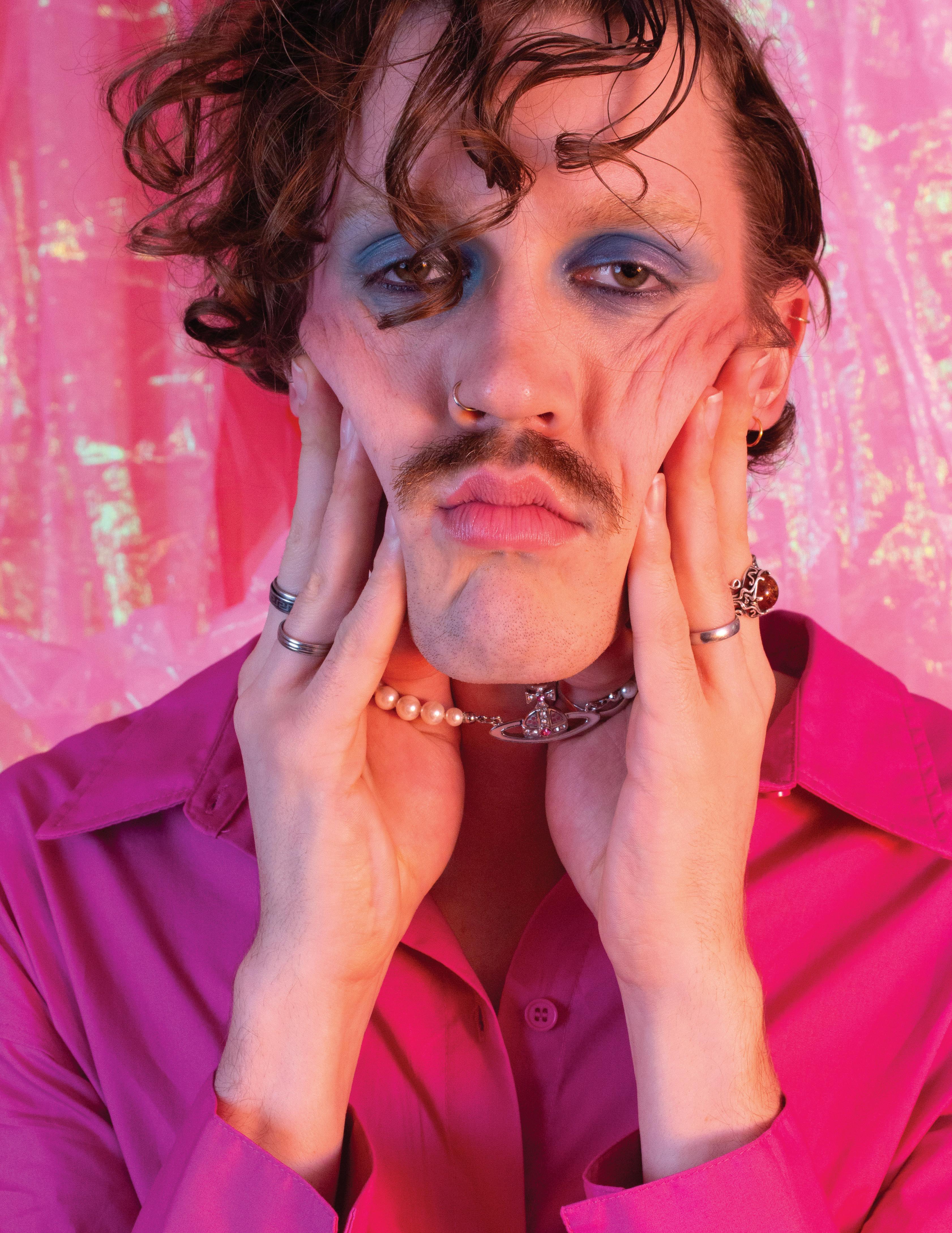
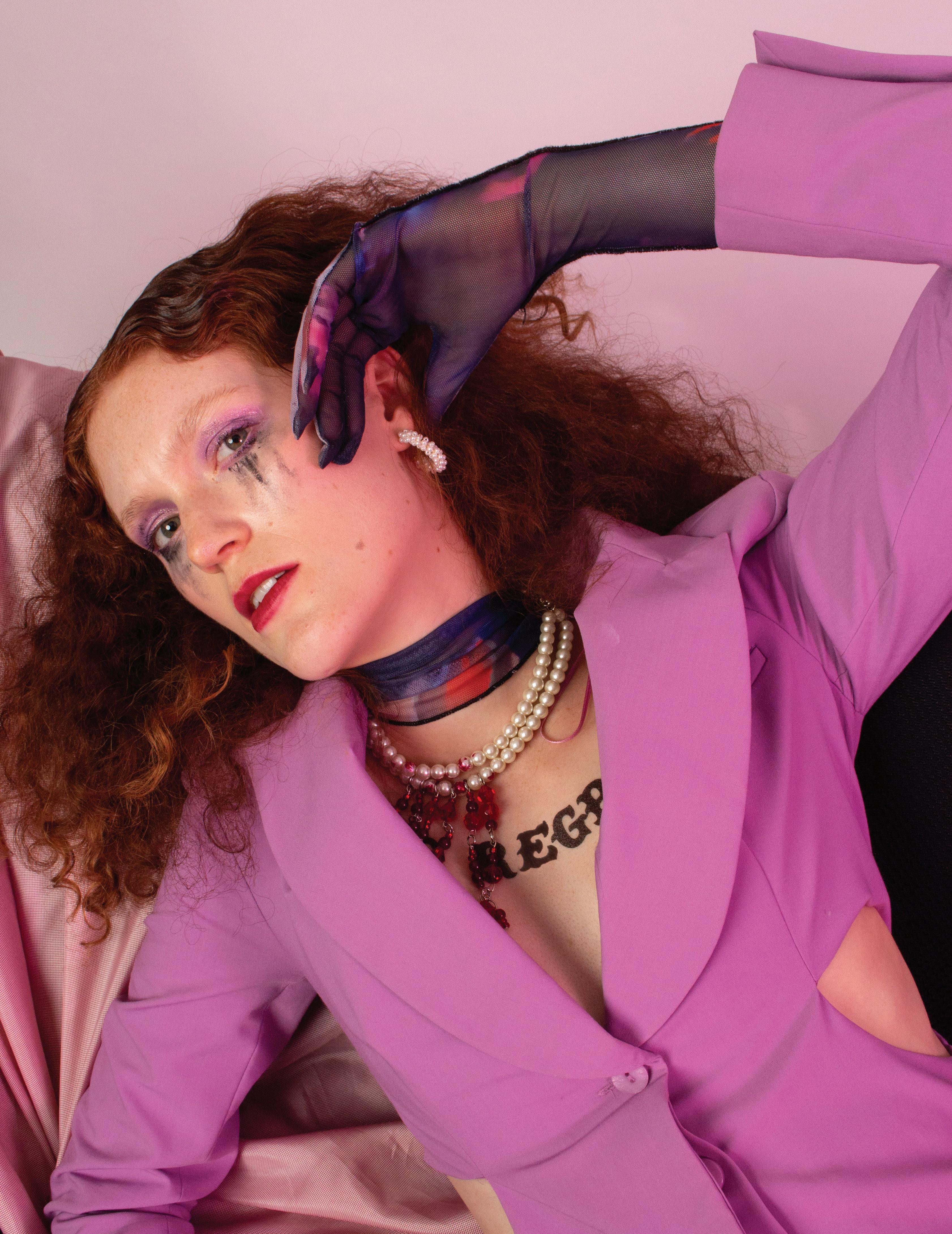
MODEL LEFT WEARS: Stylist's Own —Blazer Dress, Sara Fancy's—Gloves
MODEL RIGHT WEARS: Stylist's Own—Dress; Emma Altman—Earrings
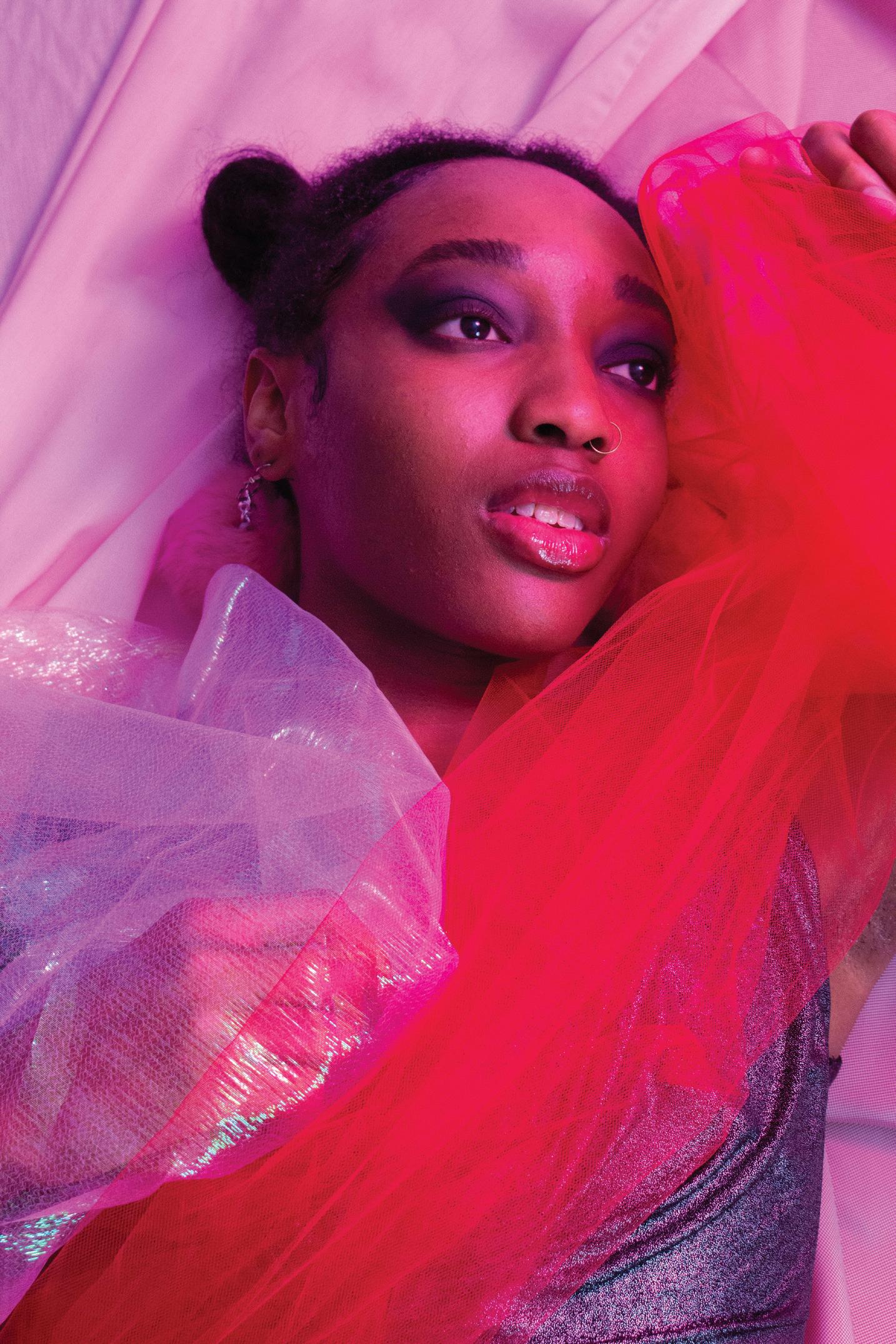
The Lexington Line • A/W 22 • vol 9 • no 1 47
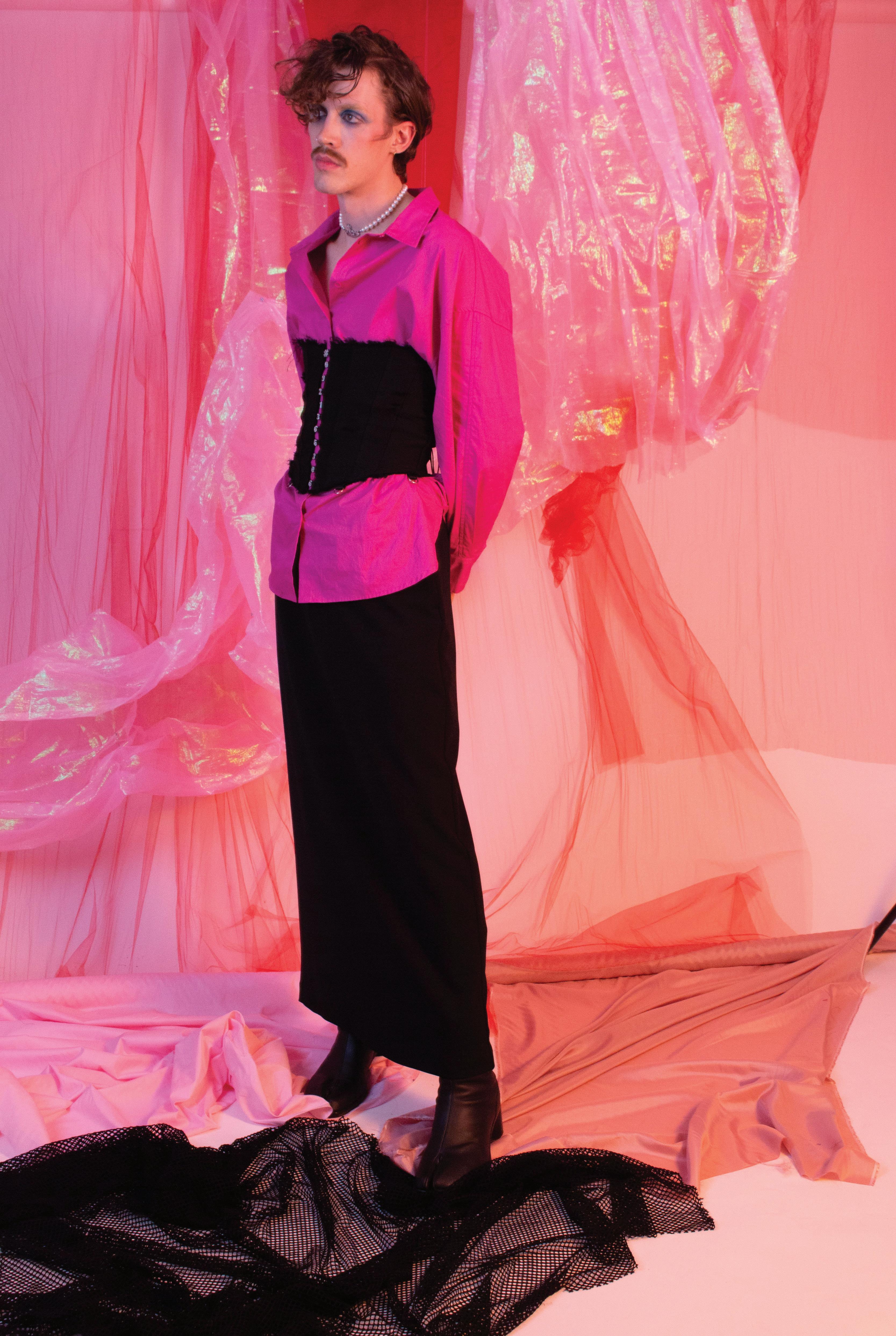
48 The Lexington Line •
MODEL LEFT WEARS: Forever 21—Button Up; Kattitude—Corset; Zara—Skirt; Vivienne Westwood—Necklace; Maison Margela—Shoes;
MODEL RIGHT WEARS: Kattitude—Top, Skirt; Steve Madden—Shoes; Stylist's Own—Sunglasses

The Lexington Line • A/W 22 • vol 9 • no 1 49
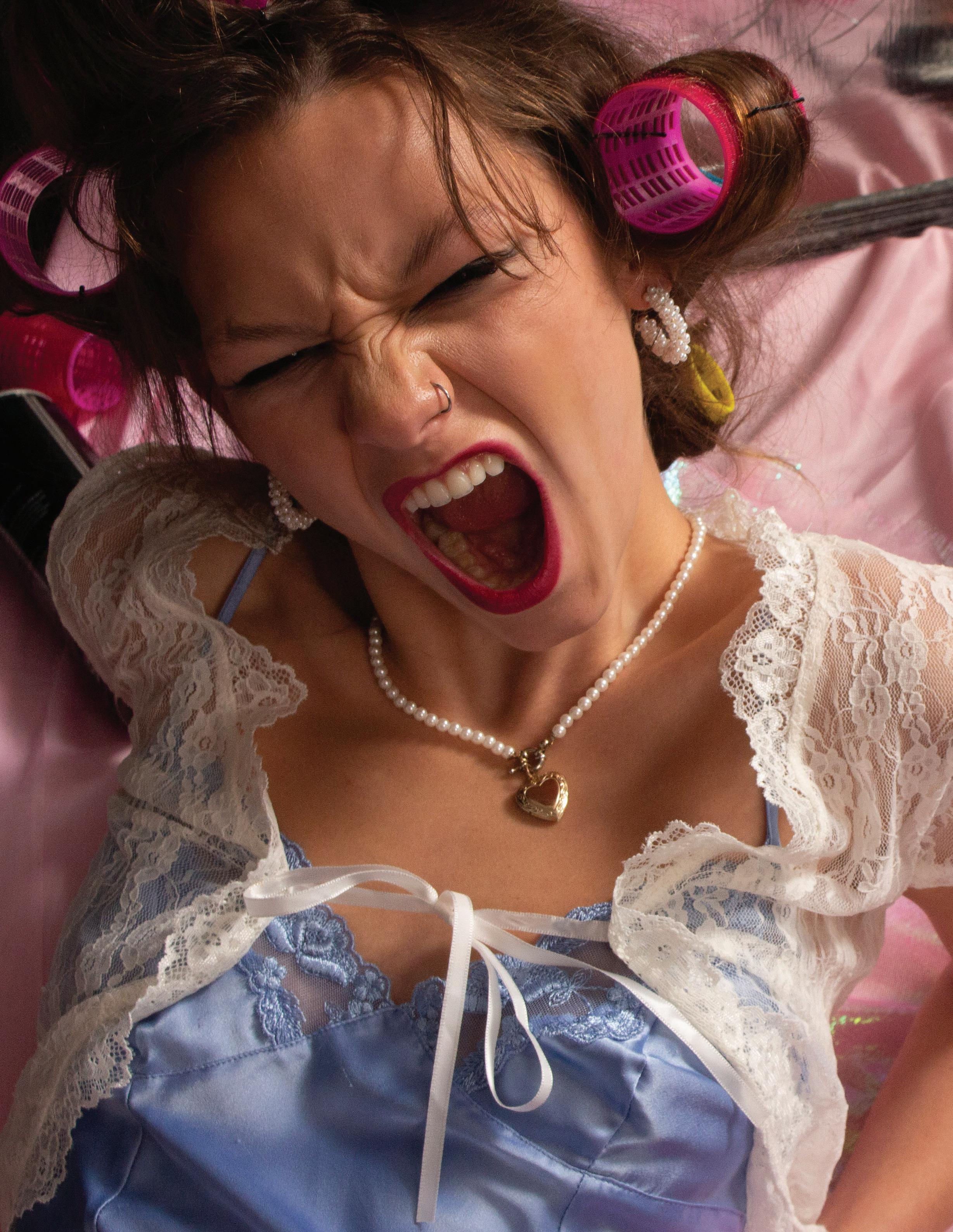
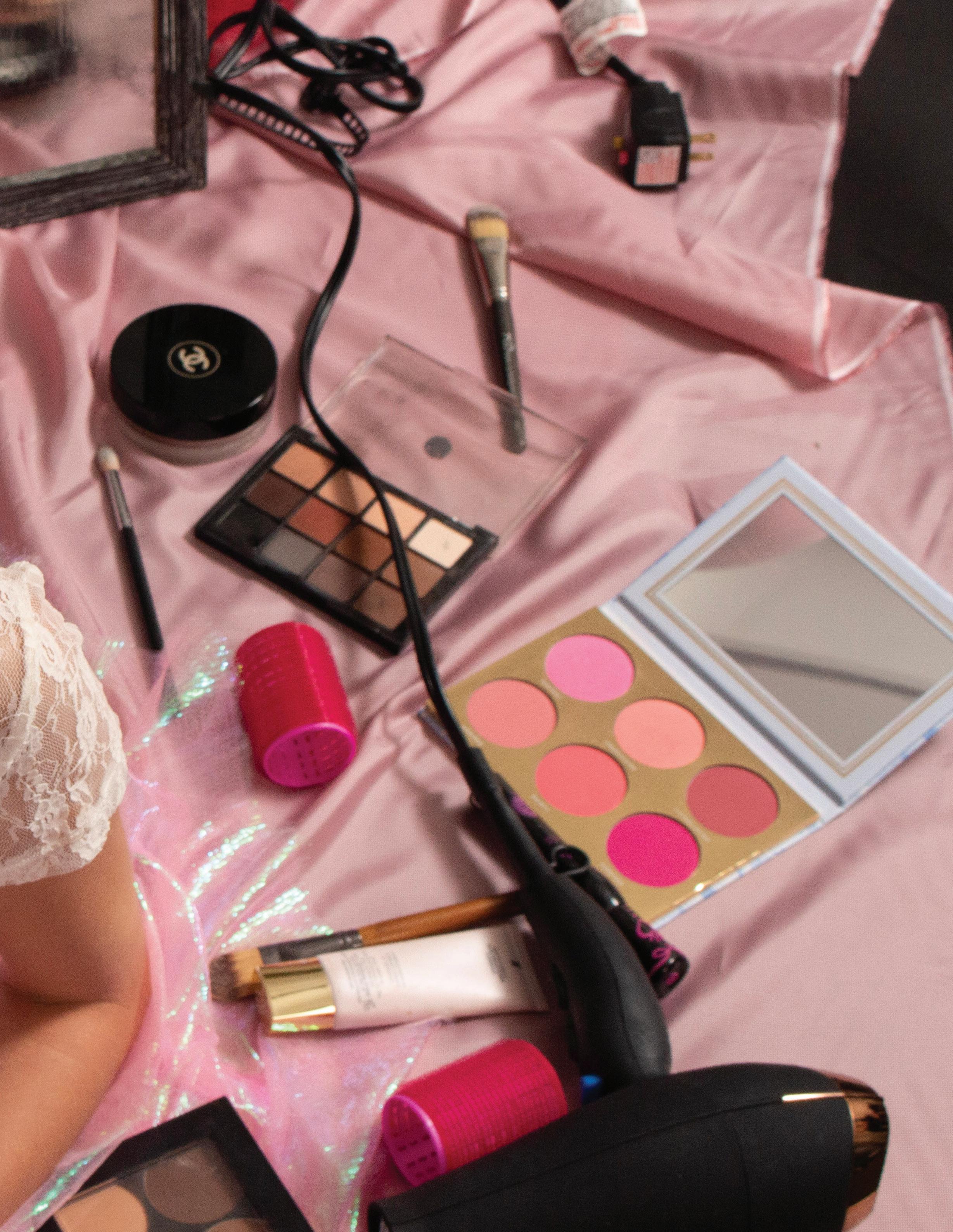 MODEL WEARS: Forever 21—Lace Top; Vintage Victoria's Secret—Slip Dress; Model's Own—Necklace
MODEL WEARS: Forever 21—Lace Top; Vintage Victoria's Secret—Slip Dress; Model's Own—Necklace

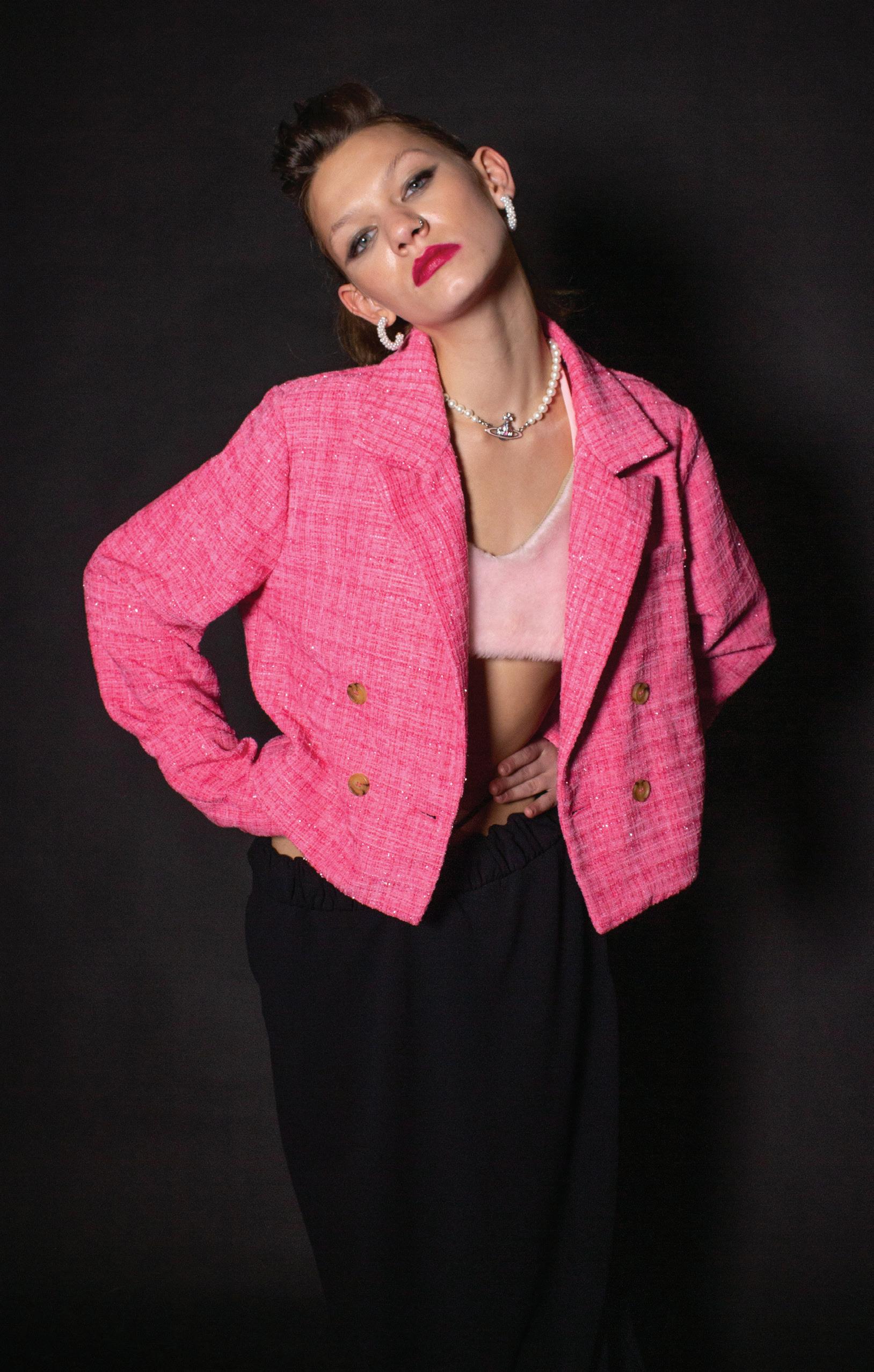
The Lexington Line • A/W 22 • vol 9 • no 1 53
MODEL LEFT WEARS: Sara Fancy's—Jacket; H&M—Pants; Model's Own—Rings
MODEL RIGHT WEARS: Bloomingdale's—Blazer; Emma Altman—Top Zara—Skirt; Vivienne Westwood—Necklace
MODEL LEFT WEARS: HYUNSE KIM—Button Up, Jacket MODEL RIGHT WEARS: Kattitude—Bra Top; Forever 21—Top; H&M—Slacks
HYUNSE KIM—Blazer MODEL FAR RIGHT WEARS: HYUNSE KIM—Button Up, Jacket
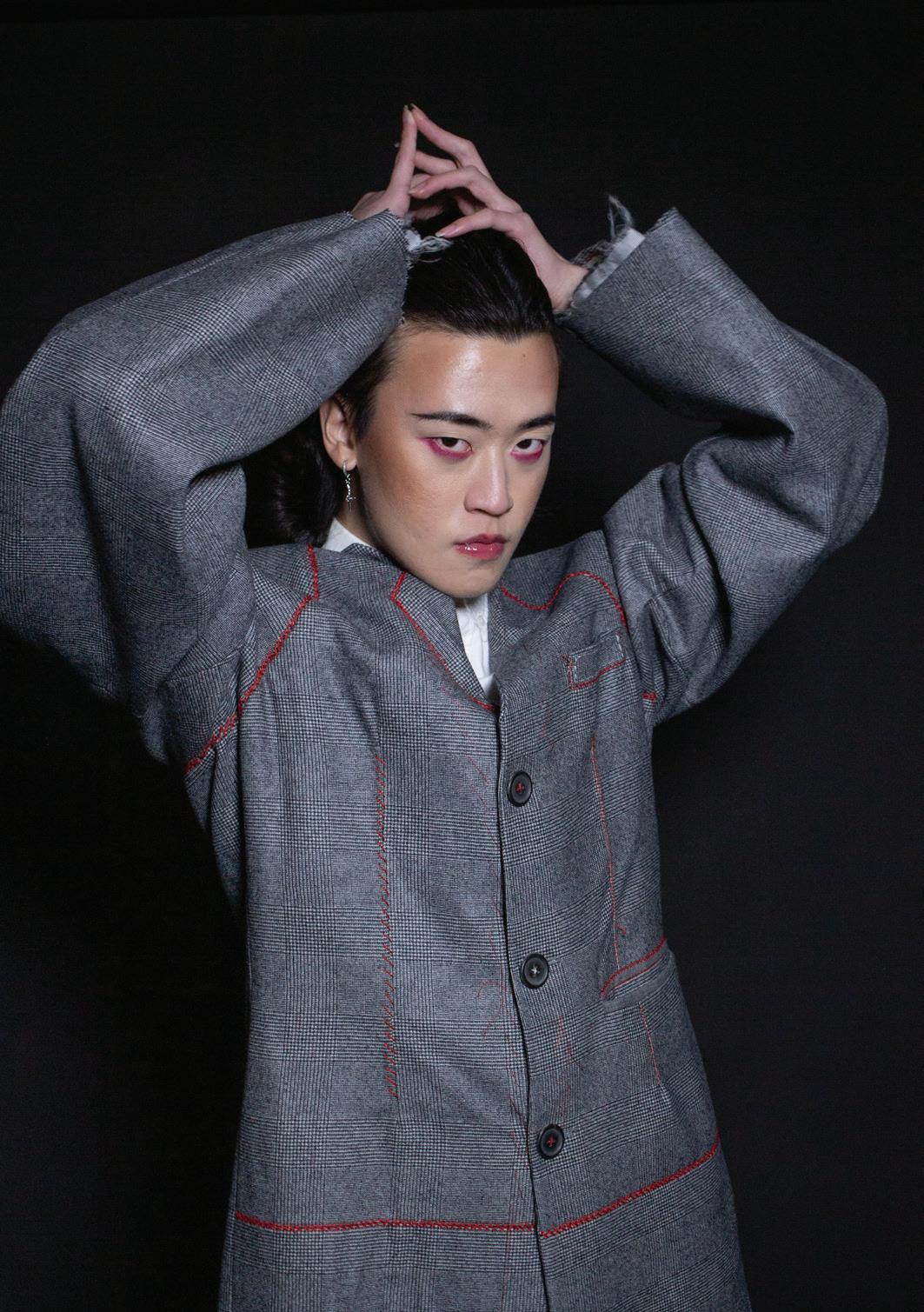
54 The Lexington Line • A/W 22 • vol 9 • no 1
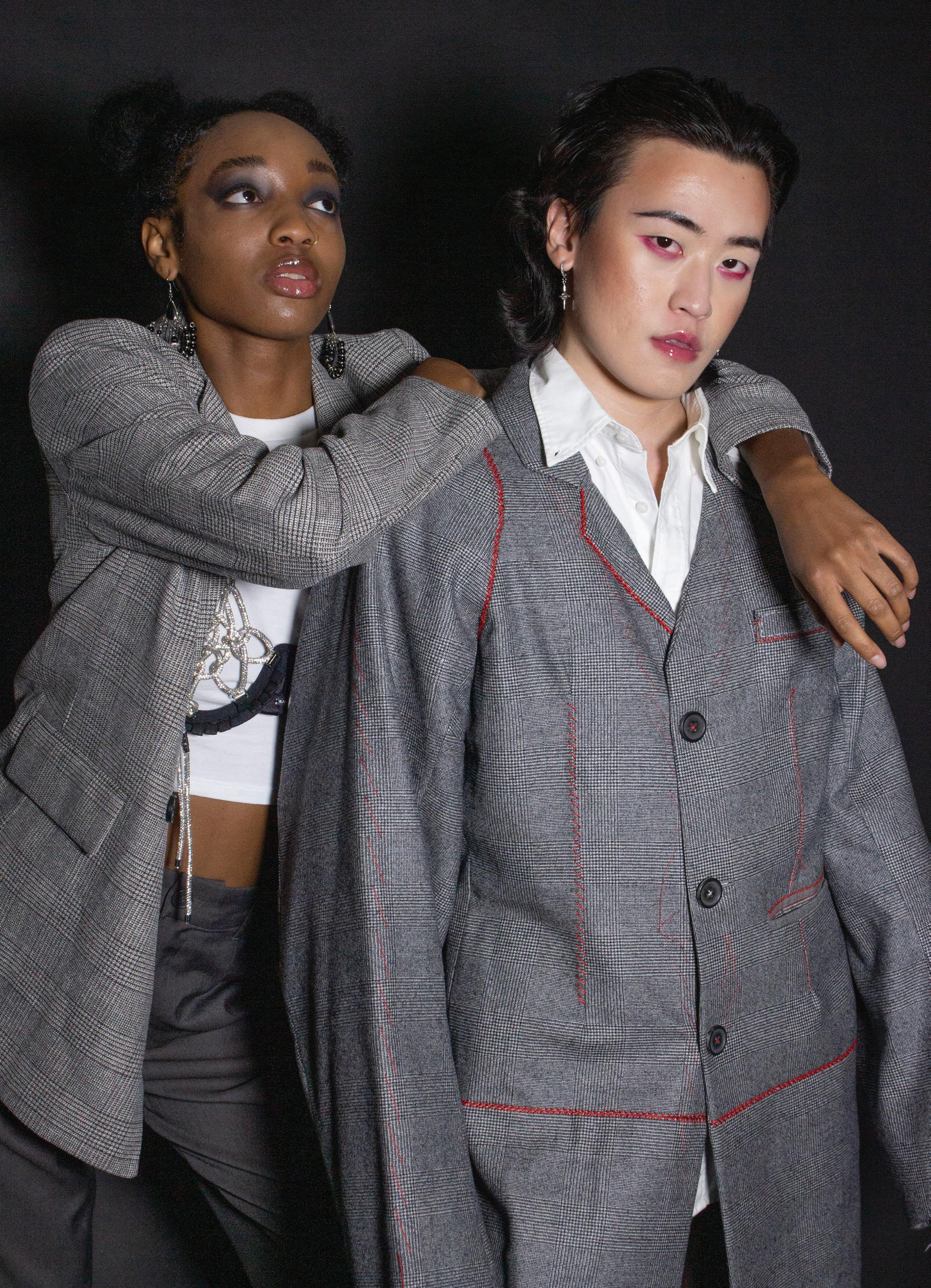
The Lexington Line • A/W 22 • vol 9 • no 1 55
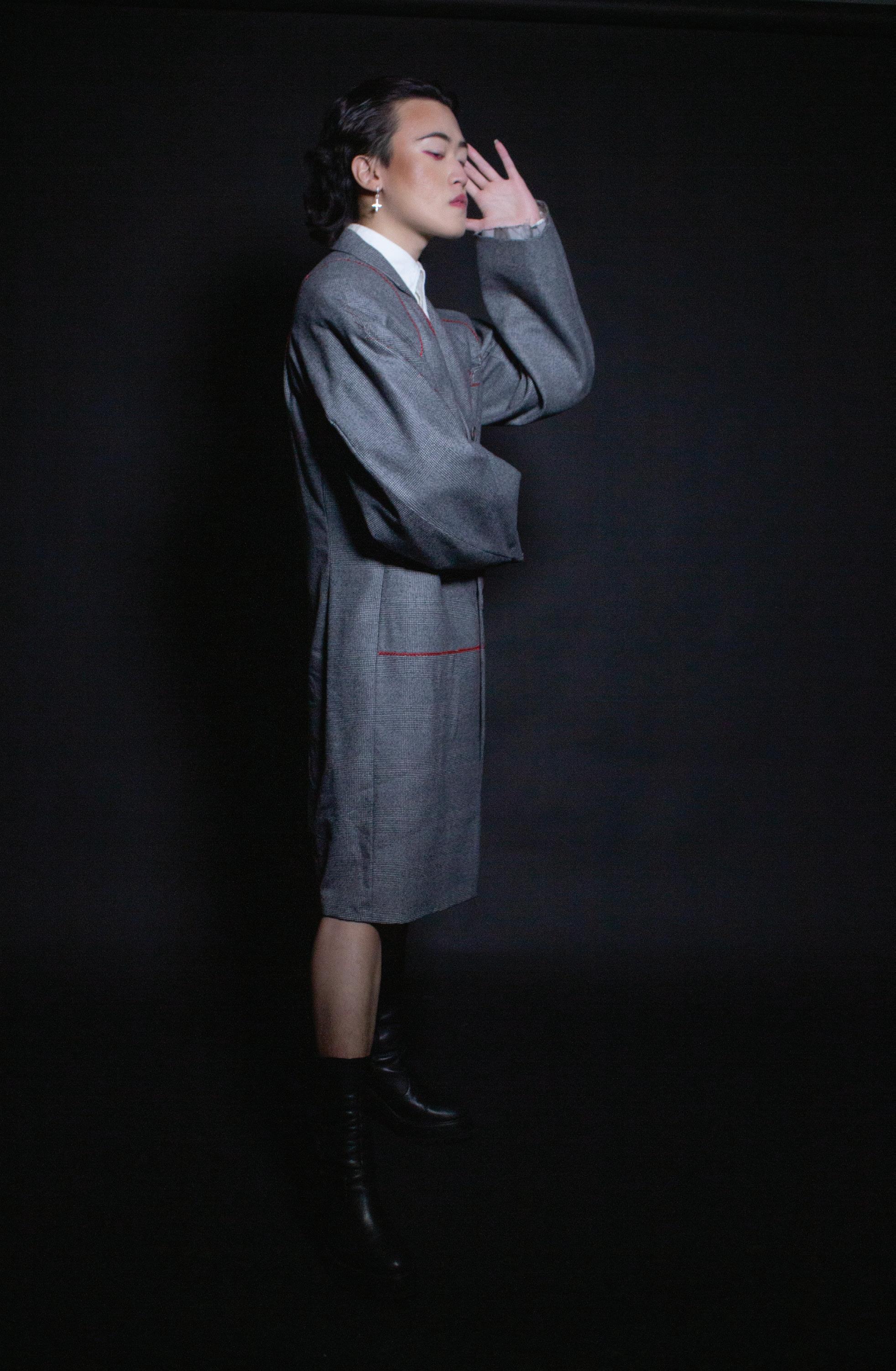
MODEL LEFT WEARS: HYUNSE KIM—Button Up, Jacket MODEL RIGHT WEARS: Kattitude—Bra Top; Forever 21—Top; H&M—Slacks; HYUNSE KIM—Blazer

The Lexington Line • A/W 22 • vol 9 • no 1 57

58 The Lexington Line • A/W 22 • vol 9 • no 1
MODEL LEFT WEARS: Kattitude—Bra Top; Forever 21—Top; H&M—Slacks; HYUNSE KIM—Blazer
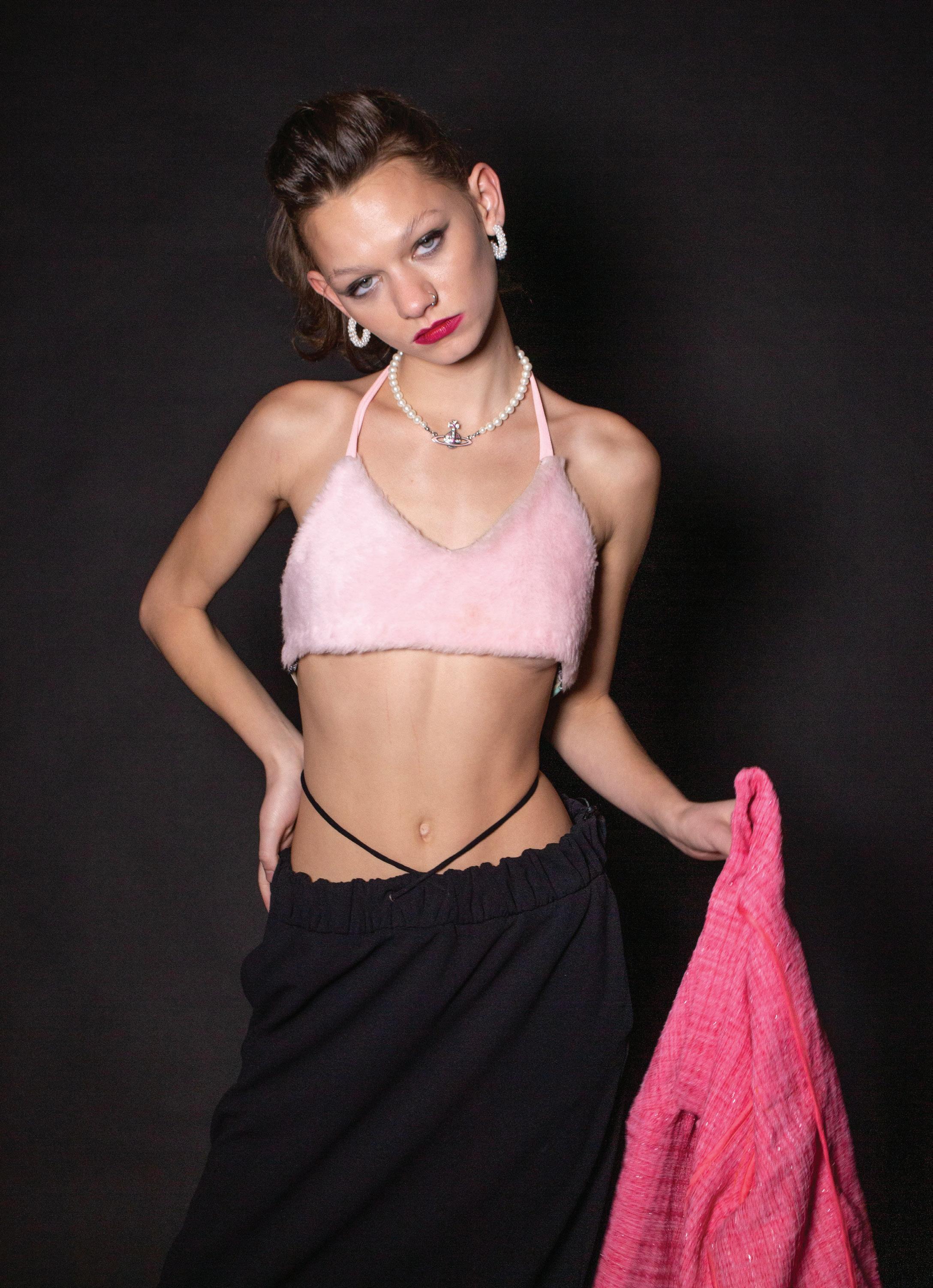
The Lexington Line • A/W 22 • vol 9 • no 1 59
MODEL RIGHT WEARS: Bloomingdale's—Top; Zara—Skirt; Vivienne Westwood—Necklace
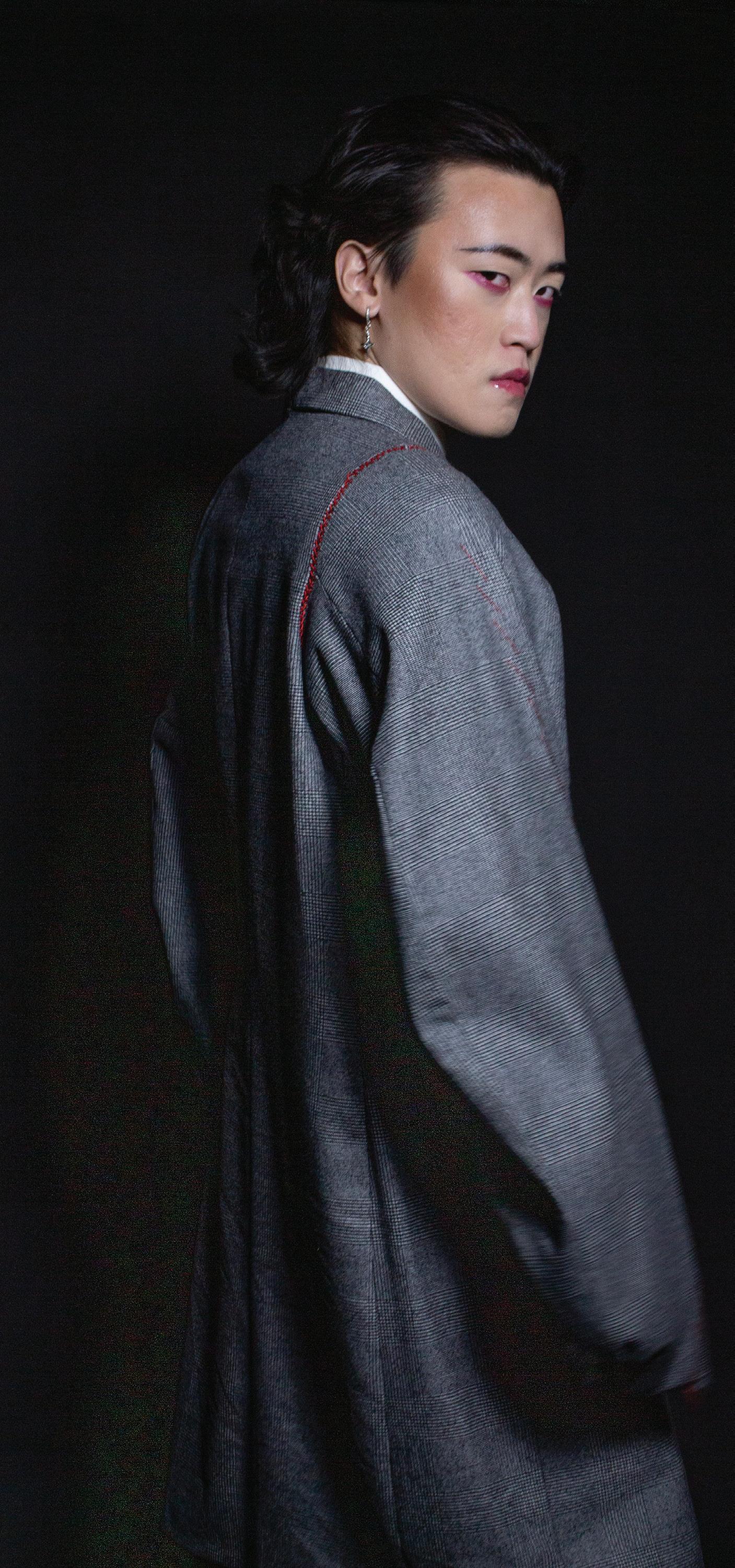
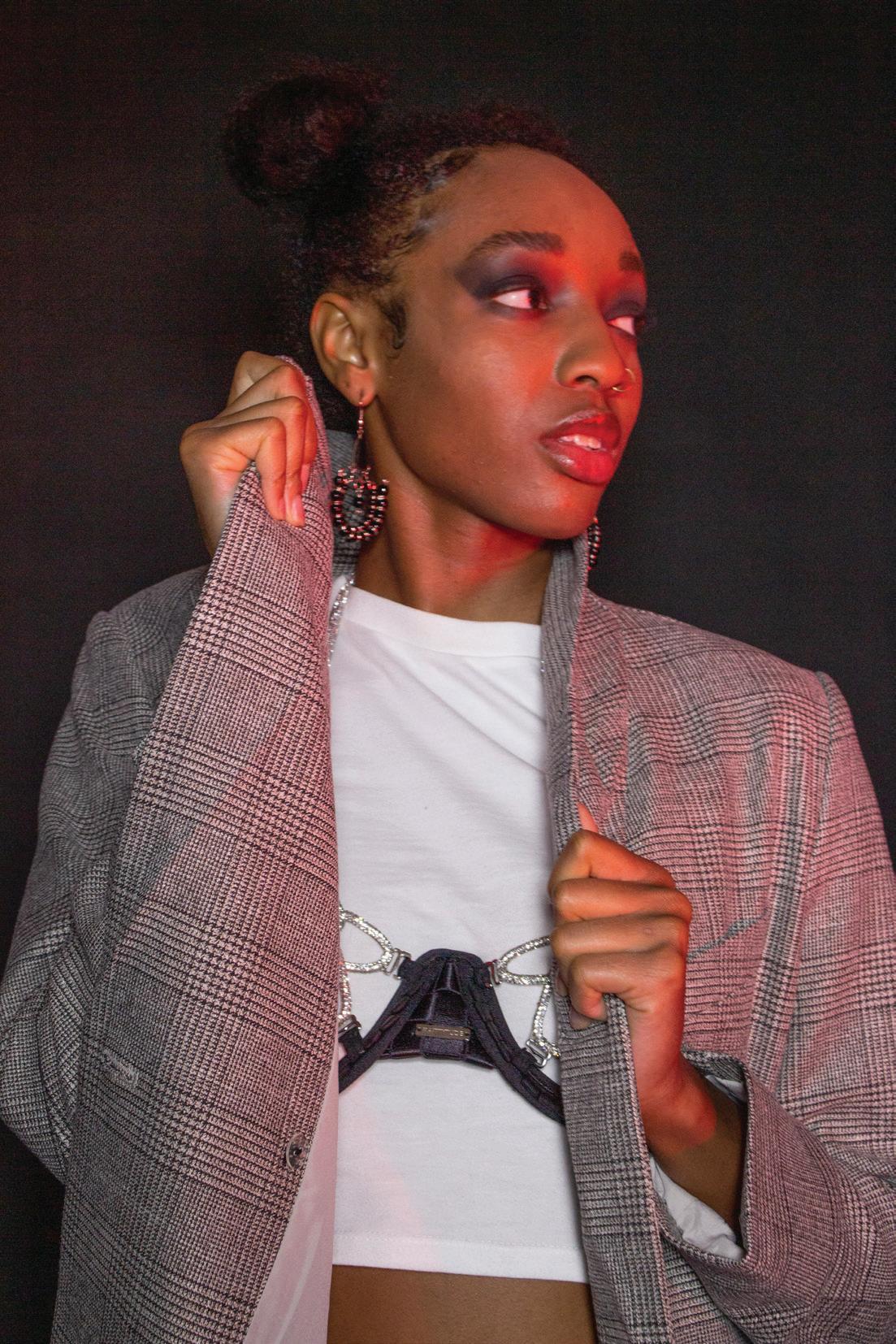
60 The Lexington Line • A/W 22 • vol 9 • no 1
MODEL LEFT WEARS: HYUNSE KIM—Button Up, Jacket MODEL ABOVE WEARS: Kattitude—Bra Top Forever 21—Top; H&M—Slacks; HYUNSE KIM—Blazer

The Lexington Line • A/W 22 • vol 9 • no 1 61
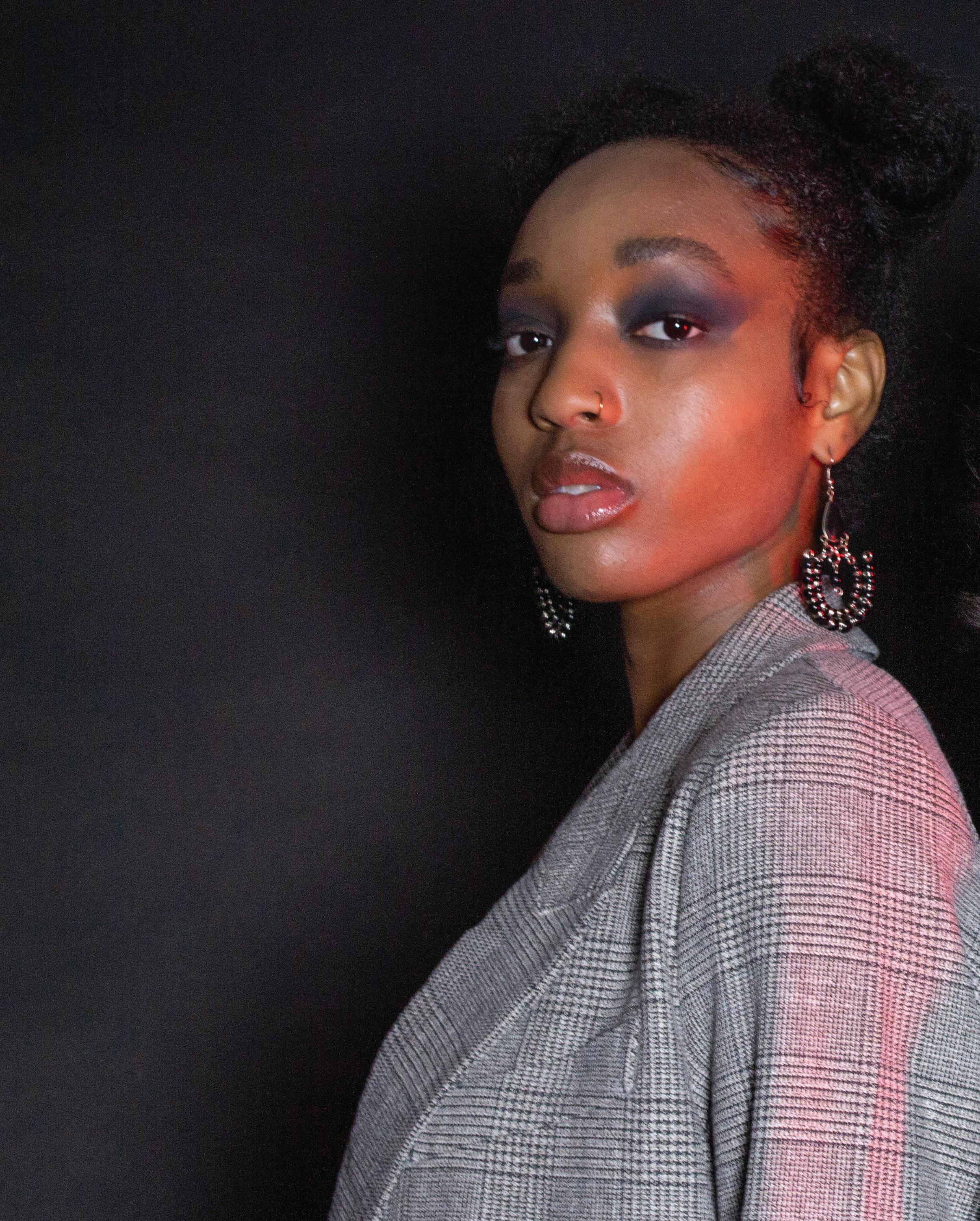
62 The Lexington Line • A/W 22 • vol 9 • no 1
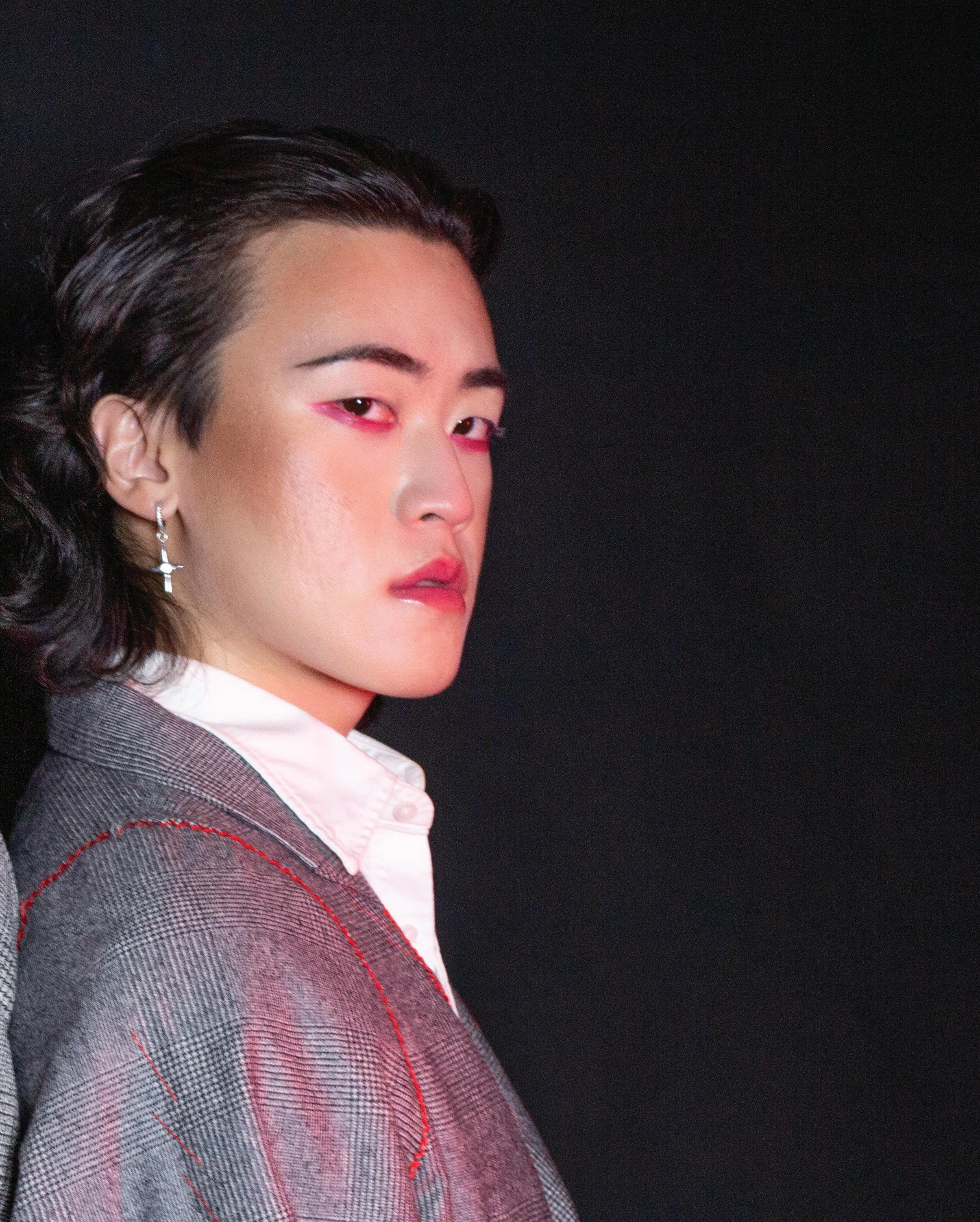
The Lexington Line • A/W 22 • vol 9 • no 1 63
 MODEL LEFT WEARS: Bloomingdale's—Blazer; Emma Altman—Top; Zara—Skirt; Vivienne Westwood—Necklace
MODEL LEFT WEARS: Bloomingdale's—Blazer; Emma Altman—Top; Zara—Skirt; Vivienne Westwood—Necklace

WEARS:
MODEL RIGHT
Emma Altman—Top; Kattitude—Skirt; Model's Own—Boots
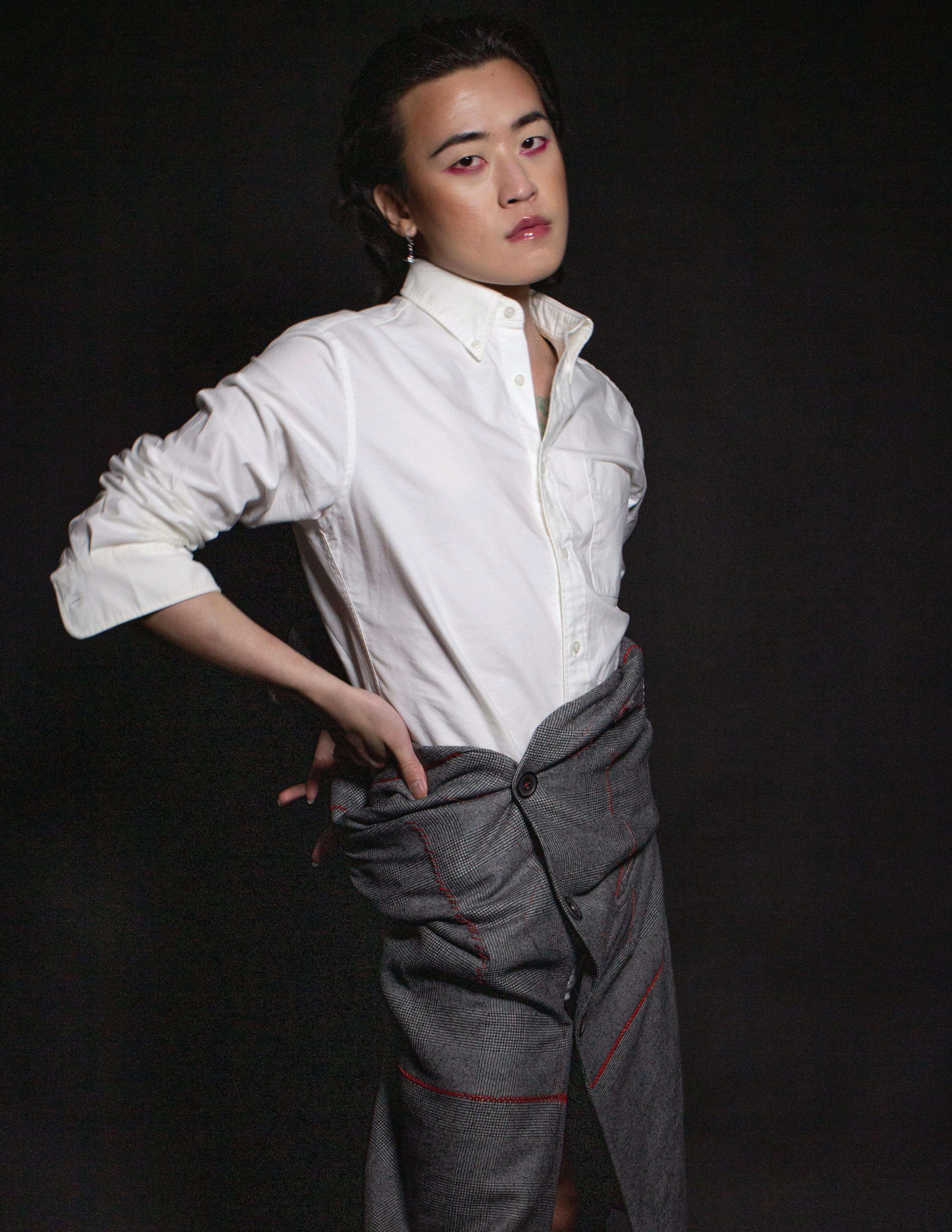
MODEL ABOVE WEARS: HYUNSE KIM—Top, Slacks; Stylist's Own—Corset; Vivienne Westwood—Necklace
MODEL LEFT WEARS: HYUNSE KIM—Button Up, Jacket
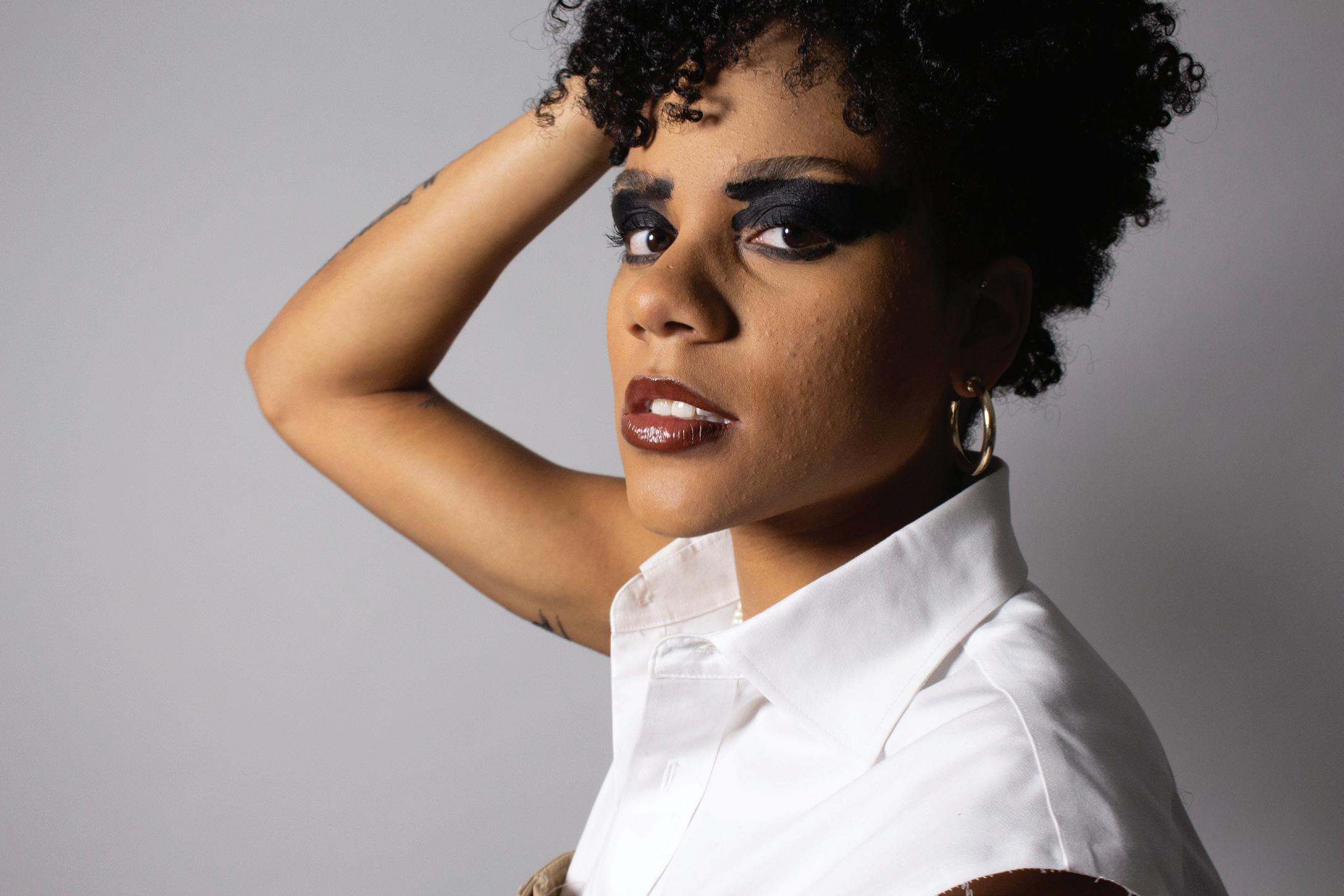
The Lexington Line • A/W 22 • vol 9 • no 1 67

68 The Lexington Line • A/W 22 • vol 9 • no 1

MODEL LEFT WEARS: Emma Altman—Top; Sara Fancy's—Skirt, Gloves MODEL RIGHT WEARS: HYUNSE KIM—Top, Slacks; Stylist's Own—Corset; Vivienne Westwood—Necklace
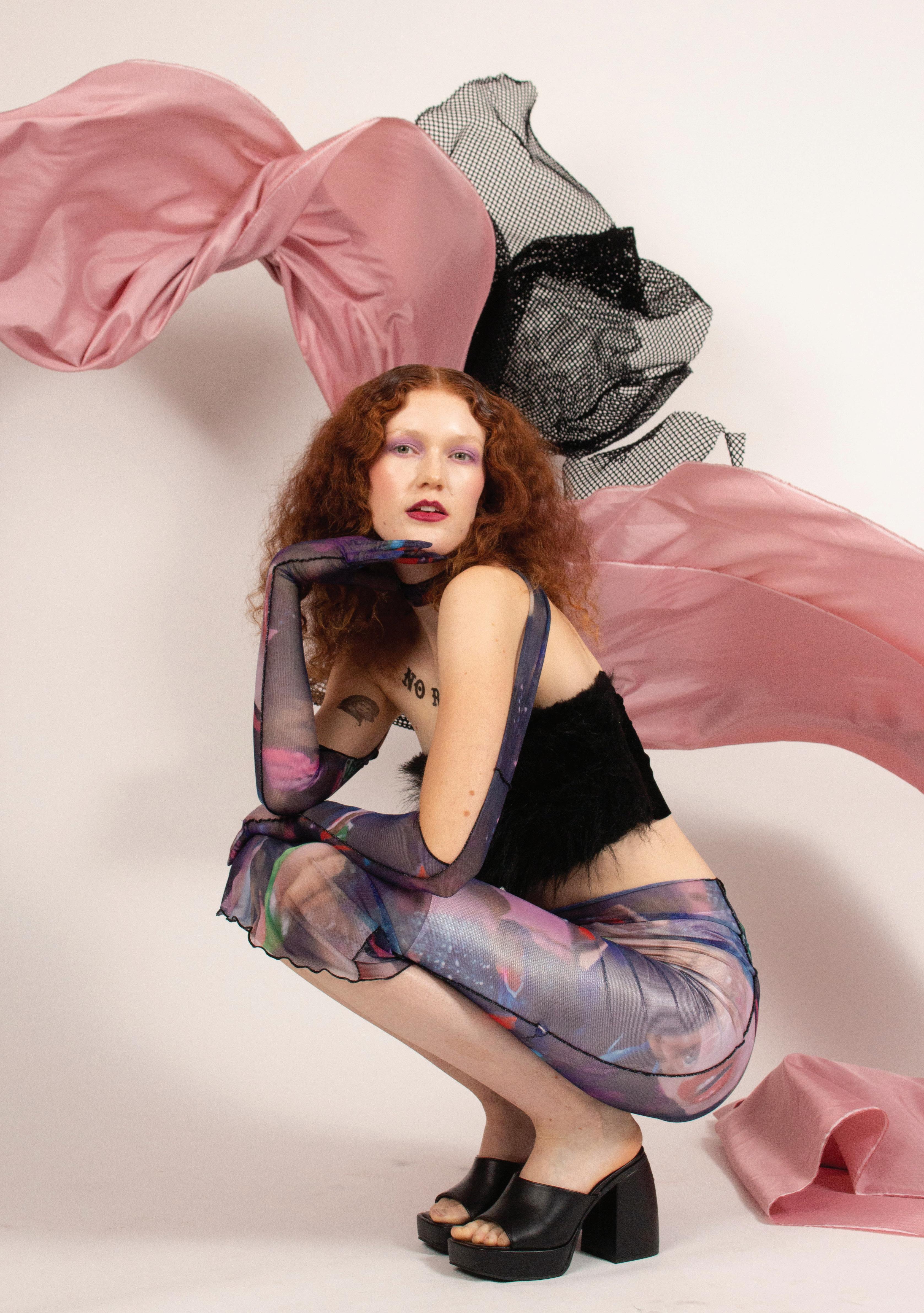 MODEL LEFT WEARS: Emma Altman—Top; Sara Fancy's—Skirt, Gloves
MODEL LEFT WEARS: Emma Altman—Top; Sara Fancy's—Skirt, Gloves
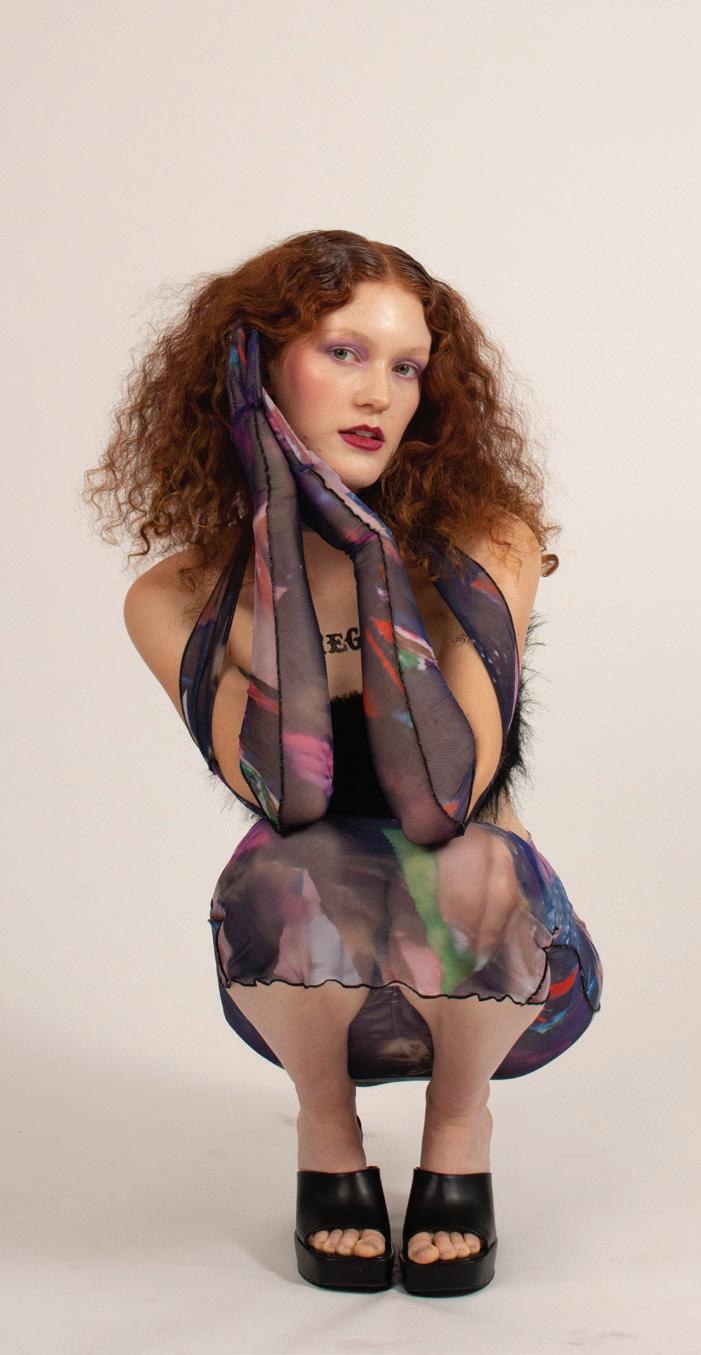
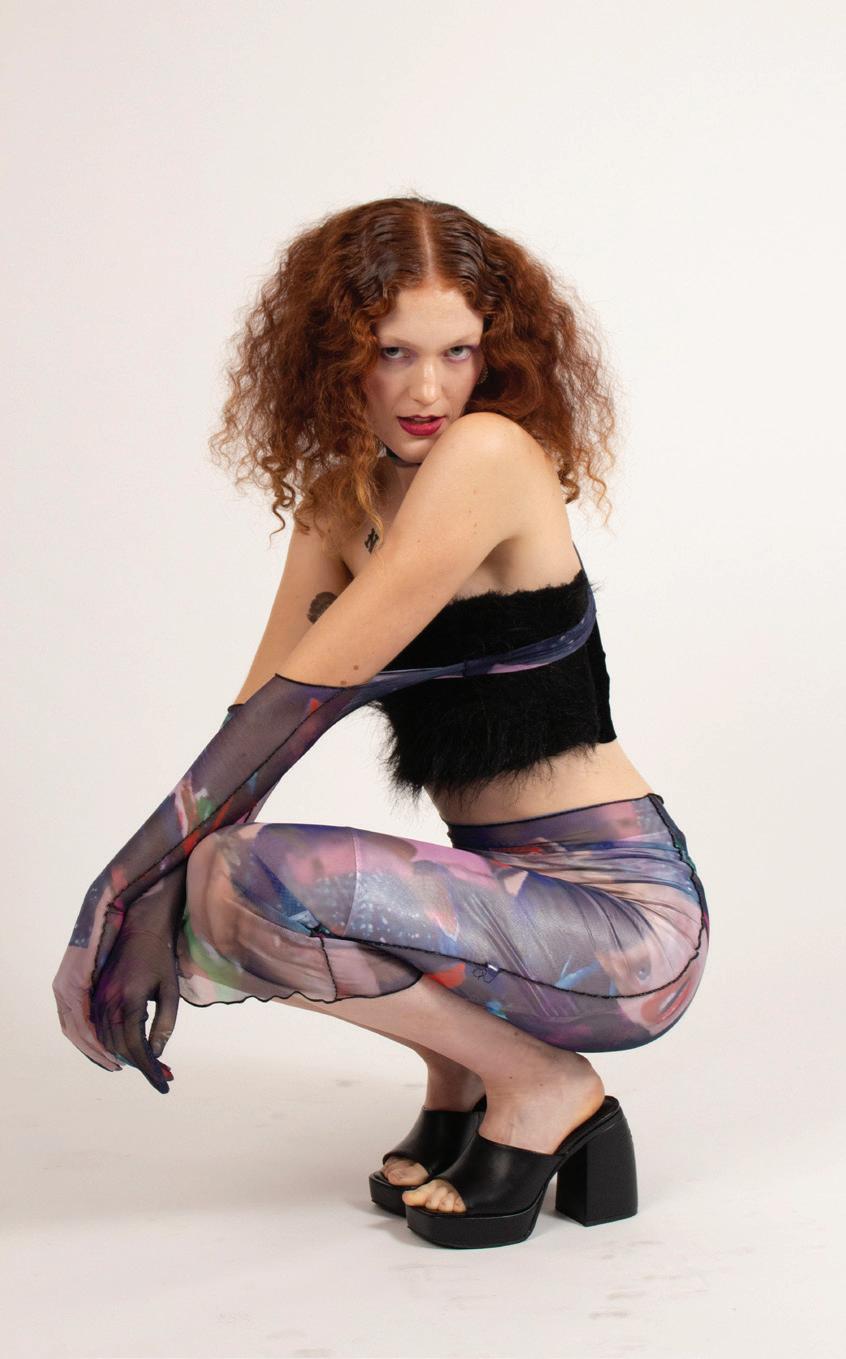

The Lexington Line • A/W 22 • vol 9 • no 1 71
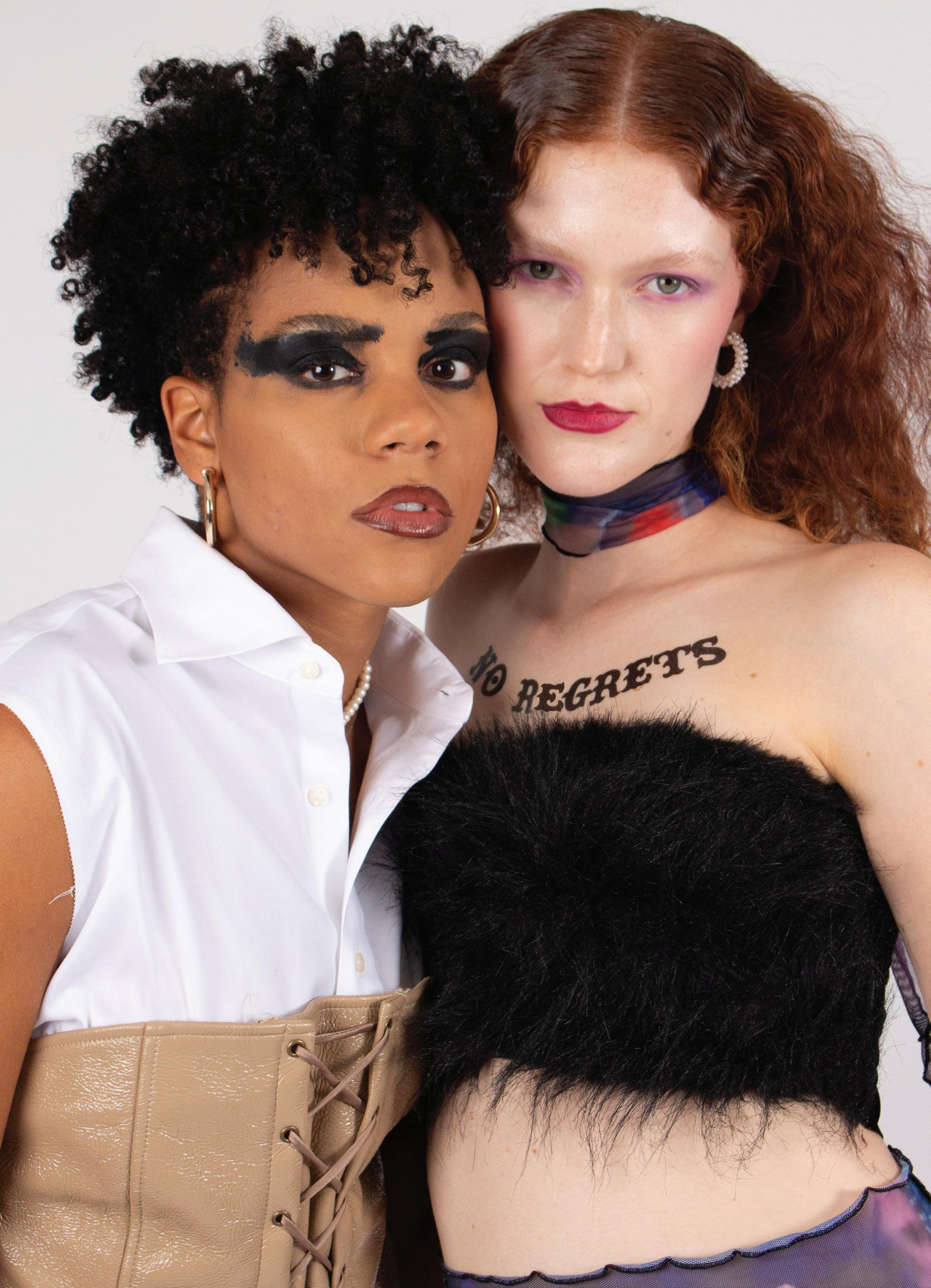
72 The Lexington Line • A/W 22 • vol 9 • no 1
MODEL LEFT WEARS: HYUNSE KIM—Top, Slacks

Stylist's Own—Corset; Vivienne Westwood—Necklace
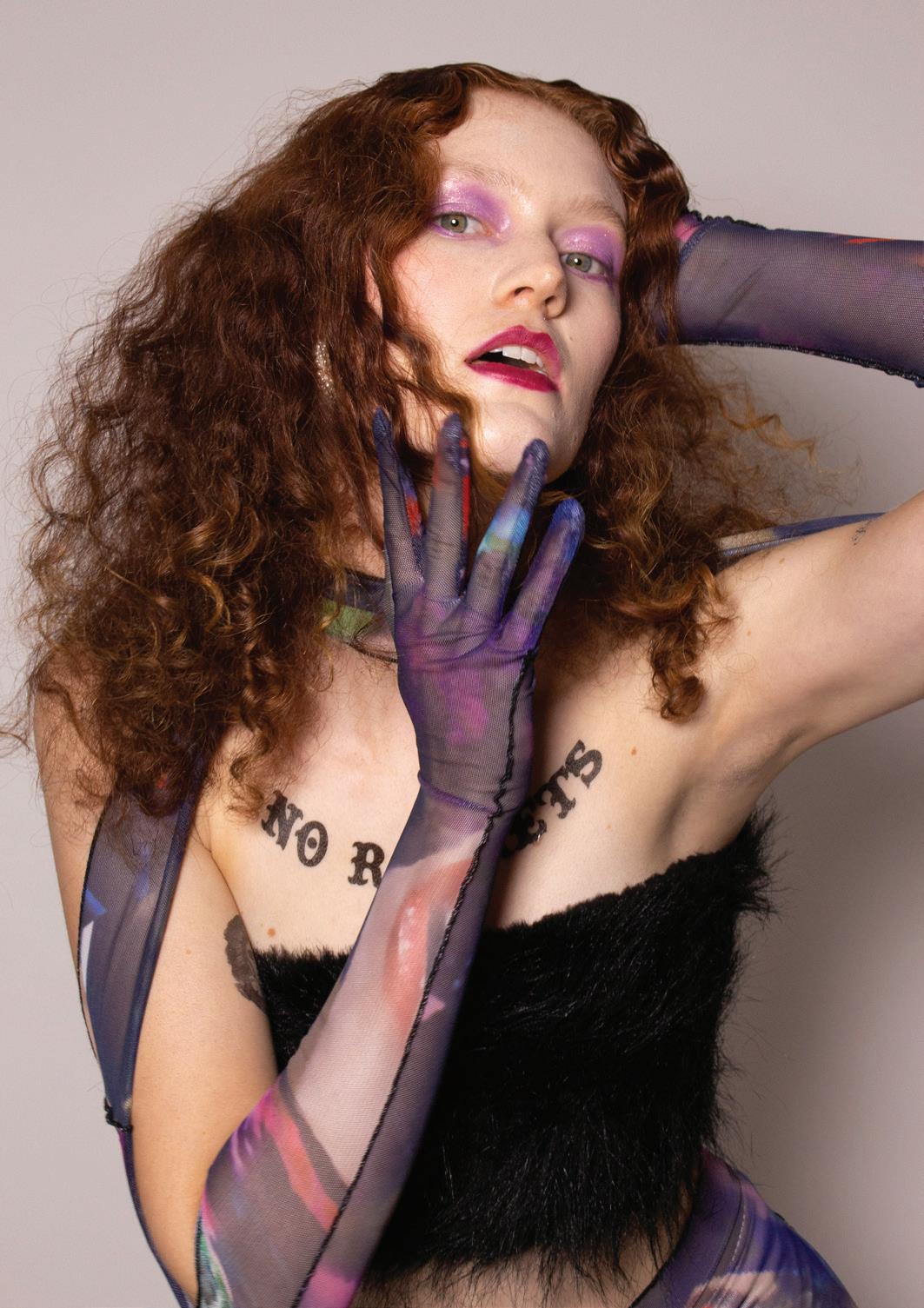
MODEL RIGHT WEARS: Emma Altman—Top
Sara Fancy's—Skirt, Gloves
The Lexington Line • A/W 22 • vol 9 • no 1 73

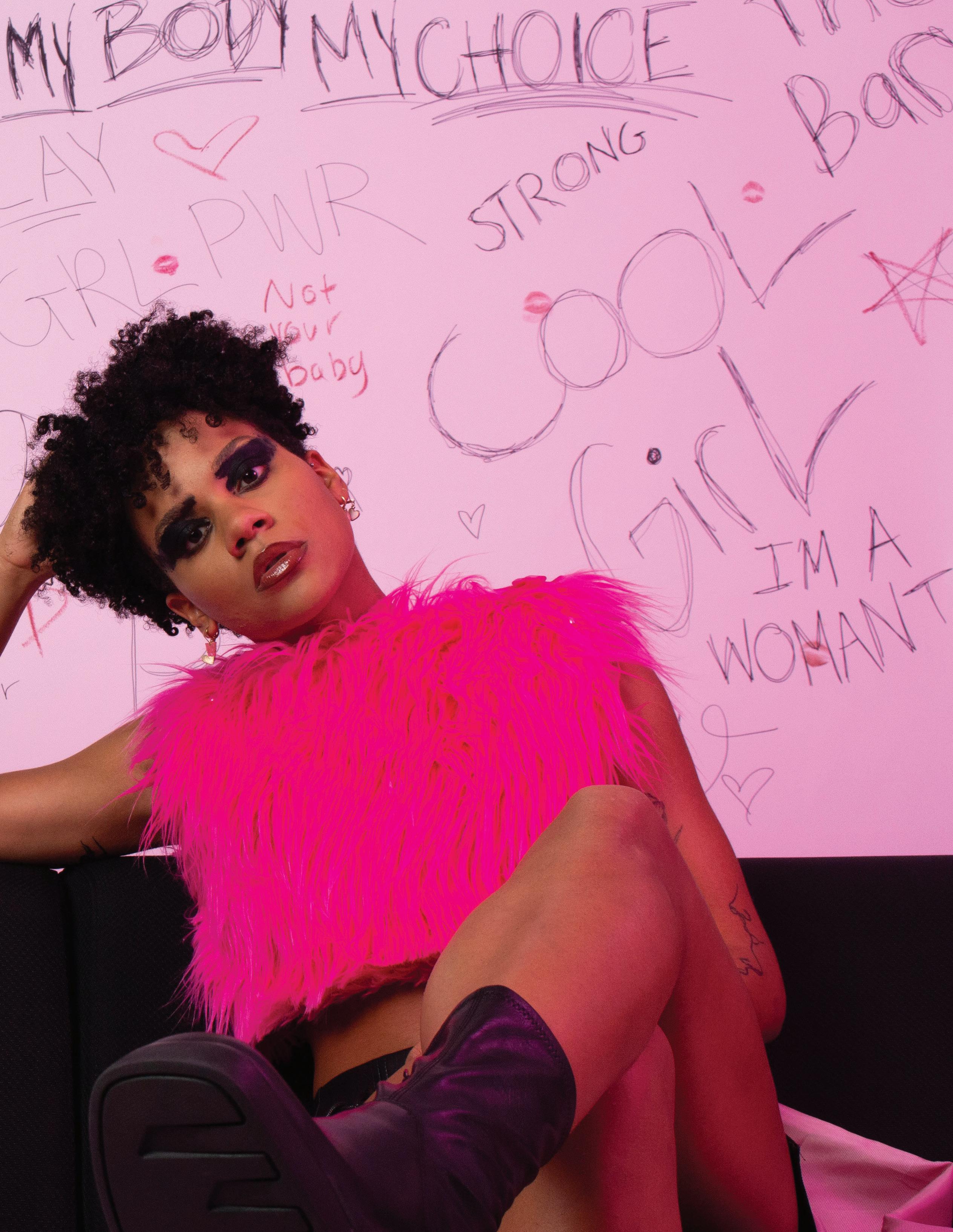
show your shadow
how to tap into you dark feminine energy
by sofia naranjo
When “Dark Feminism” emerged as a trend on TikTok this year, much of the conversation focused on getting men to become obsessed with you or getting your crush—maybe your ex—to text you. The resulting “confidence” prioritizes male attention and ignores the truly empowering part of dark feminism: finding and keeping boundaries, being assertive and dominant, and feeling confident with your own sensual energy.

76 The Lexington Line • A/W 22 • vol 9 • no 1
This version of dark feminism means empowering yourself by shifting from a wounded mindset. The dark feminist woman becomes magnetic, seductive, powerful, and authentic. You may already know some of these women in your life. You might find them intimidating, desirable, or inspiring.
There are only a few creators on TikTok that engage with the idea without making it about summoning a romantic partner. Creator @countinghercoin produced a series of videos earlier this year on the process of tapping into the dark feminine; this includes shadow work, which is journaling and facing inner shame, regret, anger, and limiting beliefs.
Shadow work introduces you to the dark parts of yourself that you might find undesirable. It’s coming face to face with the limiting beliefs you’ve had about yourself for so long—your dark shadow.

Shadow work is a journey and does not happen all at once. It is a process of questioning and discovering what you’ve repressed to eventually heal your wounded self. Carl Jung, who is known as one of the fathers of modern psychology, developed the shadow work approach more than 80 years ago.
“Everyone carries a shadow, and the less it is embodied in the individual’s conscious life, the blacker and denser it is,” Jung wrote in 1938’s Psychology and Religion. “If an inferiority is conscious, one always has a chance to correct it…but if it is repressed and isolated from consciousness, it never gets corrected.”
Shadow work is primarily done by journaling and using prompts that allow for deep submersion in your own thoughts. The shadow self can develop from past trauma, social norms, or anything that strongly affects others, so it’s important to tread lightly when practicing or have guidance from a professional like a therapist.
It’s essential to face the shadow. It results in selfunderstanding and acceptance, better performance in the world, stronger relationships with yourself and others, the feeling of security, the establishment of solid boundaries, and an untouchable sense of confidence. The dark feminine woman carries a powerful presence while internally feeling whole. The dark feminine woman is an ideal version of yourself whose worth is self-determined.
Try Some Shadow Work
Here are some examples of questions you might consider answering your journal:
Do certain traits in others stir up out-of-proportion emotions or reactions in you? Who do you look up to? What qualities do you see in people you admire?
What was one time you remember feeling wronged as a child? How did you react? How has this affected you in adulthood?
What’s one trait you see in other people that you wish you had? Why don’t you possess this characteristic yourself?
What toxic traits have you recognized in your parents? How did it make you feel when you realized that your parents weren’t perfect? Do you possess these traits yourself?
The Lexington Line • A/W 22 • vol 9 • no 1 77

78 The Lexington Line • A/W 22 • vol 9 • no 1
DIRTY DISCOURSE
The "clean girl aesthetic" was co-opted from people of color
 By: Isabella Ortiz
By: Isabella Ortiz
The Lexington Line • A/W 22 • vol 9 • no 1 79
When the “Clean Girl Aesthetic” first trended on TikTok in early 2021, it seemed like a harmless way for women to showcase their simple and clean beauty routines: a look consisting of very minimal makeup, dewy skin, fluffy brows and sleek hair. But it wasn’t long before some head-turning issues arose, especially among women of color.
Some criticized the trend because it alienated anyone who did not match an unrealistic standard. Heavily made-up, textured or acne-prone skin became unattractive, making many women feel “less than.”
But a larger issue emerged. Mostly, the aesthetic highlighted thin white women with seemingly perfect skin attempting to pioneer looks that had been around for generations. Because it was not inclusive to people of color, plus-size women or women with disabilities, it implied there is a “dirty girl” aesthetic. The irony was that the POC women alienated by the trend were the ones who created it in the first place.
The components of the clean girl aesthetic are nothing new: gold hoops, slicked back hair with smoothed down edges, and dark brown lip liner. Gold jewelry and slicked back hair were popular among the Latina and Black communities generations before celebrities started making them a trend.
In an article for Hip Latina about problems with the clean girl aesthetic, Nena Lezama recalls being uncomfortable wearing hoop earrings around white people.
“I remember working at the tech giant Google, feeling like I needed to swap my hoops for diamond studs and trade my curls for straight, tamed (clean) hairstyles,” she writes.
She goes on to explain, “It wasn’t until recently that the same fashion and beauty rocked by Black and brown girls finally became accepted because it was worn by more ‘socially accepted’ kids.”
Even today, she says, she hesitates to wear hoop earrings to class.
“Unfortunately, a lot of that also depends on if I have a safe space. Meaning, there are other girls of color who will understand, and I don’t feel othered,” she says.
80 The Lexington Line • A/W 22 • vol 9 • no 1
Many POC creators on TikTok pointed out the hypocrisy, arguing that this “trend” represented historic Latina culture. Many girls remembered having been bullied for wearing slicked back buns and hoops, receiving comments that it was “trashy” or “ghetto.”
Celebrity model Hailey Bieber created a large uproar on TikTok when she posted a video sharing her new favorite lip combo. The combo includes a dark brown lip liner and a clear gloss—a lip combo that has stood the test of time among Latina women for generations. However, Bieber coined this new beauty technique as the “brownie glazed lip.”
Bieber was accused of everything from appropriation to ignorance. Lining your lips and adding a gloss is no revolutionary technique, and Bieber's apparent obliviousness angered Latina women.
The “brownie glazed lip” perpetuates the clear white privilege social media has amplified and reminds everyone that a trend only becomes mainstream when a skinny, white woman partakes.
“It’s ignorance in the sense that she made it seem as if this were a new trend when she tinted her lips due to lack of melanin,” says Raquel, a 21-year-old junior at LIM College.
Melody, a 19-year-old sophomore at LIM, reinforces the point that the look has been worn by Black and Hispanic women for generations.
“And here comes a white woman joining the space, who wants to make it her own and market it to her audience who is primarily white. It’s definitely ignorance,” she says.
Another argument resurfaced during the controversy—that it should not be POC’s responsibility to educate white women about cultural appropriation.
Nevertheless, trends like this are frustrating and exhausting. They remind us how much women of color continuously need to redirect cultural praise for those who don’t bother to learn on their own.
The Lexington Line • A/W 22 • vol 9 • no 1 81
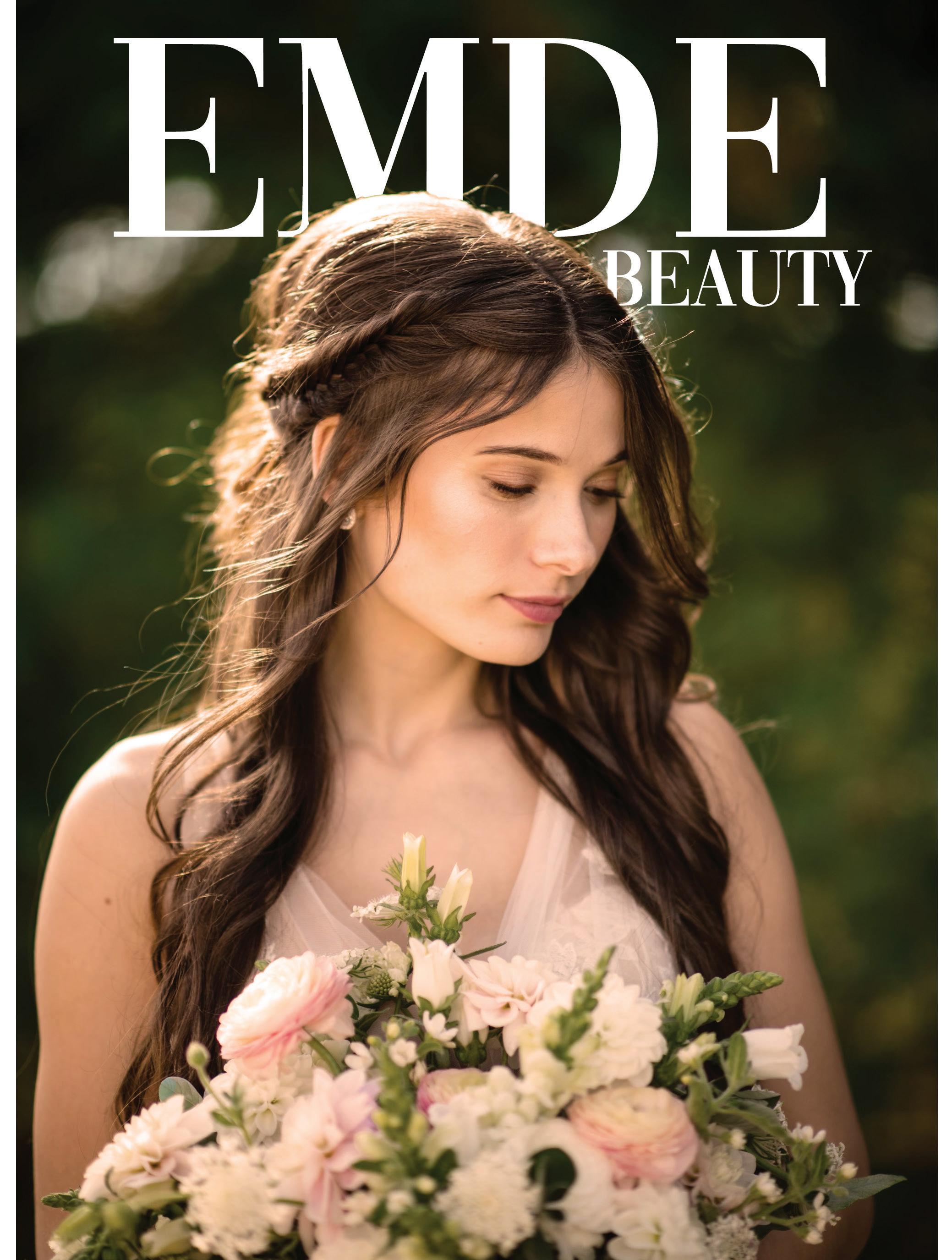

82 The Lexington Line • A/W 22 • vol 9 • no 1 emma.defelice99@gmail.com 203-745-9565 scan for instagram CERTIFIED FREELANCE MAKEUP ARTIST

The Lexington Line • A/W 22 • vol 9 • no 1 83
Confesions of an Accessory Addict:
A Shopping Addiction Can Really Creep Up On You.
By Ashanty Rivera
Anaddiction, as most of us know, can take years to develop or overcome. Like smoking, drugs, and drinking, a shopping addiction can be minacious. For me, it all started when I began to make my own money. No one could tell me not to take my fresh new debit card and shop for everything on my Pinterest board.

Before I knew it, I started working in retail, and my addiction worsened. I grew more fond of accessories, buying everything from earrings to trendy socks. There are times when I find myself awakened by the thought of buying more accessories to add to my already overflowing collection. I spend hours scrolling through Depop and stalking small businesses and influencers on Instagram to get my fill.
I have said this before, but accessories are the literal mold to building a memorable and stylish outfit that is worth an Instagram post or two. Whether it is a necklace, a ring, a set of bangles, or those signature silver hoops that your mother had when she was 15, the accessories you own are the building blocks of your style.
For me, it is everything. I need every accessory that I lay my eyes on, no matter the price. This can be challenging on a college student’s budget, especially when I am willing to spend over $100 on a piece of archival jewelry that I will probably wear once or twice.
I will never stop loving accessories, but I don’t think I was prepared for the effects an obsession like this would have on my mental health. Like any other addiction, it has me in a chokehold. I decided it was time to get help from a shopping addiction professional.
Jessica Dell is a Utah-based psychotherapist, member of the National Association of Social Workers, author, speaker, mother, and influencer for all things mental health.
I got an opportunity to speak with her about my accessories addiction and pick her brain about how a shopping addiction can degrade your mental health. What I thought was going to be a quick chat turned into a super informative half-hour $150 therapy session and interview, and I was honestly inspired by what she had to say. If you are struggling with a shopping addiction, do not be afraid to find a therapist like Jessica Dell and take that step toward a healthier mindset and a lighter closet.
84 The Lexington Line • A/W 22 • vol 9 • no 1
I had lots of experiences myself where I needed help. My mom was a social worker, so I overheard many of her conversations with clients. I learned from a young age that help ing people is a beautiful way to live your life. Having the opportunity to help others has also helped me find peace and strength in my own recovery. I had an eating disorder from the age of 11 or 12 until I was 20. High school was the peak of my disorder, and I learned a lot throughout the process. I am fully recov ered now and I have so much compassion for others who struggle, which is why I do what I do every day.
Tell me about yourself and how you started as a therapist.
Where do shopping addictions come from?
Sadness and shame are at the core of al most any addiction or compulsive behavior. Any kind of addictive behavior that ends up impacting our lives comes from a source, and that source is always sadness and shame, whether you're doing it to ease your heartbreak, pain, or anything you might be dealing with that is putting a strain on your mental health.
I know you might get this all the time, but why do some people have a hard time accepting their shopping addiction and telling themselves “no”?
3Why do you think shopping is an outlet for people like myself, who feel it makes them who they are?


Shopping is a form of self-expression and individuality. I include myself in this group too. I love clothes, accessories—all of it. Fash ion is a practical form of self-expression that allows us to play with who we are, whether it is dressing to match our mood or to help ourselves feel better. For example, many peo ple wear and shop for yellow pieces because it gives off a happy vibe, while also making them feel happy in the process. Whatever your “motive” or style is, it is a great form of expression. It can be so expressive but also very compulsive, to the point of starting or shaping an addiction.

1 2 4 5
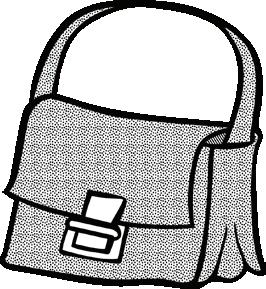
Sadness and shame are at the core of almost any addiction or compul sive behavior. Any kind of addictive behavior that ends up impacting our lives comes from a source, and that source is always sadness and shame, whether you're doing it to ease your heartbreak, pain, or anything you might be dealing with that is putting a strain on your mental health.
What is your advice for me and others with such an addiction? Do you think therapy is the best option, or should we just try to adopt better spending habits?
Therapy is great option for everyone, no matter what the problem might be. For you and others with a shopping addiction, the behaviors might be hard to identify as a shopping addiction be cause it might not be hurting you if you aren't hurting financially. But, as we all know, with more money comes more problems. Therapy is essential no matter who you are, where you live, or what you are currently going through. Everyone can use a little help from time to time, and there is no shame in finding it and receiving it as soon as you can.
The Lexington Line • A/W 22 • vol 9 • no 1 85

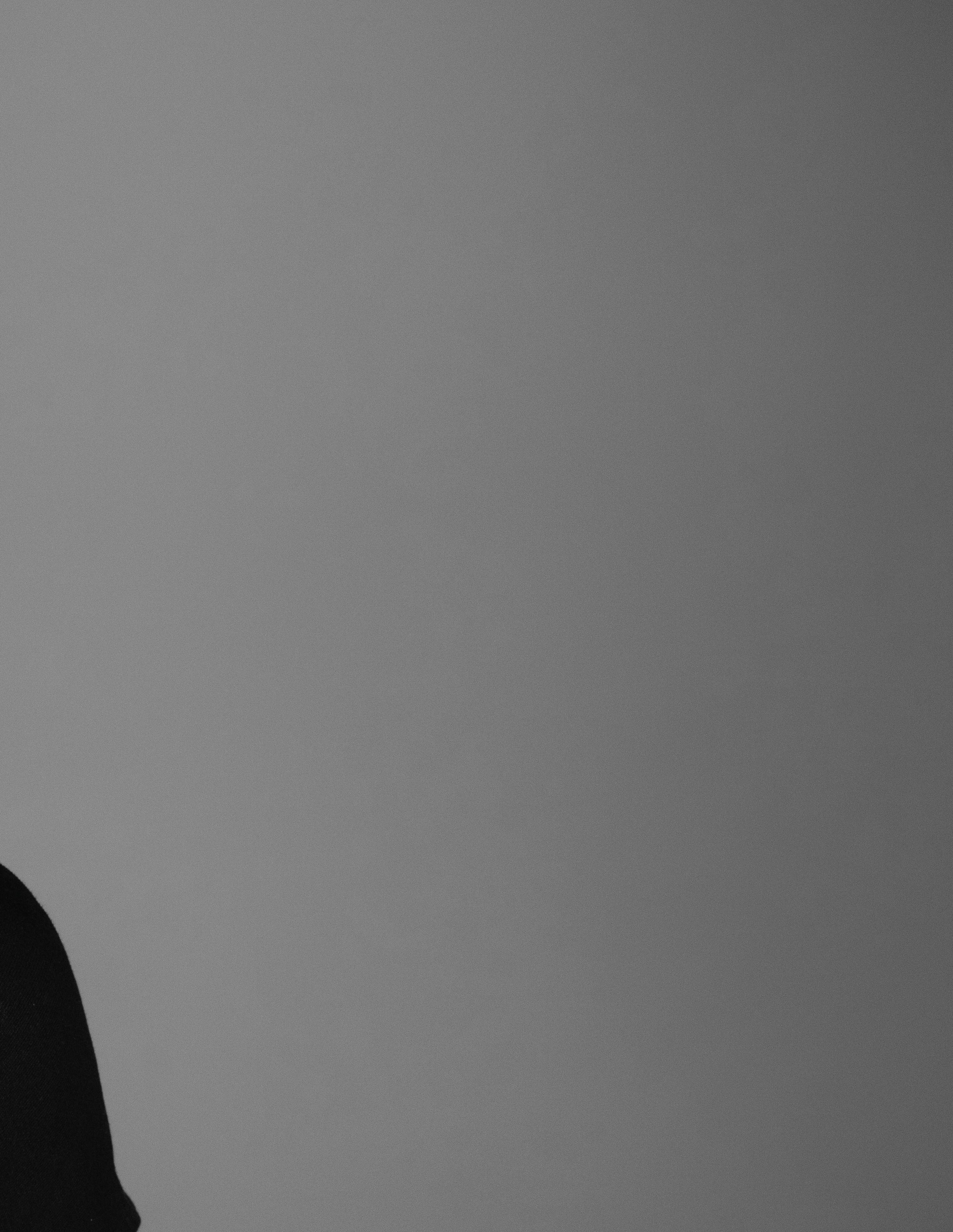
Carly
Dezire
Kye
Isabella
Emily
Photographers makeup & hair Creative direction Models Production Emma
Beauty Director &
The Lexington Line • A/W 22 • vol 9 • no 1 87
Catharsis Nicalina Del Rosario
Gabriel Jaedyn Frasnelli Claudine Lorico Emma DeFelice
Pestano
Copeman Baylee Poindexter Amanda Thompson Elara Montana
Ortiz
White
DeFelice
MUA

88 The Lexington Line • A/W 22 • vol 9 • no 1


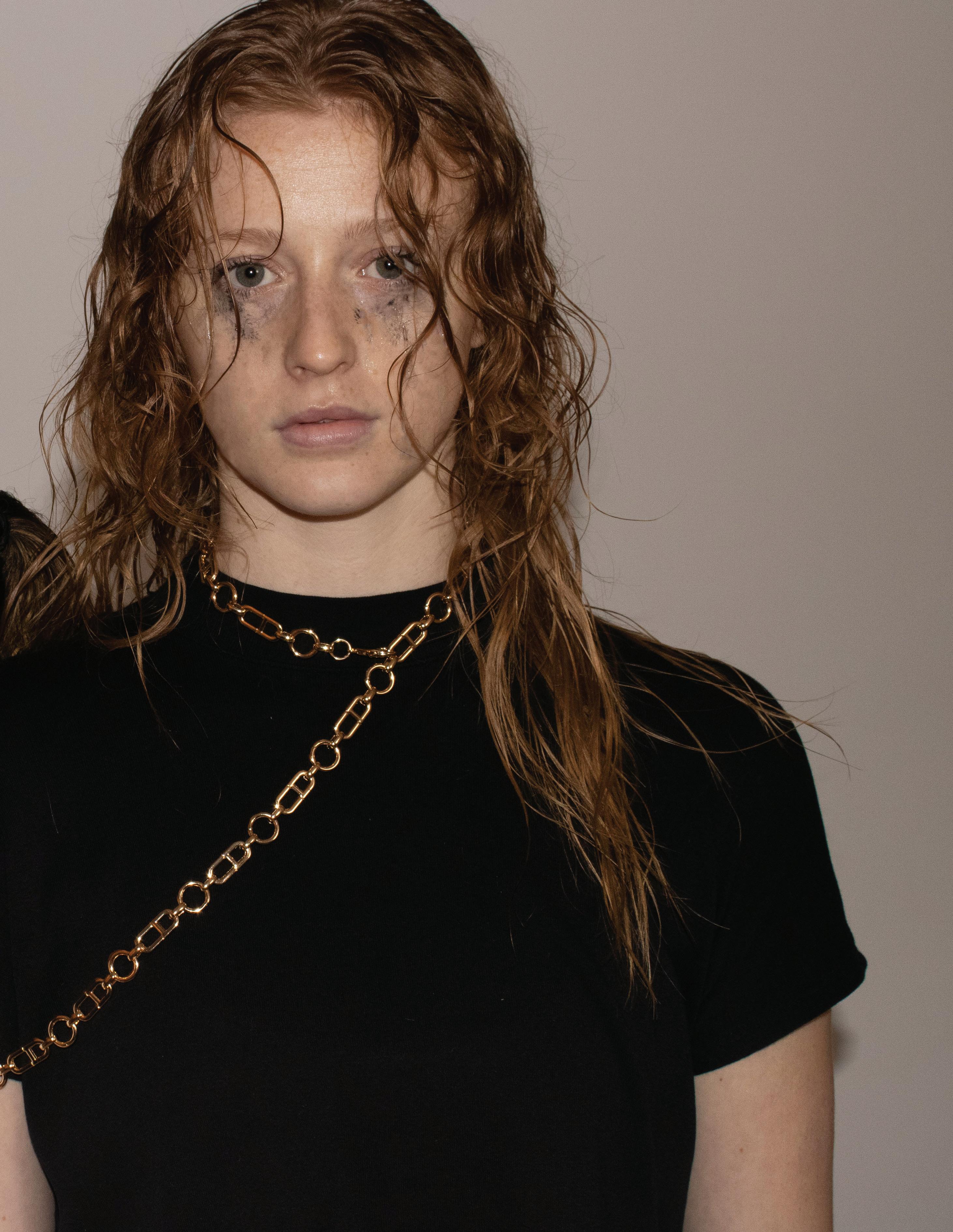
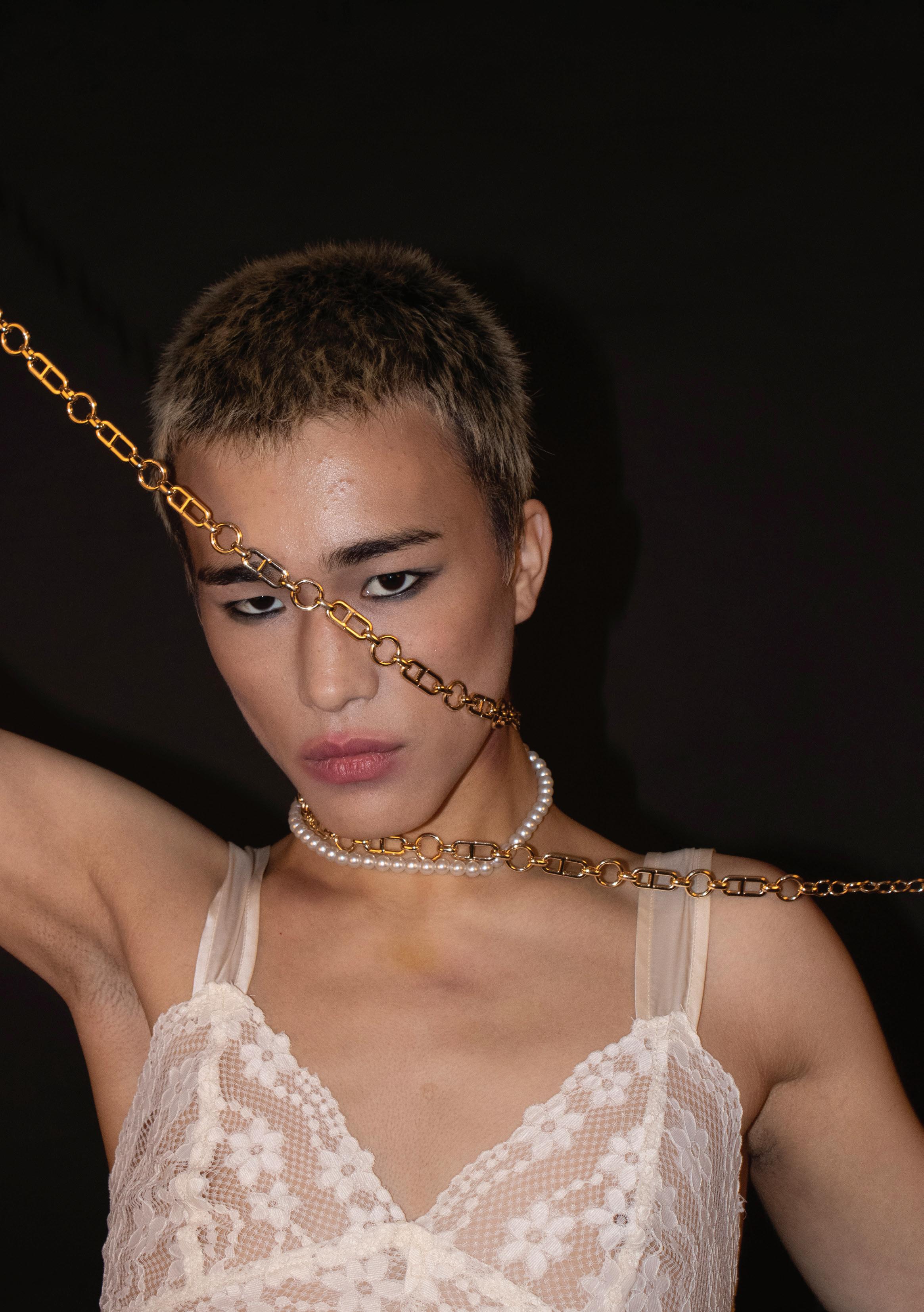

The Lexington Line • A/W 22 • vol 9 • no 1 93
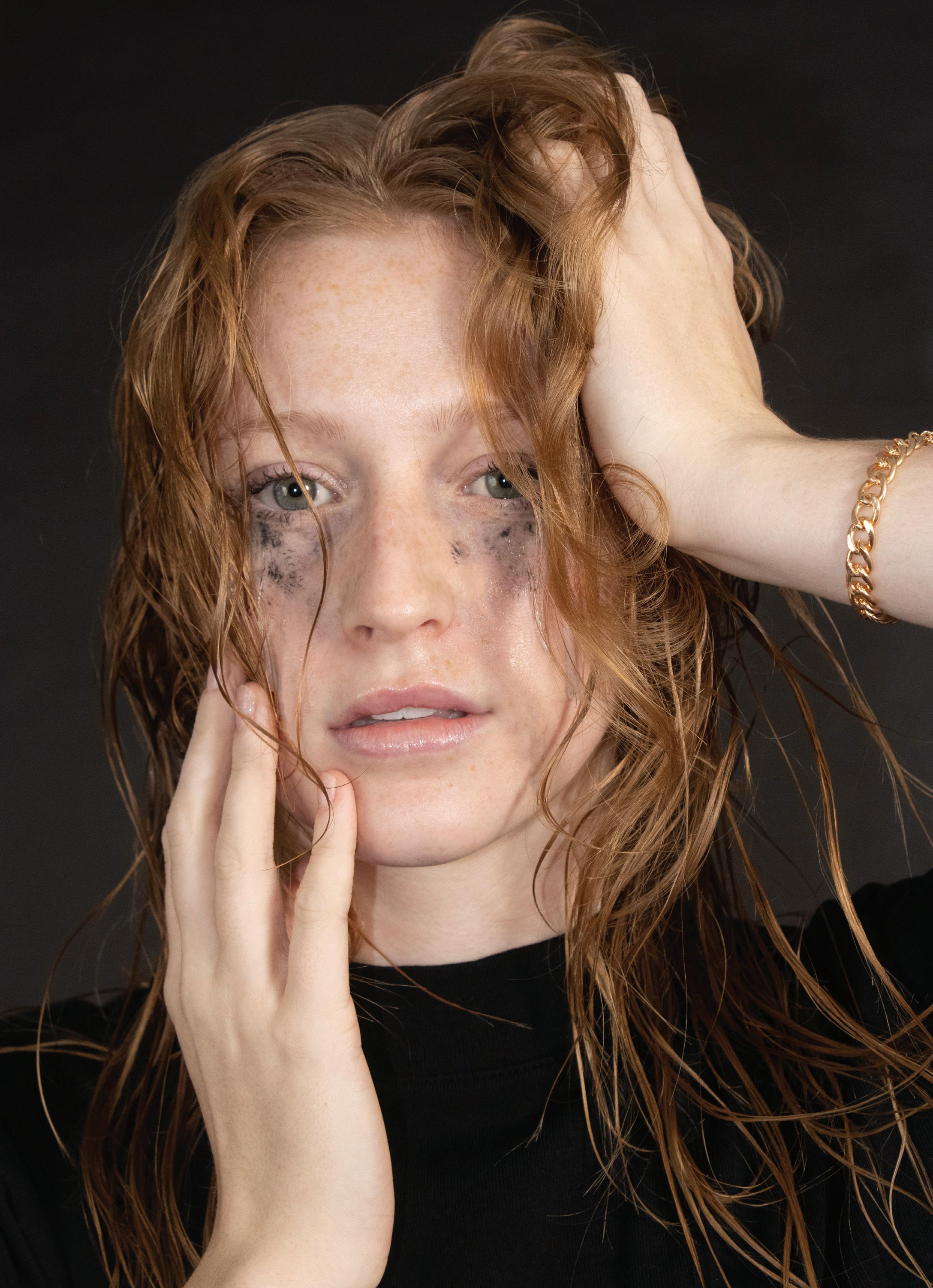
94 The Lexington Line • A/W 22 • vol 9 • no 1
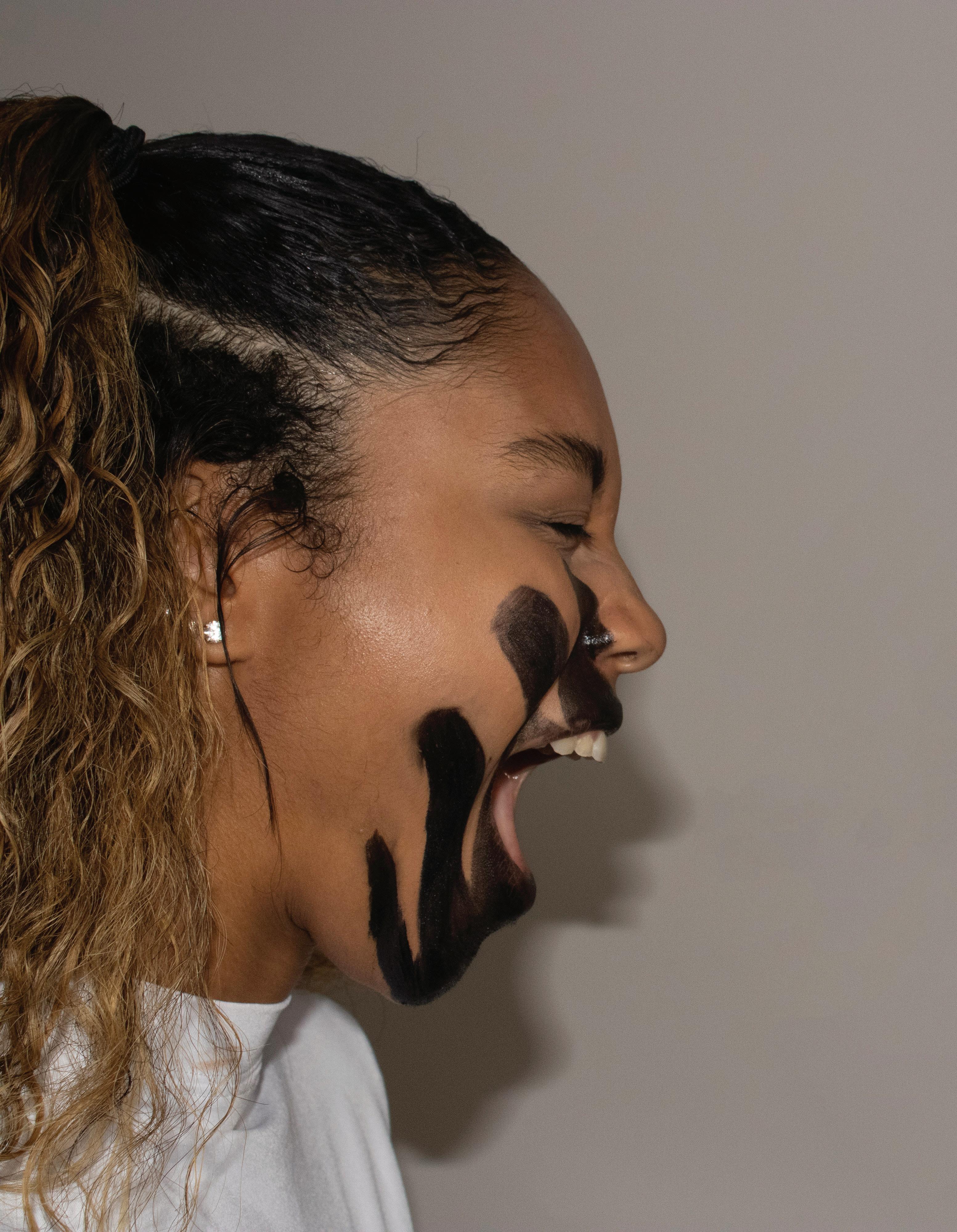
The Lexington Line • A/W 22 • vol 9 • no 1 95
Editors’ Picks

Hannah Szwast Managing

Editor
Trench Coat

The best thing I’ve done for my wardrobe is begin building an outerwear collection; specifically, an assortment of trench coats that cater to various occasions. With a few staple tones and silhouettes, I have the ability to elevate even the most dull autumn/winter look. Trench coats have become a part of my signature look; I truly wouldn’t be myself without one.
An Alternative Groove
As a diehard Tame Impala fan, has held a warm place in my kaleidoscope heart ever since its release. The creativity behind the chronology of each musical composition goes unmatched. The music will take you on an ethereal, psychedelic journey. And as an honorable Born to Die by Lana Del Rey, because it flawlessly romanticizes the beauty of femininity.

500 Days of Summer
While it may be a bit cliche, 500 Days of Summer never fails to be an incredibly delightful watch. The very realistic and relatable portrayal of hopeless romanticism is what keeps me coming back. Raw, unfiltered, and charismatic visual aesthetics is an additional reason why the film has captured my heart ever since the first watch.

Glossier Cloud Paint
For years, the Glossier Cloud Paint has been a core product in my beauty collection. From its extreme versatility to its everyday practicality I am obliged to give credit where it’s due. Whether I’m looking to enhance the appearance of my lips or emphasize the apples of my cheeks, the natural essence of the product and its simple application always leaves me reaching for it.

The World Atlas of Street Fashion
I would consider myself a nonfiction literature enthusiast that often turns to autobiographies and selfhelp books. I discovered The World Atlas of Street Fashion by Caroline Cox lying in the gift shop during a trip to the MoMa. This atlas does a deep dive into the history of each street fashion sector over the years, paying homage to the cultural roots of each trend. This book has been a phenomenal tool in my fashion school endeavors and the imaging throughout is fabulous!

96 The Lexington Line • A/W 22 • vol 9 • no 1
Is This It by The Strokes
It’s so difficult for me to choose one favorite album, as my music taste changes constantly depending on my mood. An album that I always find myself going back to would be Is This It by The Strokes. This album is such a staple for me as it holds so many great memories and always lightens my mood.

D.V. by Diana Vreeland
A book I have recently read is D.V. by Diana Vreeland. I highly recommend this autobiography as Diana tells you her stories of being in the fashion world. While reading this book I discovered how influential she was and how her legacy still lives.

La La Land
La La Land will always have a special place in my heart. Everything from the storyline to the visuals is just a masterpiece. This movie captures the reality of life in a dreamy way, you will definitely be on an emotional rollercoaster.
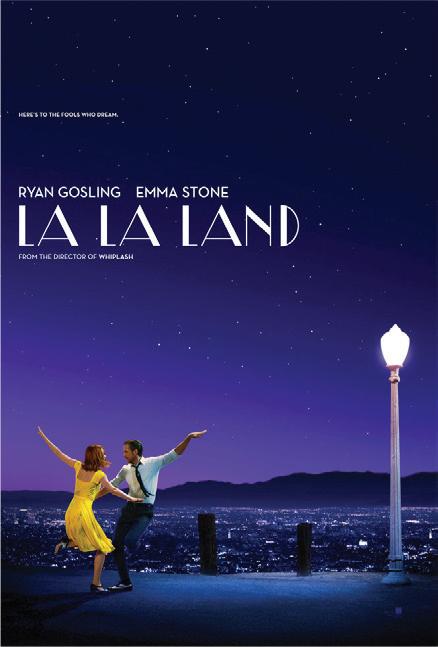
Editors’ Picks

Black Leather Blazer

80% of my outfits include my black leather blazer. A black leather blazer truly goes with almost everything and is such an easy way to elevate and dress you up . By just adding this one piece it can take a basic outfit and turn it into something cute and trendy.

Marc Jacobs AT LASH’D Mascara
My go-to mascara is Marc Jacobs AT LASH’D mascara. This gives my eyelashes the volume and length that I need, and I have yet to find another mascara that works as well as this.

Director
Styling
You Are Here

Whenever I finish a Thich Nhat Hanh book, I instantly look for another. Hanh was a Vietnamese Buddhist Monk who known as the “father of mindfulness.” I would say that all the books I’ve read are my favorite, each enlightening in its own way, but I will choose You Are Here, because it’s the one that led me down the rabbit hole in the first place.
Editors’ Picks

Ginger Rescue

Most people know I don’t go anywhere without ginger in my purse, and these tablets are chewable with a bit of a delicious kick. They are easy to put in any bag, whether it's my school tote or a mini-bag for a night out. Ginger is great for an upset stomach moment, and since these are an outing staple, I’m always ready for a girly in need.
Sofia naranjo Fashion Director

Interview Magazine
One of my little hobbies is exploring and collecting new or vintage magazines—especially Interview. Whenever a new issue is released, I skip to Casa Magazines on 8th Ave to pick up the newspaper-textured periodical and put time aside to read my news. Interview is fun, edgy, and transparent, and its design and photography are creative, especially the old illustrated covers.

Vintage Leather Jacket
My mom’s vintage leather jacket from the ‘90s is one of my favorites. She bought it when she was 21 and wore it in her early adventures, effortlessly embodying the grunge/Winona Ryder era. It was stored away, waiting for a new life when she handed it down to me almost three years ago, and I never miss a moment to showcase it. Truly a gem and sentimental piece.

98 The Lexington Line • A/W 22 • vol 9 • no 1
Channel Orange by Frank Ocean

The feelings and emotions in this album speak to me, and its backstory is inspirational and motivating. Something I would call a masterpiece. Absolutely adore Frank.
Go-To Beauty Combo

It's the perfect combo for a lightweight "no makeup, makeup look."


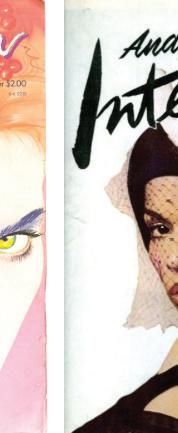
The Office

I love many shows, but The Office will always be #1. The comical and awkward scenes fill my heart—it is my comfort show.
Dear Nobody: The True Diary of Mary Rose
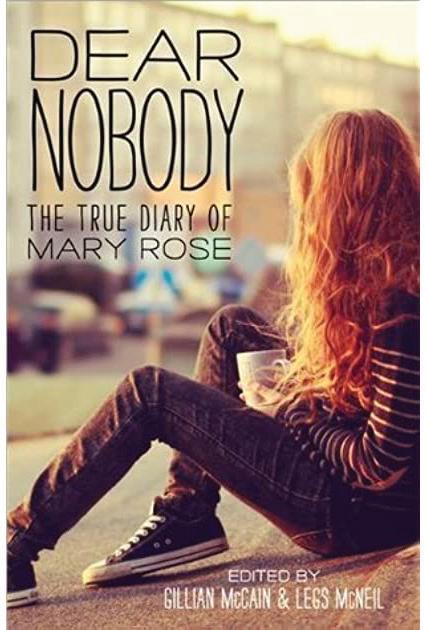
A very sad story, where you get to read the raw thoughts and emotions of a teenage girl battling with addiction and a desire to fit in. Definitely one to read.
Oversized Hooded Sweatshirt

Everyone needs something comfy and cozy to throw on. I pair it with everything.
Editors’ Picks

Web Creative director
Pallak Obhan class of 2022 student style
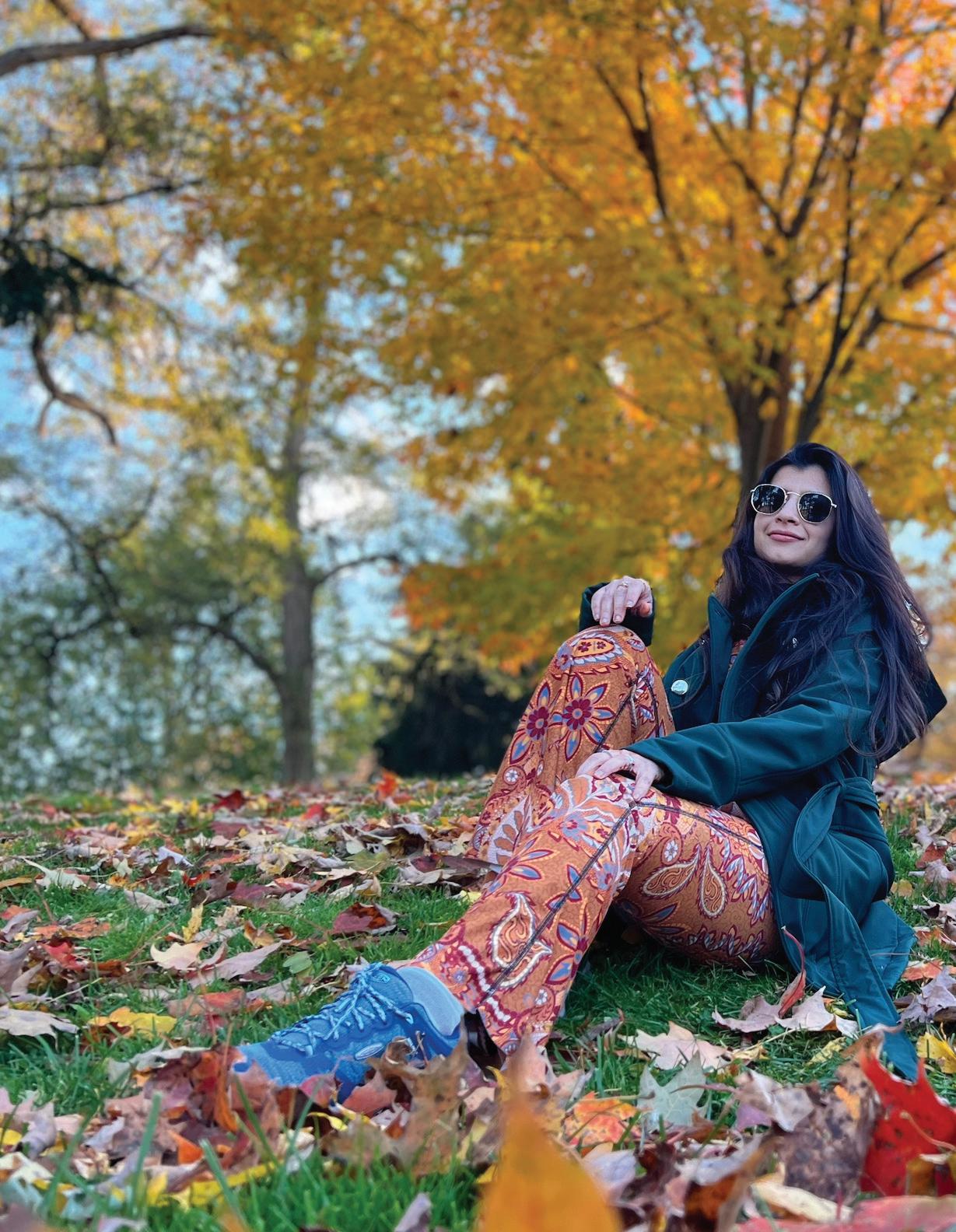
100 The Lexington Line • A/W 22 • vol 9 • no 1
student style
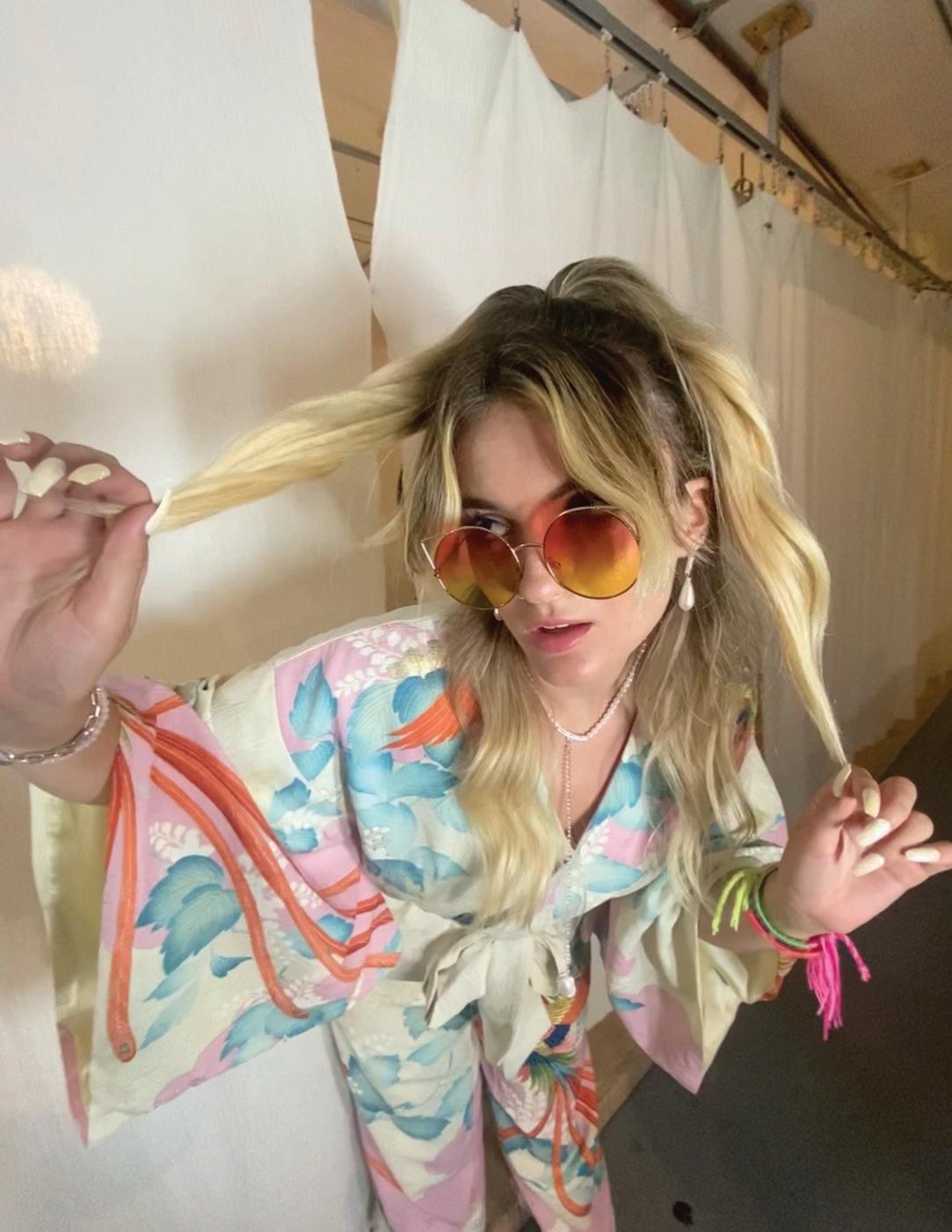
maharani anigacz class
2025
of
student style
Sydney roberts class of 2026

Mounika Katakam class of 2022
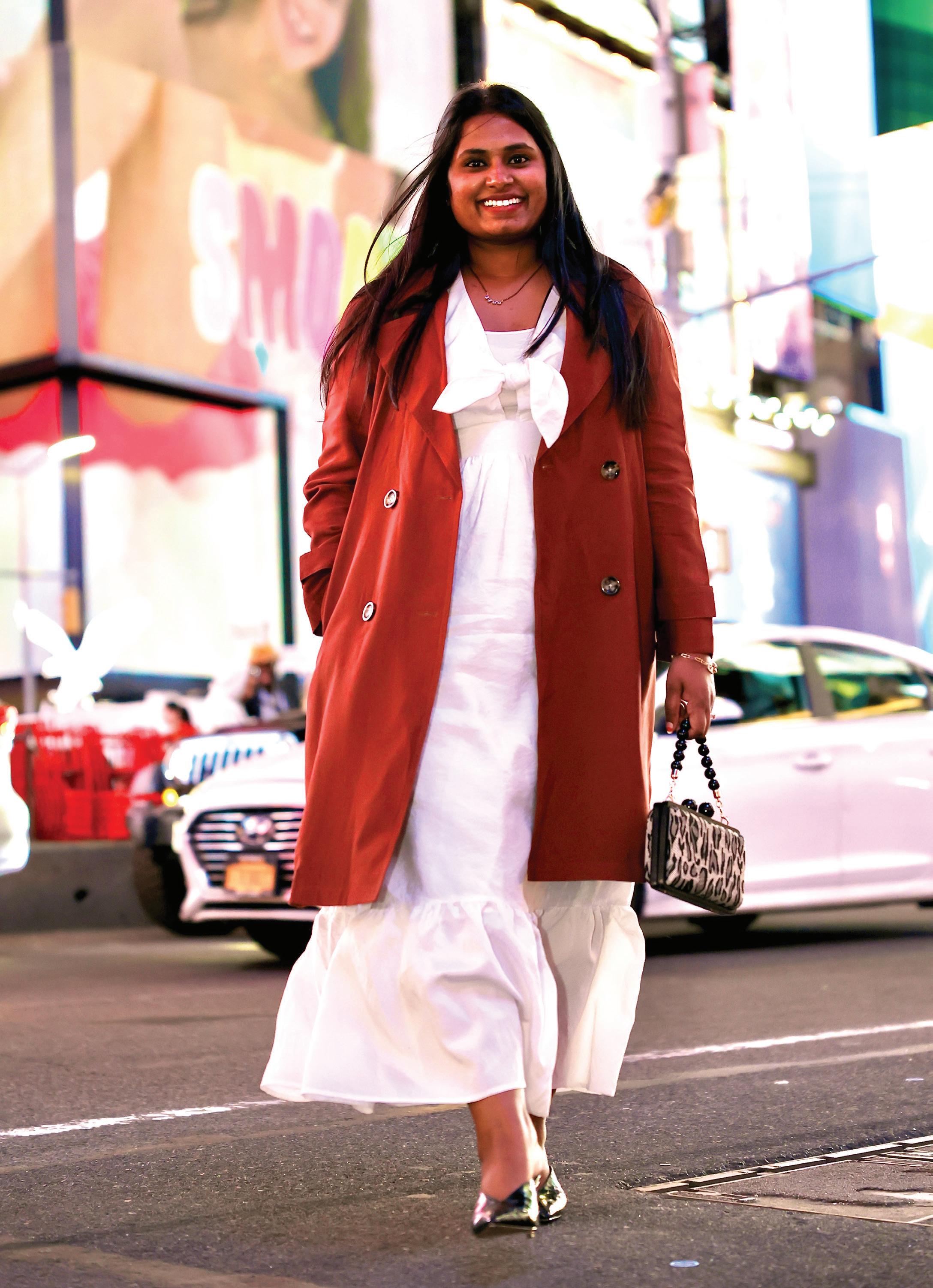
student style
The Lexington Line • A/W 22 • vol 9 • no 1 103
noah barker class of 2024 student style
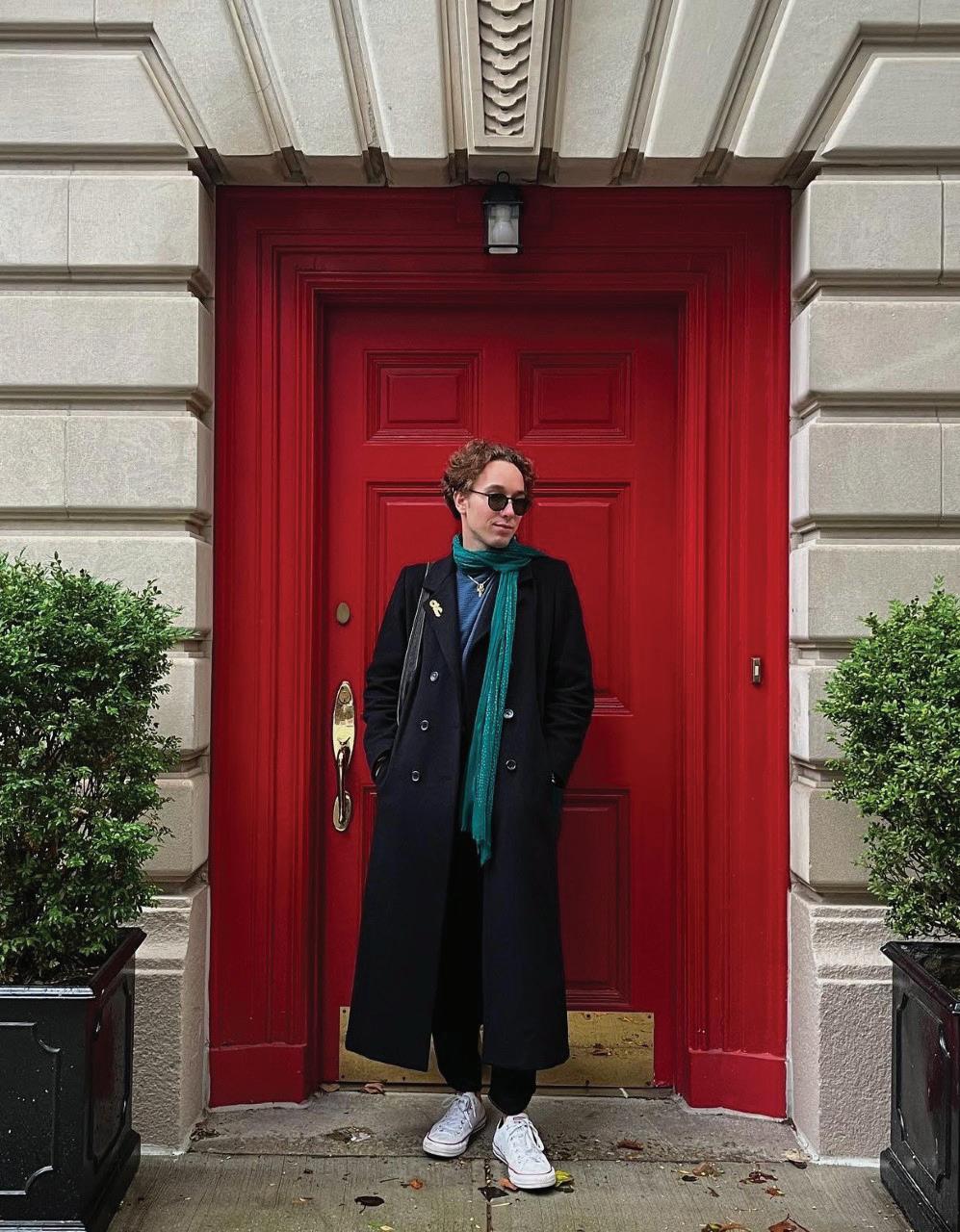
104 The Lexington Line • A/W 22 • vol 9 • no 1
student style
 Claudia Cela class of 2023
Claudia Cela class of 2023
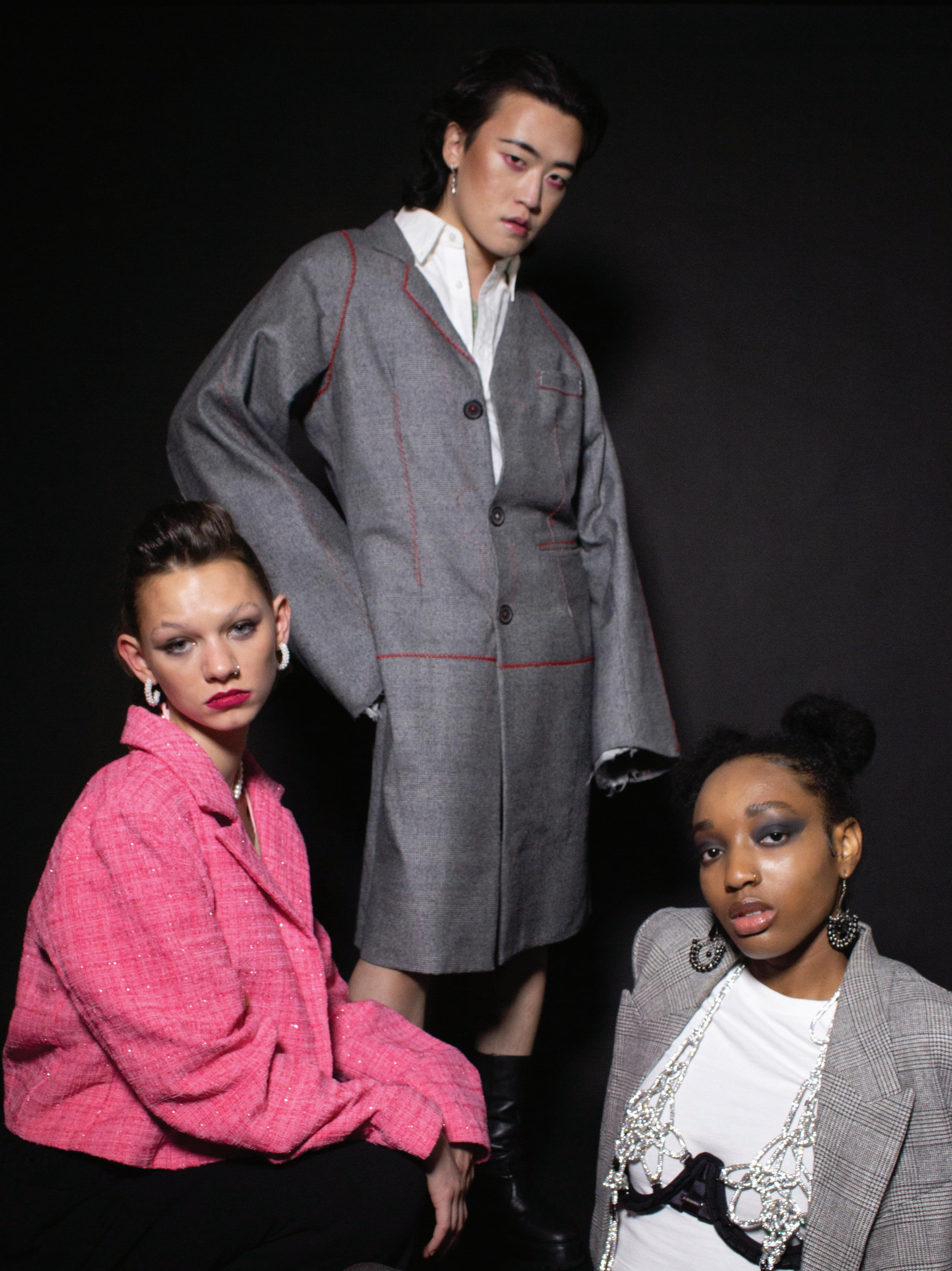



 White Editor in Chief
Hannah Szwast Managing Editor
White Editor in Chief
Hannah Szwast Managing Editor













 By: Emily White
By: Emily White






























































 by hannah Szwast
by hannah Szwast







 Written By Emily White Illustrated by Elara Montana
Written By Emily White Illustrated by Elara Montana


















 MODEL WEARS: Forever 21—Lace Top; Vintage Victoria's Secret—Slip Dress; Model's Own—Necklace
MODEL WEARS: Forever 21—Lace Top; Vintage Victoria's Secret—Slip Dress; Model's Own—Necklace













 MODEL LEFT WEARS: Bloomingdale's—Blazer; Emma Altman—Top; Zara—Skirt; Vivienne Westwood—Necklace
MODEL LEFT WEARS: Bloomingdale's—Blazer; Emma Altman—Top; Zara—Skirt; Vivienne Westwood—Necklace





 MODEL LEFT WEARS: Emma Altman—Top; Sara Fancy's—Skirt, Gloves
MODEL LEFT WEARS: Emma Altman—Top; Sara Fancy's—Skirt, Gloves











 By: Isabella Ortiz
By: Isabella Ortiz




















































 Claudia Cela class of 2023
Claudia Cela class of 2023
